dirty bomb
description: radiological weapon that combines radioactive material with conventional explosives to contaminate an area with radioactive material, serving primarily as an area denial device against civilians
109 results
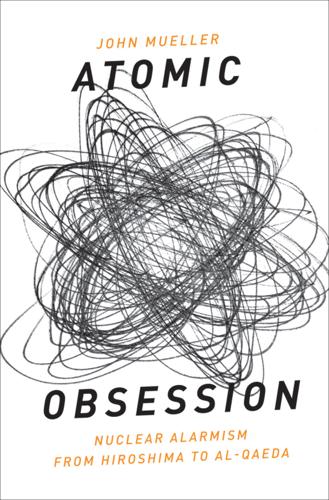
Atomic Obsession: Nuclear Alarmism From Hiroshima to Al-Qaeda
by
John Mueller
Published 1 Nov 2009
Where such particles descend in sufficient concentrations within this plume, exposed people could become ill or die from the radiation. People who remain anywhere within the plume area would likely stand an enhanced risk of contracting cancer in later years. Radioactive material could also be sprayed over a small area by a conventional explosion, a device routinely labeled a “dirty bomb.” Although radiation levels within an area affected, or contaminated, by fallout or a dirty bomb would eventually become safe by peacetime standards, it could take from two to ten years to do so, a process that could be speeded up by active decontamination procedures. However, “peacetime standards” are set at extremely conservative levels. Agencies have extrapolated down in a linear fashion from high radiation dose levels known to be harmful without conclusive evidence that this procedure is justified.
…
In the summary judgment of two careful analysts, delivering microbes and toxins over a wide area in the form most suitable for inflicting mass casualties—as an aerosol that could be inhaled—requires a delivery system of enormous sophistication, and even then effective dispersal could easily be disrupted by unfavorable environmental and meteorological conditions.27 Radiological weapons or “dirty bombs,” in which radioactive materials are sprayed over an area by a conventional explosion, are often called “the poor man’s nuclear weapon.” However, unlike the rich man’s version, they are incapable of inflicting much immediate damage at all. In fact, it would be almost impossible to disperse radioactive material from a dirty bomb explosion so that victims would absorb a lethal dose before being able to leave the area, and it is likely that few, if any, in the target area would be killed directly, become ill, or even have a measurably increased risk of cancer.28 Actually, most analysts consider radiological devices to be more nearly weapons of mass disruption than of mass destruction.
…
This concern is relevant not only to an atomic explosion, particularly a groundburst one, but also to the effects of a somewhat more likely “dirty bomb” explosion and of accidental radiation releases like ones that occurred in Brazil in 1987 from an abandoned medical instrument and in the Soviet Union in 1986 from a nuclear reactor meltdown. There are no immediate dangers from even fairly substantial increases in radiation, but people are simply not aware of that, and radiation fears may induce overly evasive behavior in the immediate and short term, and this should very much be a primary concern. In fact, if radiation levels are raised only somewhat above normal backgrounds levels in a small area by a dirty bomb, accident, or nuclear fallout, a common recommendation from nuclear scientists and engineers is that those exposed should calmly walk away.
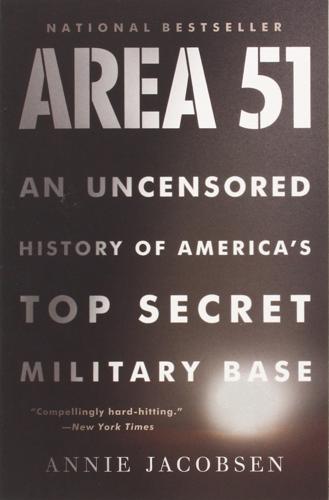
Area 51: An Uncensored History of America's Top Secret Military Base
by
Annie Jacobsen
Published 16 May 2011
In the twenty-first century, this kind of weapon would be referred to as a dirty bomb. The dirty bomb menace posed a growing threat to the internal security of the country, one the Pentagon wanted to make less severe by testing the nightmare scenario first. The organization needed to do this in a controlled environment, away from the urban masses, in total secrecy. No one outside the project, absolutely no one, could know. Officials from the Armed Forces Special Weapons Project decided that the perfect place to do this was Area 51, inside the Dreamland airspace, about four or five miles northwest of Groom Lake. If the dirty bomb was set off outside the legal perimeter of the Nevada Test Site, secrecy was all but guaranteed.
…
The single most worrisome question facing the Joint Chiefs of Staff at the time was: What if atomic energy propelled the Russian craft? Or worse, what if it dispersed radioactive particles, like a modern-day dirty bomb? In 1947, the United States believed it still had a monopoly on the atomic bomb as a deliverable weapon. But as early as June 1942, Hermann Göring, commander in chief of the Luftwaffe, had been overseeing the Third Reich’s research council on nuclear physics as a weapon in its development of an airplane called the Amerika Bomber, designed to drop a dirty bomb on New York City. Any number of those scientists could be working for the Russians. The Central Intelligence Group, the CIA’s institutional predecessor, did not yet know that a spy at Los Alamos National Laboratory, a man named Klaus Fuchs, had stolen bomb blueprints and given them to Stalin.
…
One of the most dangerous tests ever performed there was Project 57, the dirty bomb test that took place five miles northwest of Groom Lake, in a subparcel called Area 13. And yet what might have been the one defensible, positive outcome in this otherwise shockingly outrageous test—namely, lessons gleaned from its cleanup—was ignored until it was too late. Unlike the spy plane projects at Groom Lake, where operations tend to have clear-cut beginnings and ceremonious endings, Project 57 was abandoned midstream. If the point of setting off a dirty bomb in secret was to see what would happen if an airplane carrying a nuclear bomb crashed into the earth near where people lived, it follows that serious efforts would then be undertaken by the Atomic Energy Commission to learn how to clean up such a nightmare scenario after the catastrophe occurs.

50 Future Ideas You Really Need to Know
by
Richard Watson
Published 5 Nov 2013
Partly funded by the Department of Homeland Security, the new courses are intended to educate government officials and other managers about various first-response aspects of terrorism including crowd control, public health and dealing with the press. Clearly, it’s not the intention here to write a handbook for terrorists, but let’s stop to consider a few of the relatively well-known events that could, and probably will, happen in the not too distant future. Dirty bombs et al A “dirty bomb” is the term used to describe a conventional explosive device that also contains radioactive material. The power of the conventional explosion essentially vaporizes the radioactive material, which is then spread over a small area by the force of the blast. If it’s windy, the wind may then distribute the effects over a much wider area.
…
According to an International Atomic Energy Agency (IAEA) report, most major nations in the world hold some kind of radioactive material, and around 100 nations have weak or nonexistent controls to stop the stealing of these materials. “The era of nuclear terrorism has arrived.” Liam Fox, former British Defense Secretary A dirty bomb is not a weapon of mass destruction, but it is a weapon of mass distraction and disruption. Given the right payload, such a device could cause serious damage to the center of a major city and the anxiety it created would be considerable, having long-lasting effects, not least because you cannot see or smell the radioactive dust.
…
You could even spray a nonnuclear payload such as anthrax into the air via a small plane or radio-controlled Unmanned Aerial Vehicle (UAV) flying over a city, a technique not too dissimilar to that employed in the James Bond movie Goldfinger. Or you could just wait until a country such as the UK builds a national water-pipe network and pour something nasty in at one end. When, not if? A dirty bomb in a major city would inflict massive psychological damage. As for the use of a conventional nuclear weapon by a terrorist group, this is technically much more difficult and more likely to be delivered by a rogue state or deranged dictator. How might a democratic government respond to such an incident?
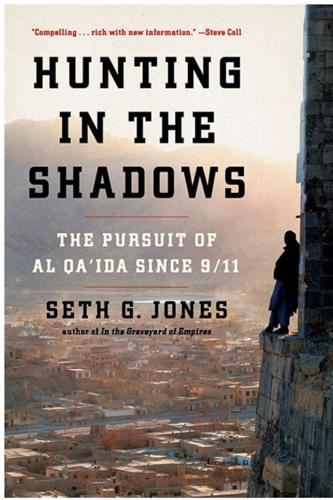
Hunting in the Shadows: The Pursuit of Al Qa'ida Since 9/11: The Pursuit of Al Qa'ida Since 9/11
by
Seth G. Jones
Published 29 Apr 2012
He was a tall, lanky Ethiopian national and a trained electrical engineer who had attended the al-Farouq camp with Padilla.39 Padilla and Binyam Muhammad approached Abu Zubaydah and proposed an operation that involved traveling to the United States and detonating a nuclear bomb. Zubaydah was skeptical of the idea. It is not feasible, he said, noting that Padilla didn’t have the physics background to pull it off. Their other idea, an explosive wrapped in uranium—a “dirty bomb”—was intriguing, Zubaydah remarked. But ultimately “the dirty bomb plan would not work either, could cause too much of a problem for al Qa’ida,” and “Khalid Sheikh Mohammed would not think it viable.”40 Plus, Zubaydah noted, the U.S. government would probably discover that radioactive material was missing from American laboratories before Padilla and Binyam Muhammad could execute the operation.
…
On February 16, an associate of Khalid Sheikh Mohammed arrived in Lahore and delivered $30,000 to Zubaydah.42 At the time, al Qa’ida operatives in Pakistan had noted the extensive discussion in the American press about the danger of a dirty bomb and were researching the possibility. Though al Qa’ida leaders were under enormous pressure in Pakistan, they remained resilient and adaptable. “The dirty bomb concept was receiving speculative coverage in the international media,” noted Zubaydah. “As a result, many other al Qa’ida brothers said openly that this was a very good idea and that such an attack would be very effective if conducted in a subway.”43 Still, Zubaydah continued to have reservations and wanted al Qa’ida’s most competent operative, Khalid Sheikh Mohammed, to evaluate both Padilla and the plot.
…
“As a result, many other al Qa’ida brothers said openly that this was a very good idea and that such an attack would be very effective if conducted in a subway.”43 Still, Zubaydah continued to have reservations and wanted al Qa’ida’s most competent operative, Khalid Sheikh Mohammed, to evaluate both Padilla and the plot. He wrote a reference letter for Padilla, explaining the dirty bomb project and arguing that it was impractical. But he asked Khalid Sheikh Mohammed to assess it anyway. Padilla traveled to Karachi in mid-March 2002 with Binyam Muhammad.44 They were taken to a safe house by Ammar al-Baluchi, Khalid Sheik Mohammed’s nephew, and presented their plans.45 Khalid Sheikh Mohammed was skeptical of the dirty bomb plot and suggested that Padilla and Binyam Muhammad undertake the apartment operation originally conceived by Muhammed Atef. “Once in the U.S.,” he explained, Padilla and Binyam Muhammad were “to locate as many as three high-rise apartment buildings which had natural gas supplied to the floors.
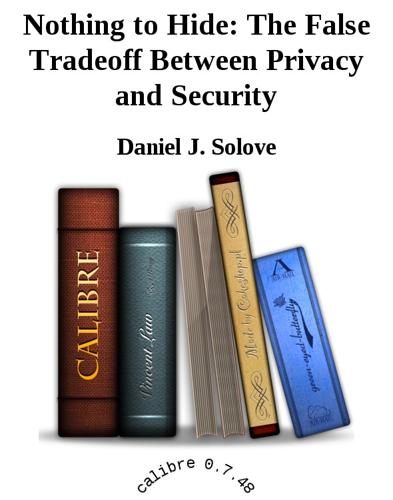
Nothing to Hide: The False Tradeoff Between Privacy and Security
by
Daniel J. Solove
Published 28 Jun 2011
The crime, though, wasn’t categorized as a national-security matter even though it involved guns, terror, mass murder, bombs, and suicidal perpetrators. In contrast, in 2002, the government suspected José Padilla of plotting to detonate a “dirty bomb” (a bomb with radioactive material) in a major city. He was designated an “enemy combatant” and detained and tortured for years without being charged with a crime or accorded the right to a hearing. Ultimately, the dirty-bomb allegations were dropped, and he was convicted of conspiracy to provide material support to terrorists and sentenced to seventeen years in prison.7 Padilla was a U.S. citizen. Why was his crime deemed a national-security issue while the Columbine rampage wasn’t?
…
Lack of Proportionality The exclusionary rule lacks any sense of proportionality. No matter whether the tainted evidence points to a heinous crime or a 139 Constitutional Rights minor infraction, the exclusionary rule works like a cleaver, chopping off evidence without any balance or consideration of the costs. Imagine a terrorist plans to destroy New York City with a dirty bomb. The police search the terrorist’s home and find bomb components. But they make a minor blunder, and as a result, the search is invalid. With the exclusionary rule, the evidence will be excluded, even though the terrorist could have annihilated an entire city. Preventing the Fourth Amendment violation hardly seems worth the cost of excluding the evidence.
…
See also specific courts and cases credit card records, 3, 31, 82, 103, 110 crime, 64–66, 71–80, 109; DNA evidence, 111–13, 118, 119–21; -espionage distinction, 71–80; exclusionary rule, 134–45; suspicionless-searches argument, 123–33; video surveillance, 179–80 Crime Beat (TV show), 179 criminal procedure, 8–9, 109, 226n22; First Amendment, 146–52; 1960s revolution, 8–9 237 Index crisis, times of, 13, 15–16, 53–90; crime-espionage distinction, 71–80; law on national security in, 53–90; national-security argument, 62–70; pendulum argument, 55–61; warpowers argument and rule of law, 81–90 cryptology, 8 Cuddihy, William, 119 data mining, 2, 12, 125, 182–98; due process, 191–93; equality, 190–91; First Amendment concerns, 189–90; inaccuracy, 186–89; problems of, 185–94, 198; third party doctrine, 102–110; TIA program, 183–85; transparency, 193–94 deference, 38–46, 64, 83; danger of, 38–46 democracy, 1, 27, 41, 86 Democratic Party, 10 Department of Defense (DOD), 183, 184 Department of Homeland Security (DHS), 3, 12, 123, 200, 201 Department of Justice (DOJ), 5, 155 Dewey, John, 24, 49–50 digital records, 11, 102–110; law-andtechnology problem, 164–73; third party doctrine, 102–110. See also computers; Internet; new technology dirty bombs, 65 distortion, 28–29 DNA, 199; biometric identification, 199, 202, 203; evidence, 111–13, 118–21 Douglas, William, 7 dragnets, 128–29, 132 drugs, 5, 128, 129, 132, 137, 225n15 due process, 28, 40, 60, 191–93 Dürrenmatt, Friedrich, Traps, 23 Einstein, Albert, 7 Electronic Communications Privacy Act (ECPA), 11, 12, 13, 73–74, 77, 88, 157, 167, 171, 176, 219n4 electronic communications service (ECS), 169, 170 electronic surveillance law, 11, 73–74, 88, 157–62, 164–73, 175–78, 231nn7–8 Ellsberg, Daniel, 66–67 El-Masri, Khaled, 67–68 email, 11; privacy, 156–62, 164–73; protection, 167–70 Emerson, Thomas, 48 employment records, 31 Enemy of the State (film), 174 Entick, John, 148 Entick v.
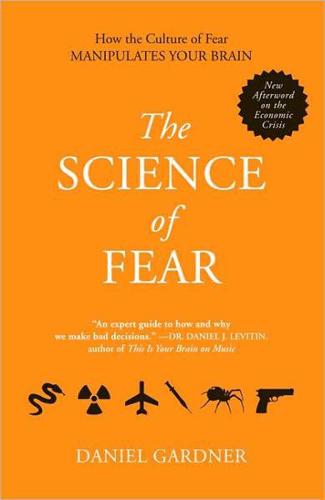
The Science of Fear: How the Culture of Fear Manipulates Your Brain
by
Daniel Gardner
Published 23 Jun 2009
Timothy McVeigh tore an office building in half with a bomb made of fertilizer (which does not qualify as a weapon of mass destruction) while the victims of mustard gas (which is a weapon of mass destruction) typically suffer only agonizing blisters. As for the much-hyped “dirty bomb”—a conventional explosive that also spreads radioactive material—it is usually classed as a WMD because of the radioactive material, but according to the CDC, the levels of radioactivity released by a dirty bomb are unlikely to be high enough to cause severe sickness, let alone death—and so it is the old-fashioned explosive that is the most dangerous part of the device. 261: “. . . referred to terrorism as ‘an existential threat to the whole of the human family.’”
…
Most notoriously, when Jose Padilla, an American citizen and Muslim convert, was arrested in May 2002, the Bush administration triumphantly proclaimed that Padilla had been part of a plot to explode a so-called dirty bomb. It was huge news all over the world. Held incommunicado, Padilla sat in limbo. Then, two years later, the Justice Department quietly acknowledged that Padilla had not been planning to explode a dirty bomb. The plot was to turn on the gas in an apartment and ignite it, the department alleged. What had been waved about as proof of terrorists on the cusp of deploying weapons of mass destruction turned out to be nothing more than allegations of a minor, bumbling plot that came to nothing.
…
Politicians, pundits, and experts talked about terrorism as if it were the Fifth Horseman of the Apocalypse. Death and destruction could come countless ways, we were warned: poison in town water supplies, planes crashing into nuclear reactors, genetically engineered smallpox virus unleashed in the subway, dirty bombs, suitcase nukes in the hold of some anonymous cargo ship. Then came the news that several people had been killed by anthrax-infected mail. Anthrax. No one saw that coming. Months before, we were safe and prosperous. Suddenly, we were butterflies in a gale. Grim-faced politicians advised everyone to pay attention to color-coded terror alerts.

The Future of Fusion Energy
by
Jason Parisi
and
Justin Ball
Published 18 Dec 2018
Because U-233 has few advantages relative to Pu-239, but has the disadvantage of a 50% higher critical mass, it is rarely used in weapons. 10.2.3Weapon designs After obtaining the fissile material, making a crude nuclear bomb is relatively easy.20 However, there are different levels of sophistication in nuclear weapon designs. But before we get to actual nuclear weapons, we must start with a simpler alternative: so-called dirty bombs. Strictly speaking, dirty bombs are not nuclear weapons because their explosion isn’t driven by nuclear energy. Rather, they are conventional bombs that include radioactive material. Hence, dirty bombs have nowhere near the destructive power of nuclear weapons. Moreover, it is difficult to imagine a dirty bomb that causes widespread illness or loss of life from the radioactive material. The vast majority of the damage would be done by the conventional explosion.
…
Index A agriculturalists energy sources, 4 air conditioners, 12 Al-Qaeda, 308 Alcator C-Mod, 231, 280, 301, 361 Alpha Centauri, 348 aneutronic see p-B, 292 ARC, 248 Argentina see Ronald, 179 Arkhipov, Vasili, 305 arsenals by country nuclear weapons, 304 ASDEX-U, 129, 193, 277 Aston, Francis, 177 atmospheric pollution, 238 B B-59 submarine, 305 bald spot, 103 banana orbits see super-bananas, 118, 190 baseload sources, 46 bell curve, 39, 83 Bell Telephone Laboratory, 184 Beria, Lavrenti, 189 beryllium, 162, 224, 324 Bethe, Hans, 178 Big Bang, 12 binding energy, 70–71 biomass, 35 Boeing 747 airplane, 353 Boltzmann constant, 69 bootstrap current, 189 bootstrap multiplication see bootstrap current, 254 brains, 59 bravery, 59, 335 brawn, 59 breakeven, 135 Breakthrough Starshot, 353 breeder reactors, 26, 330 fuelling proliferation, 333 bremsstrahlung see p-B, 293 burning plasma see ignition, breakeven, triple product, Lawson criteria, 136, 214 C C-2U, 278 Californium, 316 CANDU reactors, 327 capital cost, 240 carbon capture and storage, 39 Carnot limit, 31 catalyzed D–D fuel cycle, 85, 355 central solenoid, 145, 283 chain reaction, 314 chemical propulsion, 352 Chernobyl, 24 Chicago Pile-1, 311 classical transport, 123 climate change, 238–239 CNO cycle see stars, Bethe, Hans, 178 cold fusion, 77 Commonwealth Fusion Systems, 301 confinement, 82 electrostatic, 112 empirical scaling laws, 251 energy confinement time, 90 toroidal magnetic, 109 volume to surface area ratio argument, 256 conservation of momentum, 349 frozen lake argument, 350 convective eddies, 32 conventional spacecraft, 350 Coriolis force, 32 cost of electricity, 239 critical mass, 315 cross-section, 77–78 Cuban Missile Crisis, 304 current drive, 144 electron cyclotron, 152 electromagnetic wave, 150 inductive, 145 neutral beam, 148 cusp geometry see Lockheed Martin, 288 D D–3He fusion, 85, 300, 354 D–D fusion, 20, 85, 202, 301, 354 D–T fusion, 20, 83, 161, 202, 269, 281, 287, 292, 337 Darwin, Charles, 175 Debye length, 99 dense plasma focus see Lawrenceville plasma physics, 297 deuterium abundance on Earth, 22 diagnostics, 164–165 diffusion see random walk diffusion, 123 DIII-D, 277 direct drive see indirect drive, inertial confinement fusion, 272 dirty bombs, 321 dispatchable sources, 46 disruptions, 153–154, 222, 244, 267 mitigating, 155 divertor, 157, 194, 220, 256 double-edged sword nuclear energy as blueprint, 345 nuclear physics, 310 technologies, 311 E early hominids, 3 Earth–Moon system, 16, 41 Eddington, Arthur, 178 edge localized modes see ELMs, 194 Edison, Thomas, 6 electric field, 94, 150 electromagnetic force, 74 electromagnetic induction, 5, 12 electromagnetic repulsion, 67 electromagnetic waves, 269 electromagnetism, 90 electromagnets, 93 electrons, 65 in light bulbs, 6 electrostatic, 95 ELMs, 194, 222 ELMO bumpy torus, 114 empirical scaling law, 130, 251 enrichment, 333 energy conservation of, 11 flows of, 13 energy hierarchy, 58 energy storage, 50 Enola Gay, 305 entropy, 11 EPED, 197 exhaust velocity, 350 expanding electrical grids, 54 external power, 249 F Faraday, Michael, 5 Fat Man, 305 fissiled percent, 322 fertile material, 330 field-reversed configuration, 290 first wall, 153, 222 fission proliferation, 333 fission reactors, 325 climate versus nuclear security tradeoff, 335 fission–fusion hybrids, 332 flow, 197, 245 Fokker–Planck simulations see gyrokinetics, 209 formation of fossil fuels, 37 Forrest, Michael, 188–189 fossil fuels, 37 Fukushima, 24 fusion, 13, 16, 19 enrichment in fusion blanket, 337 proliferation, 336 fusion fuels, 83 fusion power density, 243 fusion reactor design, 237 disabling a proliferator, 338 small fusion system, 339 smallest planned, 159 timescale for blanket proliferation ramp-up, 340 fusion thruster, 354 G gas centrifuges, 318 gaseous diffusion, 317 General Atomics, 198, 279 General Fusion, 284 geopolitics, 343 geothermal, 16, 27 global zero, 343 gravitational confinement, 89 gravity, 13, 89 gravity-assist, 351 Greenwald limit, 251 gun-type bomb, 323 gyrokinetic simulations, 252 gyrokinetics, 206, 252 scale separation, 207 gyroradius, 92 H H-mode, 130, 193, 206, 252 hairy ball theorem, 103 Halite-Centurion, 274 half-life, 20 Harwell, 187 heat death of the Universe, 12 heat flux, 221 heating, 14, 218 electron cyclotron, 152 ion cyclotron, 152 heavy element synthesis, 15 heavy elements, 16 heavy water reactors, 327 Heisenberg’s Uncertainty Principle, 79 Helion Energy, 300 heliotron, 114 helium-3 abundance, 354 hex, 317 Hiroshima, 322, 336 hohlraum see inertial confinement fusion, 272 hydroelectric, 39 hydrogen bomb, 89, 304, 324 hydropower, 17 I IAEA, 334, 339 ignition, 131, 250, 269 MCF and ICF ignition differences, 274 implosion bomb, 323 inboard see torus terminology, 110 indirect drive see direct drive, inertial confinement fusion, 272 inductive heating, 147 Industrial Revolution, 4 inertial confinement fusion, 269 weaponization propspects, 271 intercontinental ballistic missiles see ICBM, 309 intercontinental electrical grids, 55 Intergovernmental Panel on Climate Change, 9 internal transport barriers see pedestal, 196 intermittency, 30, 46 INTOR, 225 IPA, 278 Iron Curtain, 181 isotopes, 20, 73 isotope effect, 204 isotopic semantics, 73 ITER, 137, 203, 211, 237, 248, 257, 273, 302, 353, 361 ignition, 214 Q, 213 strategy, 216 Ivy Mike, 304 J JET, 140, 155, 169, 198, 200, 260, 273, 277 jet engine, 349 JT-60, 260 JT-60SA, 140, 169, 361 JT-60U, 140, 277, 361 Juno spacecraft, 347 K K-DEMO, 361 Kelvin, Lord, 177 Khrushchev, Nikita, 187 kink limit, 246 Kremlin, 186 Kurchatov, Igor, 188 Kurchatov Institute, 185 L L-mode, 193, 252 Lamb, Horace, 127 Landau energy levels, 298 Landau damping, 151 Landau, Lev, 151 Langmuir, Irving, 165 Langmuir probes, 165 laser enrichment, 320 lattice structure, 156 Lavrentyev, Oleg, 186 Lawrenceville Plasma Physics, 296 Lawson criterion see triple product, 131, 324 Lawson, John, 131 levitated dipole, 114 limiter see divertor, 157, 194 linear magnetic, 100 lithium, 21, 242 lithium pebbles, 163 lithium-6, 84, 161 lithium-7, 161 lithium-ion batteries, 22, 51 Little Boy fissiled percent, 322 Lockheed Martin, 287 Lufthansa Flight 181, 199 M magnet(s), 139 permanent, 93 magnetic confinement fusion, 247 magnetic field, 91, 150, 247 magnetic islands, 117, 265 magnetic mirror, 100, 355 magnetic surfaces, 114, 144, 158, 191, 265 open versus closed, 158 magnetized target fusion see MTF, 284 magnetohydrodynamics see MHD, 121 Manhattan Project, 318 Mars, 347 mass–energy equivalence, 77 material survivability, 255 matter–antimatter annihilation, 352 mechanical stress, 142, 283 Mercury, 181 Mercury laser see NIF, 276 messy engineering endeavor, 259 MHD, 209, 246 MHD stability, 153 mini-golf, 68 Mini-Sphere, 278 MIT, 301 Model C stellarator, 189 moderator, 326 Moore’s Law see triple product, 136, 205 MRI machines, 140 MTF, 284, 300 Munich, 199 N Nagasaki, 305, 322 neoclassical transport, 126, 265 net electric power, 241–242 net electricity, 169 neutral beam, 220 negative ion acceleration, 220 neutral beams, 291 efficiency, 149 neutron capture cross-section, 331 neutron flux, 156 neutron multiplication, 224 neutron multiplication factor, 162 neutron multipliers, 162 neutron shielding, 292 New York Times, 180 NIF, 273, 336 niobium–titanium, 184 niobium–tin, 184, 248 Nixon, Richard, 224 Nobel Peace Prize, 186 Nobel Prize, 183 non-inductive see current drive; neutral beam, 149 non-renewable, 19 North Korea, 339 nucleons, 65 nuclear energy transition, 341 nuclear fission, 16, 23 nuclear proliferation, 238, 359 nuclear potential, 66 nuclear security, 336 nuclear weapon, 303 boosted implosion bomb, 323 defenses, 309 gun-type bomb, 322 hydrogen bomb, 323 implosion bomb, 322 inspectors, 340 neutron initiator, 324 proliferation with increased tritium availability, 342 significant quantity, 334 tamper, 322 Teller–Ulam design, 325 weapon designs, 321 yield, 303 nuclear winter, 308 O ocean waves, 44 Onnes, Heike, 181 outboard see torus terminology, 110 Oxford, 199 P p-B fusion, 290 particle drifts, 104 E × B drift, 106, 128 B drift, 106, 194 curvature drift, 106 Pauli exclusion principle, 183 pedestal, 193 Pelamis, 46 Perhapsatron, 114, 181, 285 photosynthesis, 35 plasma, 86 plasma current, 114, 264 maximization, 246 plasma flow, 197, 245 plasma gain, 169 plasma heating, 144 plasma power engineering multiplication factor, 170 plasma power multiplication factor, 135 plasma pressure, 244 plasma shaping, 198 Pluto, 321, 347 plutonium, 90 plutonium-239, 25 production, 320 reactor-grade, 329 weapons-grade, 321 poloidal field coils, 144 poloidal see torus terminology, 110 polonium-210, 162 power multiplication, 170 Princeton, 189, 198 Princeton University, 180 profits, 238 proliferation, 333 propellant, 349 proton–proton chain see CNO cycle, stars, Bethe, Hans, 179 proton–proton fusion, 28 public relations, 359 pure fission weapons, 325 Q quasineutrality, 97–98, 150 R radioactive waste, 167 random walk diffusion, 123 rate of energy consumption, 18 Rayleigh–Taylor instability, 271, 285 remote maintenance system, 204 renewable, 19, 57 resistivity, 141 Richter, Ronald, 179, 187 right-hand rule, 93 robotic maintenance, 169, 257 rocket equation, 351 role model effect of fusion technology, 344 S safety factor, 115 Sakharov, Andrei, 186 Saturn, 347 scattering collision, 67 scientific notation, 26 seasonal energy storage, 52 Seebeck effect, 6 seeds, 35 shaping, 198 D-shape, 198 shattered pellet injection see disruptions, 156 significant quantity, 340 solar, 16, 28 Solar System, 17, 348 energy flows, 15 space capsules see divertor, 160 space colonization, 349 SPARC, 301 spent fuel current world production, 334 spherical tokamaks, 281 spheromak, 114, 287 Spitzer, Lyman, 113, 180, 263 ST40, 278 Stalin, Joseph, 187 stars, 175 possible fusion reactions, 178 red giant phase, 15 steam engine, 4 steam turbine, 6 stellarator(s), 114, 263 ignited, 267 stochastic regions, 117, 265 strong nuclear force, 66 Sun, 347 lifetime of, 176 super-bananas see banana orbits, 118 super-duper H-mode, 259 supercomputers, 204 superconductivity, 141, 181, 248 Cooper pairs, 183 type I, 184 type II, 184 superconductor, 283 high-temperature, 185, 283, 301 REBCO, 186 materials, 182 problem with neutrons, 163 supernovae, 14–15 surface-to-air missiles, 309 Sword of Damocles, 306 Symmetric Tokamak, 189 T T-1, 188 T-3, 113, 189, 263, 278 T-7, 185 T4, 278 TAE Technologies, 280, 290 Tamm, Igor, 186 TCV, 201, 280 technetium, 24 temperature, 83 TFTR, 203, 277 tritium detection, 339 thermal equilibrium, 82 thermodynamic efficiency, 31 thermonuclear bomb see nuclear weapons — hydrogen bomb, 324 thermotron, 180 Thor, 110 Thomson scattering, 166 thorium, 321 Three Mile Island, 24 tidal, 16, 41 TNT, 304 toast making of, 7 tokamak, 113 Tokamak Energy Ltd., 281 Tore Supra, 141 toroidal torus terminology, 110 toroidal field, 140 toroidal field coils, 198 toroidal symmetry, 264 torsatron, 114 torus, 104 torus terminology, 110 trapped particles, 118 TRIAM-1M, 185 Trinity, 303, 344 triple product, 135, 267 tritium, 20, 161, 338 cost, 202 current reserves, 341 detecting use in fusion reactor, 339 increased availability proliferation risk, 342 tritium breeding, 215 tritium breeding blanket, 160, 247 Troyon limit, 243, 282 game of chicken, 244 violation, 245 Tsar Bomba, 304 Tuck, James, 181 tungsten, 224 turbulence, 206, 255 turbulent eddy, 128, 197 turbulent transport, 126 U U.S.S.

AIQ: How People and Machines Are Smarter Together
by
Nick Polson
and
James Scott
Published 14 May 2018
Sniffing for Gamma Rays and Gas Leaks One of the people they toast might soon be Alex Reinhart, a PhD student in statistics at Carnegie Mellon University who is working on a new anomaly-detection system that may someday help law enforcement officers sniff out one of the most odious of all terrorist threats: a dirty bomb. A dirty bomb is a cruel and deadly weapon that uses a conventional explosive to disperse radioactive material through the air. The initial explosion would destroy a small area and would poison a much larger one—perhaps dozens of city blocks. But the potential good news for law enforcement is that any radioactive isotope emits gamma rays at predictable energies, in a way related to that isotope’s atomic structure. The anomalous gamma rays emitted by a dirty bomb could therefore, in principle, be detected by a radiation “sniffer” before the bomb goes off.
…
Formula 1 teams monitor the data streams from hundreds of sensors on their cars to look for anomalies—engine temperature, tire wear, aerodynamics, anything that might affect race tactics. Credit card companies scrutinize every transaction you make, looking for anomalies that suggest fraud. Police officers in big cities carry radiation sensors programmed to look for anomalies that might indicate a dirty bomb left by a terrorist. Facebook and Google, warehouses and grocery stores, airlines and oil rigs, senators and stock traders, the Cleveland Cavaliers and the weekend warriors … they all take measurements and average them together, algorithmically searching for anomalies in massive data sets. While the speed and scale of these systems have changed a lot in three centuries, the fundamental principle hasn’t: to detect an anomaly, you have to understand variability.
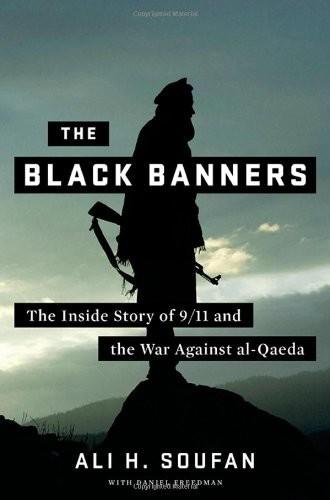
The Black Banners: The Inside Story of 9/11 and the War Against Al-Qaeda
by
Ali H. Soufan
and
Daniel Freedman
Published 11 Sep 2011
After Padilla was apprehended, John Ashcroft, Bush’s first attorney general, held a press conference on the arrest in Moscow, where he was traveling at the time. He described Padilla as a “known terrorist” who was pursuing an “unfolding terrorist plot” to launch a dirty bomb in an American city. This wasn’t true; the former attorney general was misinformed. While Padilla was a committed terrorist set on trying to harm America, he was a brain transplant away from making a dirty bomb, and there was no unfolding plot. Padilla was the plot. Later, when [1 word redacted] returned to New York, [1 word redacted] was shocked to see Padilla on the cover of magazines labeled as “the dirty bomber.”
…
Boris’s techniques had affected him. [7 words redacted], but eventually [1 word redacted] succeeded, and he reengaged. [1 word redacted] went through photos with him, along with his diary, phone book, and the rest of his personal effects. [24 words redacted] [66 words redacted] [1 word redacted] followed up on Padilla’s dirty bomb idea [112 words redacted] [72 words redacted] [45 words redacted] [4 words redacted] [112 words redacted] [89 words redacted] [98 words redacted] [4 words redacted] [17 words redacted] [12 words redacted] Every terrorist [1 word redacted] questioned is different. Sometimes humor is needed to establish rapport.
…
The May 30 Bradbury memo states: “Interrogations of Zubaydah—again, once enhanced interrogation techniques were employed . . . identified KSM as the mastermind of the September 11 attacks.” Zubaydah, according to the memo, also “provided significant information on two operatives, [including] Jose Padilla [,] who planned to build and detonate a ‘dirty bomb’ in the Washington DC area.” And the apartment buildings and Brooklyn Bridge plots that [1 word redacted] got from Abu Zubaydah, the CIA claimed to have gotten from KSM a year later. Apparently they had no success of their own at any time, and so they had to use [1 word redacted]. There are many other errors.

Eleanor Rigby: A Novel
by
Douglas Coupland
Published 29 May 2006
“German authorities found this highly radioactive core inside your bag during a standard luggage X-ray. They assumed it was a component in a dirty bomb. You can see why people might have been alarmed.” “Okay.” There was a silence. “Can I go now, then?” “Not quite. We have to have a lab confirm a spectral analysis of the fuel. It’s a formality. We want to confirm that it’s part of a batch milled in 1954 in a Soviet secret city called Arzamas-16.” “Fair enough.” I decided to make small talk, which always sends men running from me. “You must be relieved it wasn’t a dirty bomb, then. All you had to do was ask me what was in the suitcase. You didn’t need to put me in jail.”
…
“I think I do too.” More silence. “How bad is it going to be for me, then?” “I should think quite bad. I’m sorry.” * * * Despite my wounding their economy, the Germans have treated me cheerfully. They also allowed me to be admitted to a real hospital, not just some slapdash prison infirmary. The dirty bomb story was never allowed to make the newspapers (I suspect there are many stories like this that we never hear about), but the staff knew exactly who I was, what had transpired in the terminal—and also why I was now a guest in their hospital. I felt like an urban legend sprung to life: You know, that crazy lady who thought this chunk of space junk was a meteorite.
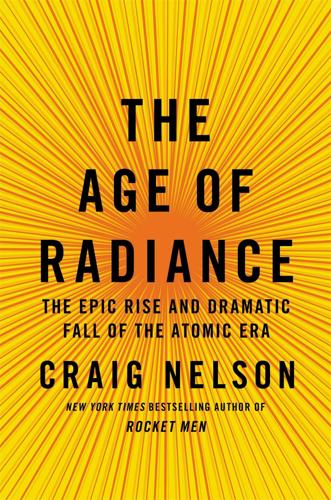
The Age of Radiance: The Epic Rise and Dramatic Fall of the Atomic Era
by
Craig Nelson
Published 25 Mar 2014
With economic conditions the way they are in Russia today, anyone with enough money can buy a nuclear bomb. It’s no big deal really.” Without the iron hand of the Kremlin in place, the West had a new worry—that terrorists might realize easy access to nuclear materials from the collapsed empire and manufacture “dirty” bombs—which was then used as an excuse for a new arms race in order to retaliate. But dirty-bomb-wielding terrorists would require about a hundred pounds of HEU (highly enriched uranium) at minimum 90 percent U-235 (which is traceable and in short supply; nuclear reactors run on 4 percent HEU), a sophisticated workforce, and the ability to keep the two fifty-pound sets of fuel away from each other, or they might spontaneously chain-react before being delivered to their target.
…
Visiting the dentist, you are draped in a lead apron but, even so, get another 80 mrems, as you would with a chest X-ray, CAT scan, or nuclear stress test. There’s uranium in your dental work, added to porcelain for long-lasting whiteness and fluorescence, and if you walk too closely by certain policemen after a dental or medical procedure, you’ll set off their Geiger counters (otherwise engaged in the hunt for mythic dirty bombs). On the way home, you bought a balloon for your daughter, the helium that made it float produced by all-natural, all-organic radioactivity within the planet’s mantle. Your delinquent nephew still smokes, inhaling 12,000 to 16,000 mrem every year from radon isotopes trapped in tobacco’s delicious leaves.
…
As for buying nuclear weapons from a rogue state, analyst Matthew Bunn explained, “A dictator or oligarch bent on maintaining power is highly unlikely to take the immense risk of transferring such a devastating capability to terrorists they cannot control, given the ever-present possibility that the material would be traced back to its origin.” The worst terrorist attack in history was engineered with box cutters and a few weeks of flying lessons. Dirty bombs are a myth and an absurdity. In the end, the biggest victims of the Cold War arms race turned out to be American and Soviet citizens. After Nevada’s underground nuclear tests ended in 1992—though the US Congress never ratified the Comprehensive Test Ban Treaty, the agreement was followed in practice—the Department of Energy measured the worst of the region’s water at millions of picocuries per liter (the federal peak for human consumption?

On the Future: Prospects for Humanity
by
Martin J. Rees
Published 14 Oct 2018
After the decommissioning of the Dounreay experimental ‘fast breeder’ reactor in the north of Scotland, billions of pounds are being spent on an ‘interim cleanup’ between now and the 2030s, to be followed by further expense spread over several further decades. And nearly 100 billion pounds is budgeted, over the next century, to restore to “greenfields” the Sellafield nuclear installations in England. Another policy concern is this: were a city centre to be attacked by a ‘dirty bomb’ (a conventional chemical explosion laced with radioactive material), some evacuation would be needed. But, just as in Fukushima, present guidelines would lead to a response that was unduly drastic, both in the extent and the duration of the evacuation. The immediate aftermath of a nuclear incident is not the optimum time for a balanced debate.
…
See also evolution Dasgupta, Partha, 34 death: assisted dying, 70–71; organ transplants and, 71 Deep Blue, 86 DeepMind, 86–87, 106 demographic transition, 30 Dengue virus, 74 designer babies, 68–69 Deutsch, David, 192 developing countries: clean energy for, 48–49, 51; effective redeployment of existing resources for, 224; genetically modified (GM) crops and, 66; impact of information technology on, 83–84; megacities of, 22, 29, 77, 109; need for good governance in, 28–29; need to bypass high-consumption stage, 27, 36; population trends in, 30–31. See also Africa; China; India Diamond, Jared, 216 diesel cars in Europe, 47 digitally deprived underclass, 76 Dijkstra, Edsger, 107 dinosaurs, 155 Dirac, Paul, 168–69, 210–11 dirty bomb, 56–57 disasters. See catastrophes discount rate, and future generations, 42–43, 45, 226 distance learning, 98–99 DNA: gene editing and, 67–68; as universal basis for heredity, 175. See also genomes Doing Good Better (MacAskill), 224 Drake, Frank, 156 driverless vehicles, 92–95, 102–3 drones: automated warfare with, 101; delivery by means of, 94; in Middle East but controlled from U.S., 100–101 drug design, by computers, 191–92 Dyson, Freeman, 78–79, 106, 161, 179–80 Dyson sphere, 161 Earth: Gaia hypothesis about, 216; history of, over 45 million centuries, 1–2; no escape in space from problems of, 150; as only world known to harbor life, 121; possible twins of, 131; stewards in a crucial era for, 10 earthquakes, 16 economic growth, sparing of resources, 26 education: global inequality and, 26, 220; internet and, 83, 220; life-long learning, 98–99; now improved for most people, 6; of women, 30 edX, 98 E-ELT (European Extremely Large Telescope), 134–35, 137 effective altruism, 224 Ehrlich, Paul, 22 Einstein, Albert, 168 Einstein’s theory of relativity: black holes and, 166; constant speed of light and, 204; the general theory, 166, 180, 184; relation to Newtonian physics, 205 electric cars, 46–47, 50 electricity grids: catastrophic breakdown of, 108–9; cyberattack on, 21; disrupted by solar flares, 16; high-voltage direct current (HVDC), 50; optimised by AI, 88 embryo research, 65, 73–74 emergent properties, 176–77, 187, 214 Enceladus, 128 energy demands: for agriculture, 23–24; of computers, 88; of growing population, 215; need of global planning for, 217, 219 energy efficiency, 46–47 energy generation, low-carbon, 47–57 energy management, of Google’s data farms, 88 energy storage, 48, 49–50, 51 engineering: aeronautical, 192; in agriculture, 23; basic physics and, 166; challenge of, 202 environmental degradation, 21, 215, 226 environmentalist worldview, 33 environmental policies, planning horizon for, 45 ethics: artificial intelligence and, 105; in biotech, 73–75; medical advances and, 69–74; scientists’ involvement with issues of, 74–75, 221–24; technology guided by, 226; of values that science can’t provide, 227 eugenics, 22, 69 Europa, 128, 129 European Extremely Large Telescope (E-ELT), 134–35, 137 evolution: bottlenecks in, 155–56, 158; creationism and, 195, 196; as great unifying idea, 175; intelligent design and, 196, 197; religious students of science and, 200; as vital part of common culture, 214.

The Complete Thyroid Book
by
Kenneth Ain
and
M. Sara Rosenthal
Published 1 Mar 2005
Only health authorities can determine which radioactive isotopes are released during a nuclear event and, if radioactive iodine is released, when to take potassium iodide and how long to keep taking it. What About a “Dirty Bomb” Attack? Not every radioactive release includes the radioactive iodine that can cause thyroid cancer. For example, a “dirty bomb” may not contain radioactive iodine because it has a short half-life. A “dirty bomb” is a conventional bomb mixed with radioactive 340 THYROI D AN D PUBLIC H E ALTH material and designed to explode spewing out the radioactive isotopes and contaminating a wide area. What Are the Recommended Doses?
…
See Informed decision-making Depression bipolar, 303 major, 303 sadness vs., 304 unipolar, 303, 304–9 Dermatographism, 70 Diabetes, 91–92 Diet for after treatment for thyroid disease, 277–79 antiobesity, 229–31 high-fiber, for hypothyroidism, 271–75 for hyperthyroidism, 277 low-GI, 278–79 low-iodine, 275–76 Mediterranean, 279–80 of poverty, obesity and, 226 Diffuse sclerosing variant, 218–19 Diplopia, 66 “Dirty bomb” attack, 340–41 Disordered thinking, 309 Diuretics, 320 Doctors cytologists, 35 gastroenterologists, 92 otolaryngologists, 218 psychiatrists, 310 thyroid surgeons, 139–40 Dosimetry, 219 Double vision, 66 Driving, hypothyroidism and, 52–53 Dry eye syndrome, 300–302 Dry eyes. See also Eye problems eyedrops and, 301–2 likely candidates for, 302 tips for avoiding, 301 Eclampsia, 191 Ectopic thyroid, 4, 211–12 Edema pedal, 317 peripheral, 317 during pregnancy, 185 pulmonary, 317 Electromagnetic radiation, 171–72 Endocrine-disrupting chemicals (EDCs), 335–37 Enemic goiter, 114 Energy drains, 330 Epinephrine, 64 Epstein-Barr virus, 331 Equilibrium dialysis free T4 test, 15 Estrogen loss, 198–200 Ethical guidelines, health care autonomy and respect for persons, 285–86 beneficence and nonmaleficence, 287–88 Euthyroid, 109 Euthyroid diffuse goiters, 113 Euthyroid goiters, 109, 113 Euthyroid Graves’ disease, 106 Euthyroid multinodal goiters, 113 Euthyroid sick syndrome (ESS), 255–56 Euthyroidism, 13 Exhaustion.

The Coming Wave: Technology, Power, and the Twenty-First Century's Greatest Dilemma
by
Mustafa Suleyman
Published 4 Sep 2023
GO TO NOTE REFERENCE IN TEXT Brazil and Argentina even José Goldemberg, “Looking Back: Lessons from the Denuclearization of Brazil and Argentina,” Arms Control Association, April 2006, www.armscontrol.org/act/2006-04/looking-back-lessons-denuclearization-brazil-argentina. GO TO NOTE REFERENCE IN TEXT Plenty of nuclear material Richard Stone, “Dirty Bomb Ingredients Go Missing from Chornobyl Monitoring Lab,” Science, March 25, 2022, www.science.org/content/article/dirty-bomb-ingredients-go-missing-chornobyl-monitoring-lab. GO TO NOTE REFERENCE IN TEXT In 2018, plutonium Patrick Malone and R. Jeffrey Smith, “Plutonium Is Missing, but the Government Says Nothing,” Center for Public Integrity, July 16, 2018, publicintegrity.org/national-security/plutonium-is-missing-but-the-government-says-nothing.
…
Everyone from Turkey and Saudi Arabia to Japan and South Korea has at least expressed interest in nuclear weapons. Brazil and Argentina even had uranium enrichment programs. To date no terrorist group is known to have acquired either a conventional warhead or sufficient radiological material for a “dirty” bomb. But methods to construct such a device are hardly secret. A rogue insider could credibly produce one. The engineer A. Q. Khan helped Pakistan develop nuclear weapons by stealing centrifuge blueprints and fleeing the Netherlands. Plenty of nuclear material is unaccounted for, from hospitals, businesses, militaries, even recently from Chernobyl.
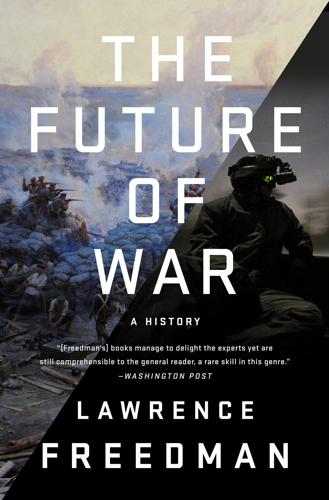
The Future of War
by
Lawrence Freedman
Published 9 Oct 2017
He reported experts from within government who considered such an attack as being a matter of ‘when not if’. This was classic ‘worst case’ for no other act of terrorism could compare with a nuclear explosion. Even those next in the list had a nuclear element, such as crashing aircraft into a nuclear power station or creating a ‘dirty bomb’ using radioactive materials, although this would be more disruptive than destructive. Though these were the worst forms of terrorism imaginable there were others, using for example chemical or biological weapons that could cause great panic. They were far easier for non-state groups to construct.
…
See casualties Debt of Honor (Clancy), 266 decisive battle, xviii–xix, 2–7, 9–10 Napoleonic Wars and, 8 See also knockout blow declaration of war, Hague Conventions and, 28 decolonisation, 142–143, 149–152 Deerhunter (film), 176 Defense Advanced Research Projects Agency (DARPA), 248–249 “Delicate Balance of Terror” (Wohlstetter, A.), 87 democracy, 136 Africa and, 152 barbarism and, 203 civil war and, 141 Cold War and, 134–135, 141 communism and, 134–135 CSCE and, 137 Iraq War and, 194 nationalism and, 138, 141 Russia and, 139 state-building and, 213 war, academic study of and, 137–140 democratic peace, 137–141 Democratic Republic of the Congo (DRC), 160–161, 170–171, 173–174 Denmark, 7 Dennis, Anthony, 181 deterrence Cold War and, 79–80, 84–86, 92–94 conventional forces and, 93–94 cyberwar and, 237 nuclear stalemate and, 84–86, 92 nuclear war and, 79–80, 200 See also crystal ball effect Deutch, John, 235 diamonds, 159, 161–164 dirty bombs, 271–272 disaggregation, academic study of war and, 118–123 disarmament, 44–46, 49–50, 58, 83–84 disease, 126–129 See also HIV-AIDS Disease and Non-Battle Injury (DNBI), 127 Dobrynin, Anatoly, 103 doomsday machine, 77–79, 232 Douhet, Giulio, 56 Doyle, Arthur Conan, 40 Doyle, Michael, 137 Dr.
…
See National Security Agency nuclear stalemate, deterrence and, 84–86, 92 nuclear war, xi, xviii, 69–92, 280–281 accidental war and, 76–77, 231–233 conventional forces and, 93–94, 96–97 cyberwar and, 232–233 defence against, 88–89 deterrence and, 79–80, 200 disarmament and, 83–84 fallout and, 72–74 fiction and, 74–76, 94–98, 232–233 knockout blow and, 76, 78–79 NATO and, 93–94, 97 Pearl Harbor and, 82, 90 reason and, 75–76 surprise attack and, 82–83, 86–87, 90 terrorism and, 181, 271–272 total war and, 72 war, abolition of, and, 70 world government and, 83 World War II and, xx See also atomic bombs; cobalt bombs; Cuban Missile Crisis; dirty bombs; doomsday machine; hydrogen bombs; intercontinental ballistic missiles; mutual assured destruction OAU. See Organization of African Unity Obama, Barack, xvi, 119, 249, 261–262, 269 Obama Administration, drones and, 242–244 O’Hanlon, Michael, 190 oil, 161–163, 259–260 On the Beach (film), 76 On the Beach (Shute), 74 On the Origins of War (Kagan), 114–115 On Thermonuclear War (Kahn), 78–79, 87–88 Oneal, John, 139 Operation Barbarossa, 62, 66, 82, 279 Organization of African Unity (OAU), 150–151 See also African Union Orwell, George, 68, 105 outer space, Cold War and, 89 Oxfam, 214 Pacific War, 63–66 See also Pearl Harbor Pakistan, 149, 165–166, 243, 261, 269, 273, 281 See also A Q Khan network Palestine, 149, 180–181 Panetta, Leon, 235 Paris, Roland, 172–173 Paris Commune, 3, 17 Parkes, Walter, 232, 234 peace, Africa and, 218–219 See also capitalist peace; democratic peace; territorial peace; war, abolishment of peace movements, 24–26, 111–112 See also Quakers Peace of Westphalia, 28 peacekeeping Africa and, 170–173 France and, 172 intervention and, 169–174 Iraq and, 174 UK and, 171–172 UN and, 169–174, 179 Yugoslavia and, 169 See also United Nations Peacekeeping Force in Cyprus Pearl Harbor, 63–66, 78, 118, 279 cyberwar and, 235 11 September 2001 and, 182 nuclear war and, 82, 90 Peierls, Rudolf, 71 People’s Wars, 143 Peters, Ralph, 191 Petraeus, David, 194, 196–197 Philippines, 38 See also Philippines War, Second Philippines War, Second, 38 Picasso, Pablo, 60 Pinker, Steven, xi–xv, 131 Platoon (film), 177 poisoned gas, 56–59 Pol Pot, 126, 166 Poland, 52, 60 political science, 195 politics, counter-insurgency and, 194–196 popular support, 16–18, 197–199, 208 Portugal, 142, 159 Posen, Barry, 191 poverty, xv PRIO.

The Singularity Is Nearer: When We Merge with AI
by
Ray Kurzweil
Published 25 Jun 2024
Denkenberger, “A National Pragmatic Safety Limit for Nuclear Weapon Quantities,” Safety 4, no. 2 (2018): 25, https://www.mdpi.com/2313-576X/4/2/25. BACK TO NOTE REFERENCE 19 “Safety Assistance System Warns of Dirty Bombs,” Fraunhofer, September 1, 2017, https://www.fraunhofer.de/en/press/research-news/2017/september/safety-assistance-system-warns-of-dirty-bombs-.html. BACK TO NOTE REFERENCE 20 Jaganath Sankaran, “A Different Use for Artificial Intelligence in Nuclear Weapons Command and Control,” War on the Rocks, April 25, 2019, https://warontherocks.com/2019/04/a-different-use-for-artificial-intelligence-in-nuclear-weapons-command-and-control; Jill Hruby and M.
…
Even with such a compelling deterrent as MAD, the potential remains for catastrophe resulting from miscalculation or misunderstanding.[19] We have grown so accustomed to this situation, however, that it is barely discussed. Still, there is reason for measured optimism about the trajectory of nuclear risk. MAD has been successful for more than seventy years, and nuclear states’ arsenals continue to shrink. The risk of nuclear terrorism or a dirty bomb remains a major concern, but advances in AI are leading to more effective tools for detecting and countering such threats.[20] And while AI cannot eliminate the risk of nuclear war, smarter command-and-control systems can significantly reduce the risk of sensor malfunctions causing inadvertent use of these terrible weapons.[21] Biotechnology We now have another technology that can threaten all of humanity.
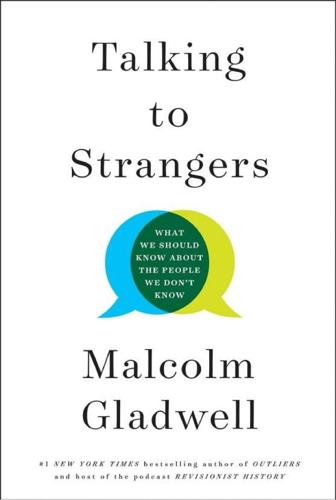
Talking to Strangers: What We Should Know About the People We Don't Know
by
Malcolm Gladwell
Published 9 Sep 2019
We knew that Osama bin Laden had met with the Pakistani scientists who were passing out nuclear technology, and [we] knew that the Pakistani scientists had said to Bin Laden, “The biggest problem is getting the nuclear material.” Bin Laden had said, “What if we’ve already got it?” That just sent chills through the whole intelligence community. The CIA had people walking around Manhattan with Geiger counters, looking for a dirty bomb. Washington was on high alert. And when KSM was first captured, the feeling was that if anyone knew anything about the planned attacks, it would be him. But KSM wasn’t talking, and Mitchell wasn’t optimistic. KSM was a hard case. The first set of interrogators sent to question KSM had tried to be friendly.
…
Then KSM’s personal representative read his confession: I hereby admit and affirm without duress to the following: I swore Bay’aat [i.e., allegiance] to Sheikh Usama Bin Laden to conduct Jihad… I was the Operational Director for Sheikh Usama Bin Laden for the organizing, planning, follow-up, and execution of the 9/11 Operation.… I was directly in charge, after the death of Sheikh Abu Hafs Al-Masri Subhi Abu Sittah, of managing and following up on the Cell for the Production of Biological Weapons, such as anthrax and others, and following up on Dirty Bomb Operations on American soil. Then he listed every single Al Qaeda operation for which he had been, in his words, either “a responsible participant, principal planner, trainer, financier (via the Military Council Treasury), executor, and/or a personal participant.” There were thirty-one items in that list: the Sears Tower in Chicago, Heathrow Airport, Big Ben in London, countless U.S. and Israeli embassies, assassination attempts on Bill Clinton and Pope John Paul II, and on and on, in horrifying detail.
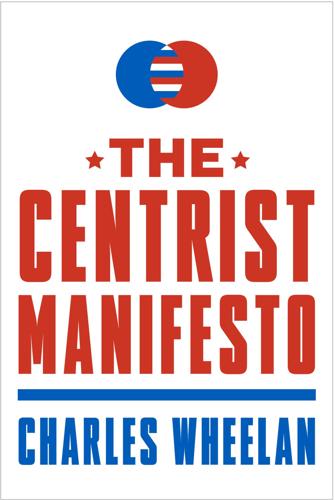
The Centrist Manifesto
by
Charles Wheelan
Published 18 Apr 2013
I buy coffee on any given occasion because I believe it is the very best use of my money; Starbucks makes money for its shareholders by anticipating and meeting my needs. That is all that needs to happen. The entire private sector operates around these self-organizing transactions, and that is a great thing. But the private sector—no matter how efficient—is not going to defeat the Taliban, keep a “dirty bomb” out of the country, feed or clothe the indigent, reduce carbon emissions significantly, or do anything else to address most of our serious communal challenges. The notion that we can or should run government like a business is another goofy platitude that often passes for wisdom. The whole point of government is to do things that the private sector cannot or will not do.
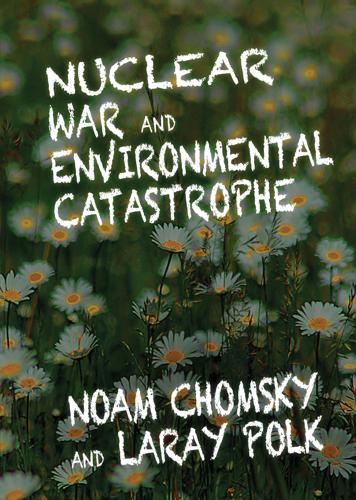
Nuclear War and Environmental Catastrophe
by
Noam Chomsky
and
Laray Polk
Published 29 Apr 2013
There are plenty of times when automated systems in the United States—and in Russia, it’s probably worse—have warned of a nuclear attack which would set off an automatic response except that human intervention happened to take place in time, and sometimes in a matter of minutes.45 That’s playing with fire. That’s a low-probability event, but with low-probability events over a long period, the probability is not low. There is another possibility that, I think, is not to be dismissed: nuclear terror. Like a dirty bomb in New York City, let’s say. It wouldn’t take tremendous facility to do that. I know US intelligence or people like Graham Allison at Harvard who works on this, they regard it as very likely in the coming years—and who knows what kind of reaction there would be to that. So, I think there are plenty of possibilities.
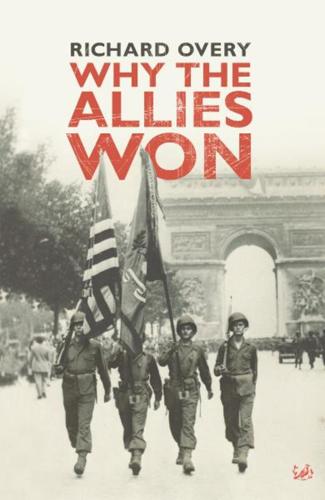
Why the Allies Won
by
Richard Overy
Published 29 Feb 2012
Much recent research has attempted to demonstrate that such a warhead did in fact exist, but the evidence is not entirely clear cut. Himmler is supposed to have authorised development of so-called ‘dirty bombs’ using the radioactive waste generated by the nuclear research programme. Small spherical bombs ‘the size of a pumpkin’ were stored in the tunnels of the Mittelwerke, where the rockets were produced. A detonation with conventional explosive could have produced a device capable of irradiating an area of a square mile; but German engineers failed to produce a fuse that could have detonated the dirty bomb in the atmosphere, even if Hitler had approved their use. It has also been claimed that small tactical nuclear weapons were developed out of the research into nuclear energy, but the precise nature of the bomb, if it existed, cannot now be verified.79 There is a profound irony here, for it was fear of Germany’s technological prowess that prompted first the British and then the American government to pursue their own atomic programme with their collective scientific energy.
…
Jr, 209 Czechoslovakia, 13, 282 D-Day landings see France, invasion of Daimler-Benz company, 248 Dardanelles see Gallipoli Datsun, 271 Davies, Joseph E., 307–8 Deane, General John, 310 death ray, 287 democracy: role in Allied success, 2–3 Dempsey, General Miles, 192 Denmark: German takeover (1940), 15 Dieppe, Canadian raid (1942), 166 Dill, Field Marshal Sir John, 330, 444 dirty bombs, 295 Dneps river, 105, 118 Dollmann, General, 189 Don river, 84, 97 Donetz river, 105 Dönitz, Admiral Karl: as Hitler’s successor, 75, 343; at Nuremberg, 383–4; and sea war, 55, 56, 58, 60, 65, 70, 71 Dönitz, Peter, 70 Dornberger, Walther, 292, 294 Double-Cross System, 184 Doud, Harold, 272 Dykes, General Vivian, 306 Eaker, General Ira, 140 East Indies, 16, 18 eastern front, 77–122, 79; air power, 93–5, 110, 158, 258, 260–2, 263, 268–70, 396; Allied support for Russia, 24; German morale, 27; military technology, 6, 258–70; role in war’s outcome, 394–5; Soviet 1944 offensive, 203; tanks, 112, 114–16, 258–60, 263, 264–5, 279; see also Barbarossa, Operation Eden, Anthony, 306, 309, 325 Ehrenburg, Ilya, 77, 121, 232 Eisenhower, General Dwight D.: on Alanbrooke, 331; appointed commander, 176; background and appearance, 176–7; and D-Day plans, 178, 179, 181, 182, 185, 187, 191–2; on effects of economic power, 389; Germanophobia, 354; and invasion of France (1944), 168–9, 176, 192–3, 194–5, 198–9, 203–4, 206, 208, 213, 217, 218, 219, 430; and invasion of Germany (1945), 216; and Montgomery, 203–5, 206, 208–9; on US entry into war, 321 Eliot, T.S., 356 Elizabeth, Tsarina, 344 ‘Empire and Allies’ New Year pageant (1942), 309 Enigma (Ultra), 57, 107–8, 184, 192, 207, 213 Enola Gay, 155 Ensor, R.C.K., 354 Enterprise, 46, 51 Erickson, John, 299 Ethiopia (formerly Abyssinia), 10 explosives, 61 Falaise, 213, 214, 215 Far East: Japanese campaigns, 16, 18, 33, 39 fascism: pre-war appeal, 9 FBI, 186 Fedchikov, Metropolitan Benjamin, 348 Fieseler-103 flying bomb, 293 fighting skills: role in war’s outcome, 6–8, 25–6, 92–3, 256, 257–8, 389–91 Finland, 20, 23 First US Army Group (FUSAG), 185–7, 200–1, 219 First World War see World War I Fitzmaurice, Colonel James, 128 Fleet Radio Unit, Pacific, 46–7 Fletcher, Rear-Admiral Frank, 42, 43, 47, 49, 50 food see agriculture and food Ford, Henry, 240–1 Ford company, 162, 238, 239, 240–1, 248 fortifications: Kursk, 108–9 France: Allied bombing raids on, 140–1, 181–3; Dieppe raid (1942), 166; fall of (1940), 15, 36, 256; invasion of Madagascar (1942), 164–7; naval strength, 35; and outbreak of war, 13–15; post-war, 401; pre-war strength, 9; Resistance, 191, 205 France, invasion of (1944), 167–216; air power’s effect, 395, 396; air support, 158–9, 181–3, 192, 196, 199, 202, 206, 207, 209, 210, 211, 218–19, 255–6, 277–8; Allied doubts of success, 217–18; Allies commit to, 119, 301–2; Anvil, Operation, 179, 214; choice of site, 171; commanders, 176–8; D-Day, 195–8, 199–201; deception of Germans as to site, 181, 183–7, 200–1, 219; eastern front’s effect, 395; final preparations, 192–5; German defences, 187–91; Normandy, battle for, 198–9, 201–9, 255–6, 275; Normandy breakout, 209–16, 210; oil supplies, 287; organisation, 179; plans, 178–9, 191–2; pre-requisites, 167–8; reasons for Allied success, 199–201, 218–19, 393; role in Allied success, 25; strategy arguments, 168–9, 171, 172–6; supplies, 202; technological aids, 180–1, 209, 277–9; transport across Channel, 170, 178, 179–81, 192, 195, 196; US forces in Britain, 169–70; weather, 194, 202, 218 Franco, Francisco, 10, 127 Frank, Hans, 384 Frederick II the Great, 344 French Frigate Shoals, 48 Frisch, Otto, 296–7 fuel, 279–87; synthetic, 280, 281–2, 282–3, 285 FUSAG see First US Army Group Galland, Adolf, 151 Gallipoli (1915–16), 25, 31, 324 Gallop, Operation (1943), 105 Garmash (Soviet tractor driver), 232 GATT, 402 Gaulle, General Charles de, 215–16 Gee radio navigation device, 138–9, 143–4 Gehlen, General Reinhard, 96 General Motors Corporation, 236, 238, 239, 249 George VI, 119, 191, 192, 325 George, Colonel Hal, 397 German air force: Allied campaign to destroy, 149–52, 157–9; bombing campaigns, 132–3, 144; and D-Day (1944), 199; defence of Germany, 135–6, 144, 147, 148–9, 152; eastern front, 263, 268–70; leadership, 342–3; loss of air power, 157–9, 260–1, 342, 395–8; and oil supplies, 285; Paris raid (1944), 216; and sea war, 36; and Spanish Civil War (1936–39), 127; and Stalingrad (1942–43), 95, 98 German air force units: Air Fleet 3, 199; Air Fleet 4, 95 German army: age, 188; assassination attempts on Hitler, 212–13, 375, 377–80; Atlantic defences, 188, 189; Hitler’s control, 340–1 German army units: 1st Panzer army, 81, 82; 2nd Panzer division, 112, 203, 214; 3rd Panzer division, 116; 3rd parachute division, 189; 4th Panzer army, 81, 82, 97, 112–13; 5th Panzer army, 212–13; 6th army, 81, 82, 91, 97–102; 7th army, 188, 189, 195, 196, 210, 212–13, 215, 218; 9th Panzer division, 112; 9th SS Panzer division, 205; 10th SS Panzer division, 205; 11th Panzer corps, 116; 15th army, 186, 189, 194, 195, 200, 201, 212, 214, 218; 19th Panzer regiment, 116; 21st Panzer division, 190, 197; Panzer Lehr division, 203, 210, 255–6; SS Panzer division Das Reich, 114, 115–16; SS Panzer division Leibstandarte Adolf Hitler, 114, 115–16; SS Panzer division Totenkopf, 114, 115–16 German Faith Movement, 350 German forces: numbers executed, 374 German navy: comparative strength, 35; and D-Day, 199; and end of war, 75–6; and submarine war, 35–8, 54–63, 64–73, 74 German–Soviet Pact (1939), 3, 14, 15, 282 Germany: agriculture and food, 245; air power, 157–9, 257, 258, 260–1, 263, 268–70, 342, 395–8; Allied attitude to Nazis, 27–8; Allied bombing campaigns, 24, 131, 133–53, 156, 157–63, 251–2; Allied disruption of production, 146, 148, 149, 151–2, 153, 156, 159–61, 162; Allied fears of chemical warfare, 131; Allied view of as foremost enemy, 394; anti-bomber defences, 135–6, 143–4, 147, 148, 152, 160; atomic research, 288–91, 295; end of war, 381–2; fear of Soviet Union, 381; fighting skills, 7–8, 92, 256, 257–8; Germanophobia, 353–7; invasion of (1945), 216–17, 344; and invasion of France (1944), 187–91, 195–216, 255–6; invasion of Soviet Union see Barbarossa, Operation and eastern front; material resources, 4, 5–6; military organisation, 391–3; military technology, 6, 219, 258, 263–70, 275, 278–9, 297–8; morale, 26, 367–8, 371, 375–7, 380–2; morality of war’s conduct, 371–5; oil supplies, 279, 281–5; opposition to Nazis, 350, 375, 377–80; and outbreak of war, 13–15; post-war, 404–6; pre-war, 10, 11–13; propaganda, 371, 376–7, 381; religion in, 349–50; rocket programme, 291–5; Soviet aid to, 3; as threat to west, 14, 27–8; war leadership, 26, 313, 336–46, 387–8, 399; war production, 5–6, 134, 151–2, 222–3, 243–54, 269–70, 275, 292–5, 407–8 Goebbels, Joseph: on Barbarossa, 252, 376; and German science, 297; on Germanophobia, 375; and invasion of France (1944), 200; on morality of German conduct of war, 373; and propaganda, 371–2, 376–7; and Roosevelt’s death, 344 Gold beach, 192, 197 Goldsmith, Raymond, 388 Gomorrah, Operation (1943), 145–6 Goodwood, Operation (1944), 207–8 Gooseberry breakwaters, 180–1 Gordov, General, 84 Göring, Hermann: and aircraft development, 127, 251, 269; and Allied bombing operations, 151; background and war role, 342–3; and German bombing operations, 144; at Nuremberg, 383; reaction to war’s outbreak, 28; and rocket programme, 292–3; and Stalingrad (1942–43), 98, 104; and Udet, 269; on US production methods, 248 Gosplan, 225 Great Crash (1929), 8 Great War see World War I Greece: Italian attack, 16, 270 Greenland, 304 Gretton, Commander Peter, 70 Grigg, James, 331 Grigorenko, Petro, 359 Groves, General Leslie, 297 Guderian, General Heinz, 117, 346 H2S navigation device, 144–5, 147 Hahn, Otto, 288 Halder, General Franz, 82, 338, 340, 375 Halifax, Lord, 319, 323, 325, 326, 354 Halsey, Admiral William, 46 Hamburg, 145–6 Hanford, 296 Hardy, General Thomas T., 425 Harriman, Averell: on Atlantic conference (1941), 30, 32; and Churchill, 30, 38–9, 192, 326; on D-Day (1944), 192; in Moscow, 310; on Moscow meeting (1942), 125; rights and privileges, 321; and Roosevelt, 304; and Stalin, 164 Harris, Air Marshal Arthur, 136–9, 147, 181–2 Harteck, Paul, 288, 291 Hassell, Ulrich von, 377 hedgecutters, 209 Hedgehog mortars, 62 Heisenberg, Werner, 289, 290, 291 High Frequency Direction Finding (HF/DF), 69 Himmler, Heinrich: assassination attempts, 379; and atomic research, 298; and Barbarossa, 372; death, 382; and rocket programme, 293, 294, 295 Hirohito, Emperor, 155, 367, 368, 370, 451 Hiroshima, 154–5 Hiryu, 49, 51 Hitler, Adolf: and alliances, 344–5; Allied attitude to, 27–8, 352–7; assassination attempts, 212–13, 375, 377–80; and atomic research, 290; background and character, 11–13, 216, 337–8; and bombing, 132, 133, 144, 146; and cars, 248, 249; death, 75, 216; on failure to win the war, 386–7; on German fighting skills, 7; and German morale, 376; and invasion of France (1944), 185, 186, 187, 190–1, 200, 205–6, 208, 212, 214, 215; and oil supplies, 282; and outbreak of war, 13–15; popularity in Germany, 26; and religion, 349–50; and rocket programme, 292, 293, 294; role in war’s outcome, 26, 313, 336–41, 342–6, 387–8, 399; and Roosevelt’s death, 343–4; and sea war, 36, 55, 65; and Soviet Union, 16, 17, 23, 80, 81–2, 95, 96, 97–8, 99, 103–4, 106, 110–11, 117, 118, 252, 386; Stalin’s admiration for, 312; and tanks, 266; and ‘total war’ concept, 243–4; and US, 252, 390, 397; and war production, 146, 153, 244–5, 246, 247, 249–50, 251, 253, 254; and war’s moral issues, 371–2 Hobbs, General Leland, 256 Hochne, Otto, 249 Hoffmann, Wilhelm, 100 Holland see Netherlands Honda, 271 Hopkins, Harry: on Churchill, 253; in Moscow, 308; rights and privileges, 321; on Roosevelt, 18, 133, 142; at Teheran (1943), 312 Hornet, 46 horses, 97, 100, 265, 271, 282, 283 Horton, Admiral Sir Max, 65–6, 68–70, 71, 74 Hoth, General Hermann, 99, 112, 114 Hughes-Hallett, Commodore J., 180 Hungary: and Barbarossa, 23, 86, 100, 103; German trade treaty with, 244 hydrogenation, 281–2 Iceland, 304 Ickes, Harold, 15, 286, 287 IG Farben, 282 Illustrious, 164 IMF, 402 India, 16, 18 Indo-China, 16 Indomitable, 164 intelligence: Allied attitude to sharing, 310; and invasion of France (1944), 184–7, 191, 192, 195, 207, 213, 219; and Kursk (1943), 107–8, 111; and Midway (1942), 46–7; and Stalingrad (1942–43), 93, 96; and submarine war, 59 inventions see technology Iran (formerly Persia), 20 Ironclad, Operation (1942), 164–7 Ismay, General Hastings, 39, 322, 331 Italian air force, 36 Italian navy, 36–7 Italy: Allied bombing campaign, 24, 157; Allied sea blockade, 63–4, 74; attack on Greece, 16, 270; and eastern front, 23, 86, 100, 103; enters war (1940), 16; German military strength in, 395; military technology, 270–1, 275; morale, 26–7, 367–8; post-war, 404–6; prewar, 10–11, 14; religion in, 349; as threat to west, 14, 16, 27; war production, 6, 271, 275, 433–4 Jackson, Judge Robert H., 383, 384 Japan: Allied bombing campaign, 24, 153–5, 157, 161–2; Allied sea blockade, 76; atomic research, 287–8; end of war against, 281, 381–2, 397; enters war (1941), 18; expansion (1931–42), 19; Far East campaigns, 16, 18, 33, 39; fighting skills, 7–8, 256; and Madagascar, 164–5; material resources, 4–5; military organisation, 391–3; military technology, 271–2, 275; morale, 27, 367–71, 380–2; oil supplies, 279, 280–1; Pacific campaigns, 17–18, 33, 39–41, 42–53, 271–3; popular view of reasons for failure, 399; post-war, 404–6; pre-war, 10–11, 14; religion in, 368–9; and Soviet Union, 86; supplies, 257; as threat to west, 14, 27; war production, 6, 154, 222, 271, 275, 407–8; western attitude to, 27, 362 Japanese forces: morale and commitment, 272–3 Japanese navy, 273, 287–8 Java, 279 Jeschonnek, General Hans, 146 Jews: blamed by Hitler for loss of war, 387; origin of Hitler’s hatred, 12 Jodl, General Alfred, 96, 342 Johnston, Eric, 227, 229, 232 Jones, C.F., 279 Jones, R.V., 145 July Plot (1944), 378–80 Juno beach, 192, 197 Kaga, 49, 50–1 Kaiser, Henry J., 237 Kammhuber, General Josef, 135–6 Kammhuber Line, 135–6 Kanzler, Ernest, 239 Katyusha rocket-launcher, 93 Kawai, Kazuo, 367 Kazakhstan, 221 Keitel, Field Marshal Wilhelm, 104, 339, 341, 384 Kennan, George, 443 Khalkin-Gol, Battle of (1939), 86 Kharkov, 105, 118 Kiev, 118 King, Admiral Ernest: and invasion of Europe, 53, 174; and naval aviation, 46; Pacific strategy, 41; on Soviet Union as ally, 310; and submarine war, 59 Kleist, Field Marshal Paul von, 81 Kluge, Field Marshal Gunther von: and invasion of France (1944), 206, 207, 208, 212–13, 214, 217, 396; and Schlabrendorff’s attempt on Hitler, 378 Knudson, William, 235 Koenig, General Pierre, 183 Koller, General Karl, 396–7 Koltso, Operation (1943), 100–2 Konev, Ivan, 114 Konoye, Prince, 451 Korean War (1950–53), 405 Krushchev, Nikita, 312, 316 Kuibyshev, 225 Kursk, Battle of (1943), 106–17, 113, 260, 262, 263, 270 Kuwuhara, Commander, 280–1 landing craft, 170, 235 Lang, Cosmo, Archbishop of Canterbury, 348 Lang, Fritz, 292 Layton, Sir William, 232–3 Leach, Captain John, 33 leadership, 300–46: Allied administration, 329–36; Germany, 26, 313, 336–46, 387–8, 399; relations between Allied, 300–12; role in war’s outcome, 26, 313–29, 336–41, 342–6, 387–8, 399 League of Nations, 318 League of the Godless, 347 Leahy, Admiral William, 321 Leigh, Sir Humphrey de Vere, 61 Leigh Lights, 61, 69 Leigh-Mallory, Air Marshal Trafford, 182 LeMay, General Curtis, 154–5 Lend-Lease, 262–3, 304, 308, 309, 310, 311–12 Leningrad, siege of (1941–44), 104 Lexington, 42, 44, 46 Liberty Ships, 236–8 Lichtenstein radar, 144 Lille, 141 Lindbergh, Charles, 241 Lippmann, Walter, 355 Litvinov, Maxim, 311, 352, 388–9 Living Church, 347 Lloyd George, David, 324, 325 logistics, 257, 392 London Blitz, 132–3, 294 Loop, Albert van, 186 Lopatin, General Alexander, 89 Lorient, 141 lorries, 247, 250 Los Alamos, 296–7 Lucy spy ring, 111 Ludendorff, General Erich, 243–4 Luftwaffe see German air force Luxembourg: German takeover (1940), 15 MacArthur, General Douglas, 41–2 Madagascar, Allied invasion (1942), 164–7 magnetrons, 62 Magnitogorsk, 227–8, 229, 232, 253 Mahan, Admiral, 180 Maikop, 279, 282–3 Maisky, Ivan, 309 Malaya, 18 Malta, 63 Manchuria, 10, 86 Manhattan project, 296–7 Mann, Thomas, 366 Manstein, Field Marshal Erich von: and Citadel, 106, 120; and German retreat, 117, 119; on Hitler, 337; and Kharkov, 105; on reasons for Soviet win of Barbarossa, 120; and Sebastopol, 81; and Stalingrad, 99 Mantes-Gassicourt, 215 Manteuffel, General Hasso von, 341 Marshall, General George C.: background and war role, 333–6, 397; on collaboration’s importance, 300, 344, 390; and invasion of France (1944), 53, 168, 169, 176; Japanophobia, 362; and Joint Chiefs-of-Staff Committee, 321; and Roosevelt, 322, 334, 336; at Teheran (1943), 301 Masset (governor of Madagascar), 166 material: Axis vs Allied, 2, 4–6, 222, 223; effect on war’s outcome, 399; German, 244, 245; see also oil and production, war Maud committee, 295 mechanisation see tanks media coverage, 360–1 Mediterranean: British strategy, 53–4, 328–9; effects of campaign on D-Day timing, 170–1; sea war, 63–4; see also Italy and North Africa Mellenthin, General Friedrich von, 120 Metox, 62, 69 Middle East, 16, 18, 20 Midway, 40 Midway, Battle of (1942), 18, 44–53, 49, 368, 393 Milch, Erhard, 269, 270 military organisation see organisation military technology see technology Model, Field Marshal Walther, 112, 214, 215, 217 Molotov, Vyacheslav, 310, 323 Monroe Doctrine, 35 Montgomery, Field Marshal Bernard: background and character, 177–8; and Churchill, 329; and D-Day plans, 178, 191–2, 194, 197; and Eisenhower, 203–5, 206, 208–9; and invasion of France (1944), 198, 201, 203–4, 206, 207–9, 213, 429–30 moral issues, 26–8, 347–85; atomic weapons, 364; bombing, 129–30, 156, 363–4; effect on war’s outcome, 398–9; hatred of Hitler and Germany, 352–7; Nuremberg Tribunal, 382–4; propaganda, 354, 357–63, 365, 368, 371, 376–7, 381; religion’s role, 347–51, 368; Soviet regime, 364–5 morale: Axis, 26–7, 161–2, 272–3, 367–82, 384–5; effect on war’s outcome, 398–9; Soviet, 26, 82–4, 122–3, 230–2; US, 360–3, 365 Morgan, General Frederick, 169, 171 Morgenthau, Henry, 133, 353 Mortain, 213 mortars: Hedgehog, 62 Moscow, defence of (1941), 85 Moscow meeting (1942), 124–5 motor-cycles, 247 motorisation: Allied superiority, 6, 257–8; eastern front, 258, 259, 262–3, 264–6, 267–8; Pacific campaigns, 271; see also trucks Mountbatten, Lord Louis, 171 Mulberry harbours, 180–1, 202 Munich conference (1938), 14, 386, 387 Murrow, Ed, 133 Mussolini, Benito: assumption of office, 10; and Barbarossa, 103; and Catholic Church, 349; deposition, 26–7, 157, 368; description of the war, 21; Hitler on, 386; and outbreak of war, 367 Nagasaki, 154, 155 Nagumo, Admiral, 45, 48, 50 Nauru, 40, 44 navigation devices, 138–9, 143–4, 144–5, 146, 147 Nelson, Donald, 236 Neosho, 43 Neptune, Operation, 180 Nesov, Gregor, 227, 229 Netherlands: East Indies interests, 16, 39; German takeover (1940), 15 New Deal, 233, 236, 319 Nimitz, Admiral Chester, 42, 45, 47 Nineteen Eighty-four (Orwell), 365 Nishina, Yoshio, 287–8 NKVD, 83, 105, 175, 226, 358 Norden bomb-sights, 140 Normandy landings see France, invasion of North Africa: air support, 276–7; El Alamein, 20, 271; Axis logistics, 63–4; British in, 124; German oil supplies, 283; Italy in, 270–1; Montgomery in, 177; strategic importance, 279; strength of German forces, 23; technological aids, 276–7; Tobruk (1941), 123; Torch landings (1942), 53–4, 64, 124, 177 North Korea, 404 Northampton, 136 Norway: Allied failed campaign (1940), 31, 131, 324–5; Allied phantom invasion (1942), 57; German takeover (1940), 15; and heavy water, 289–90; role in Allied D-Day deception, 185 Novikov, A.A., 95, 261–2, 332 nuclear weapons see atomic weapons Nuremberg, 147 Nuremberg Tribunal, 382–4 Oak Ridge, 296 Oakington, 136 Oberth, Hermann, 291–2 Oboe navigation device, 144–5, 146 Oboyan, 114 Ocean Island, 40, 42, 44 O’Connor, General, 430 Office of Production Management, 235 oil, 279–87; synthetic, 280, 281–2, 282–3, 285 Okinawa, 52 Okinoshima, 44 Okita, Saburo, 405 Olkhovatka, 112 Omaha beach, 192, 196, 197–8 Opel, Wilhelm, 249 Opel company, 248, 249 organisation: role in war’s outcome, 329–36, 391–3 Oribi, 30 Orel, 117, 118 Orwell, George, 353, 365 Oschersleben, 148 output, industrial see production, war Overlord, Operation (1944) see France, invasion of Pacific campaigns, 17–18, 33, 39–53, 257, 271–3, 396 Papen, Franz von, 28 Paris, liberation of (1944), 215–16 Patton, General George S.: character, 211; and FUSAG deception, 185–6, 193; and invasion of France (1944), 210, 211, 212, 213–14, 215, 287 Paulus, Field Marshal Friedrich, 81, 89–90, 91, 92, 95, 97, 99, 100, 101, 102 Pearl Harbor attack (1941), 18, 39, 305 Peenemünde, 146, 292–5 Pegasus bridge, 195–6 Perkins, Frances, 319 Persia see Iran Philippines, 18 Phillips, Admiral Thomas, 33 Pius XI, Pope, 349 Pius XII, Pope, 350 Ploesti, 282, 284 Poland: German takeover (1939), 13, 14, 339, 372 Ponyri, 112 Porsche, Ferdinand, 248 Port Moresby, 40, 42, 43 Portugal, 71 Pound, Admiral Sir Dudley, 39 Pownall, General Henry, 28, 308 Pravda, 83, 123 Prince of Wales, 30–1, 32–3, 37 production, war, 220–54; Allied bombers, 133; Allied disruption of Axis, 5–6, 130, 131, 135, 137–8, 146, 148, 149, 151–2, 153, 154, 156, 157, 159–61, 162, 251–2; British, 243, 407–8; effect on war’s outcome, 388–9; gap between potential and actual, 2, 245–52; German, 5–6, 134, 151–2, 222–3, 243–54, 269–70, 275, 292–5, 407–8; Italian, 6, 271, 275, 433–4; Japanese, 6, 154, 222, 271, 275, 407–8; pre-war, 14; Soviet, 220–32, 243, 253–4, 407–8; statistics, 407–8; US, 5, 75, 170, 222, 232–42, 253–4, 275, 397, 407–8 Prokhorovka, 114–16 propaganda, 354, 357–63, 365, 368, 371, 376–7, 381 Quebec conference (1943), 171, 173 Queen Elizabeth, 64 Queen Mary, 64, 326 radar: and air war, 136, 144, 145, 147; and sea war, 45, 61–2, 69 Rader, Melvin, 357 radio: eastern front, 260, 263; HF/DF, 69; importance, 258; in tanks, 109, 260 radio navigation devices, 138–9, 143–4 Raeder, Gross-admiral Erich, 35, 55, 65 RAF see Royal Air Force railways: Allied destruction of German, 153; Soviet, 221, 223 Ramsay, Admiral Sir Bertram, 180, 194 raw materials see material; oil Rechlin research centre, 248 Red Army: appearance, 299; in China, 397; effectiveness, 25, 92–3; importance to Soviet post-war power, 397; see also Barbarossa, Operation and eastern front Red Army units: 1st tank army, 114; 5th Guards infantry, 115; 5th Guards tank army, 114–15, 116, 260; 6th Guards army, 114; 62nd army, 88, 89, 92–3, 95, 102; 64th army, 88; 134th Guards division, 90–1, 102; St Dmitry Donskoi tank battalion, 348 Red Orchestra, 375 Regensburg, 148 Reichling, Sergeant Walter, 193–4, 195 religion: role in war, 347–51, 368–9 Repulse, 33, 37 resources see material; oil Rhinoceros tanks, 209, 210 Ribbentrop, Joachim von, 18, 344 Richthofen, Field Marshal Wolfram, 338 Roberts, Captain G.H., 30 Rochefort, Joseph, 46–7 rocket-launchers, 93 rocket programme, German, 291–5 Rodimtsev, Alexander, 91 Rokossovsky, Marshal Konstantin, 112 Romania: and Barbarossa, 17, 23, 86, 87, 96–7, 103; deserts Axis, 20; German trade treaty with, 244; oil fields, 282, 284 Rommel, Field Marshal Erwin: on Allied air power, 277; and Atlantic defences, 188–91; background and character, 188; and invasion of France (1944), 195, 197, 200, 201, 203, 204, 205, 206, 207, 208; in North Africa, 123, 283 Roosevelt, Franklin D.: 1941 pessimism, 18; and air power, 276; at Atlantic conference (1941), 30–2; background and character, 318–21, 353; and bombing, 133–4, 141–2; and Britain, 305; call for Axis unconditional surrender, 362–3; at Casablanca (1943), 142–3, 169, 363; and Churchill, 22, 32, 132, 306, 312; death, 322–3, 343–4; Germanophobia, 134, 353–4; and Hitler, 28, 352, 353, 355; Hitler’s reaction to death, 343–4; and inevitability of war, 35; and invasion of France (1944), 169, 172, 175–6, 183; on Liberty Ships, 237; and Marshall, 322, 334, 336; Pacific strategy, 41; and Pearl Harbor (1941), 39; at Quebec (1943), 172; and religion, 349; role in war’s outcome, 26, 313, 318–23; and Second Front, 310, 335; and Soviet Union, 307–9, 310, 312, 365; and Stalin, 312; at Teheran (1943), 119, 175–6, 300–3, 322; and Torch (1942), 54; on treatment of defeated German leaders, 382; and US entry into war, 304–5, 357; and US production and rearmament, 220, 233, 234, 236, 253, 397; war priorities, 311; and war’s moral issues, 349, 350, 351 Roosevelt, Theodore, 318 Rosenberg, Alfred, 350 Rostov-on-Don, 81, 82–3, 100 Rotmistrov, General Nikolai, 114–16, 260 Rotterdam, 131 Rouen, 140–1 Roundup, Operation (1943), 169 Royal Air Force (RAF): attitude to civilian bombing, 129; Churchill’s early support for, 126; close-support tactics, 276–7; see also Bomber Command Royal Navy: anti-submarine support groups, 69, 70; comparative strength, 33; and D-Day (1944), 179–80, 192, 194, 196, 428–9; invasion of Madagascar (1942), 164–7; losses, 74; and sea war, 35–6, 37–9, 41, 59, 63, 69, 70; ships in commission at end of war, 75 Ruge, Friedrich, 278 Ruhr, 130, 131, 135, 144, 162, 344 Rumyantsev, Operation, 118 Rundstedt, Field Marshal Gerd von, 188, 190–1, 195, 205–6 Russian Civil War (1918–21), 77 Russian Revolution (1917), 8 Rutherford, Ernest, 288 Saffody, Tom, 242 Saigon, 281 St Lô, 255, 275 St Paul’s School, London, 191–2 Saipan, 370 Salmuth, General Hans von, 189 Saratoga, 46 Saudi Arabia, 20 Saur, Karl-Otto, 423 Schlabrendorff, Fabian von, 378 Schweppenburg, General Geyr von, 190, 197 Schweinfurt, air battle of (1943), 148–9 sea war, 30–76: air support, 36–7, 60–1, 68, 69, 70, 71–2, 141, 280–1, 396; Atlantic, 30–9, 54–63, 64–73, 74, 141, 393, 396; Mediterranean, 63–4; oil transports, 280–1, 286; Pacific, 39–53; reasons for Allied success, 393; significance, 21, 22; technological aids, 37, 60–2, 69 searchlights, marine, 61, 69 Sebastopol, 81 Second Front: Allied reluctance to start, 123, 124, 142, 310; bombing’s contribution to, 24–5, 125, 126; see also France, invasion of Second World War see World War II Seine river, 215 Sergei, Metropolitan, 347, 348 Seven Years’ War (1756–63), 344 ships: production statistics, 407; US production, 75, 170, 235, 236–8; see also landing craft Shirer, William, 367 Shoho, 43 Shokaku, 42, 44 Shtemenko, General Sergei, 332 Siberia, 221–2 Simonov, Konstantin, 354 Singapore, 18, 33 Singleton, Judge John, 126 Sledgehammer, Operation (1942), 169 SN2, 144 Solomon Islands, 42, 52 Sorenson, Charles, 240 Soryu, 49, 50–1 Soviet air force, 260–2, 263 Soviet air force units: 5th air army, 108; 8th air army, 93–5 Soviet Union: 1944 offensive, 203; agriculture and food, 223, 229–30, 231; air power, 258, 260–2; attitude to old imperial states, 9; British relations, 107–8, 123–5, 304, 307–12, 437; effects of war on, 388, 397–8; and end of European war, 217; fighting skills, 25, 257, 391; Five-Year Plans, 225, 230; German fear of, 381; German invasion (1941–43) see Barbarossa, Operation; German–Soviet Pact (1939), 3, 14, 15, 282; heavy-bomber development, 127; invasion of Germany (1945), 344; and Japan, 86; material resources, 5; military technology, 6, 258–63, 279, 298–9; and Nuremberg, 383; oil supplies, 282, 283–4, 286–7; patriotism and morale, 26, 82–4, 122–3, 230–2; post-war, 403, 404–6; propaganda, 354, 357–60; punishment of retreaters and deserters, 358; railways, 221, 223; regime as moral issue, 364–5; religion in, 347–8; role in war’s outcome, 1–2, 3, 397–8; supplies to, 22; technical achievement, 6; US economic aid to, 309, 310, 311–12; US relations, 304, 307–12; war casualties, 120; war leadership, 313–18, 332–3; war production, 220–32, 243, 253–4, 407–8; west’s mistrust, 3–4; see also eastern front and Red Army Soviet War News, 365 Spaatz, General Carl, 139, 181–2, 183 Spain, 20 Spanish Civil War (1936–39), 10, 86, 127 Speer, Albert: on Allied bombing campaign, 163; and atomic research, 290; and German production, 153, 160, 250–1, 254; on Hamburg air raid, 146; and Hitler, 343; and Hitler’s death, 216; at Nuremberg, 383; and rockets, 293–4 Spruance, Rear-Admiral Raymond ‘Electric Brain’, 46, 47, 49, 50 SS (Schutzstaffel), 252, 372, 380 Stagg, John, 194 Stalin, Josef: admiration for Hitler, 312; on air power and armour, 257; and Allied bombing, 123–5, 158; and Antonov, 332–3; background and character, 314–15; and Barbarossa, 17, 23, 78, 80, 83, 84, 85, 87, 100–1, 103, 104, 105, 106–7, 111, 307, 315–17; blamed by Hitler for loss of war, 387; and Britain, 123–5, 309, 312; and Churchill, 301–3; confidence in Allied victory, 366; and end of European war, 217; and German rout, 118, 119; and heavy-bomber development, 127; hopes of Allied support, 24; and invasion of France (1944), 124–5, 164, 172, 175–6, 217–18; at Moscow meeting (1942), 124–5; and Nuremberg, 382; on old imperial states, 9; Orwell on, 450; on production’s importance, 253; and propaganda, 347–8, 357–8, 359; public popularity, 359; and religion, 347–8; role in war’s outcome, 26, 313–18; and Roosevelt, 312; and Russian Civil War (1918–21), 77–8; at Teheran (1943), 119, 175–6, 287, 300–3; and US, 309, 312; war priorities, 311; western attitude to, 352–3; on winning wars, 386; and Zhukov, 85, 86, 316 Stalingrad: geography and terrain, 88; pre-war industrial strength, 78; and Russian Civil War (1918–21), 78 Stalingrad, Battle of (1942–43), 78–104, 94, 393 Stauffenberg, Colonel Count Claus Schenk von, 378–80 steel production, 222, 227–8, 232–3 Steinbock, Operation (1943), 144 Stern, James, 161 Stimson, Henry: on air power’s importance, 276; on British and US morale, 172; on German invasion of Soviet Union, 23; and invasion of France (1944), 173, 174; on Roosevelt, 308, 321; and war production, 242, 253 Submarine Tracking Room, 59, 73 submarine war, 35–6, 37–8, 54–63, 64–73; anti-submarine weapons, 37, 60–2, 69; maps of merchant losses, 72 submarine wolf-packs: Dränger, 67–8; PfeW, 66; Raubgraf, 67–8; Stürmer, 67–8 submarines: German numbers and types, 54–6; production statistics, 408; U-384, 68; U-530, 75; U-653, 67; U-954, 70; U-977, 75–6 Suez, 16, 18 Suez Canal, 279 Sumatra, 279 supplies see logistics Surkov, Alexei, 83 Sverdlovsk, 226, 228 Sweden, 20 Sword beach, 192, 197 Syria, 20 Taft, Robert A., 3 Takagi, Rear-Admiral Takao, 42–3, 370 Takata, Rear-Admiral, 390 Tankprom, 225 tanks Allies: numbers, 279 Czech: TNHP-38, 264 on eastern front, 112, 114–16, 258–60, 263, 264–5, 279 German: King Tiger, 267; Mouse, 267; numbers and quality, 258, 263, 264–7, 279; output, 6; Panther, 109, 266–7; Panzer, 264; superiority, 218; Tiger, 109, 266–7 Italian: M11, 270–1;M13, 270 Japanese, 271 production statistics, 408 Rhinoceros, 209, 210 Soviet, 6; IS-2, 260; KV-1, 259–60; numbers, 258, 279; production, 224, 225, 226–7, 228; T-34, 109, 228, 259–60; tank armies, 259–60; types, 226 tactical importance, 257, 258–60, 263, 264–8 US, 274–5; production, 235 Taranto, Battle of (1940), 36–7 technology, 255–99; Allied attitude to sharing, 310; Allied superiority, 6; atomic weapons, 142–3, 154–5, 245, 287–91, 295–7, 364; and bombing campaigns, 138–9, 140, 143–4, 144–5, 146, 147; and eastern front, 6, 258–70; German, 6, 219, 258, 263–70, 275, 278–9, 297–8; German rocket programme, 291–5; and invasion of France (1944), 180–1, 209, 277–9; Italian, 270–1, 275; North Africa, 276–7; oil and substitutes, 279–87; Pacific campaigns, 271–3; and sea war, 37, 60–2, 69; Soviet, 6, 258–63, 279, 298–9; and Stalingrad (1942), 93; US, 272, 273–6, 279; see also radar Tedder, Air Marshal Arthur, 181, 182, 217 Teheran conference (1943), 119, 174–6, 287, 300–3, 317, 322, 326, 328–9 Theophilites, 349 Thompson, Dorothy, 304–5 Tobruk, siege of (1941), 123 Torch landings (1942), 53–4, 64, 124, 177 torpedoes: Japanese, 40–1; US, 45 Torpex explosive, 61 ‘total war’ concept, 243 Toyota, 271 Trenchard, Sir Hugh, 129, 137 Treschkow, General Henning von, 378 Tri-partite Pact (1940), 16 Trade Plot Room, 59, 73 Triton, 57, 67 trucks: German production, 275; Japanese, 271; Lend-Lease, 262–3; tactical importance, 258; US production, 235, 275 Truman, Harry, 154–5, 344, 382, 402 Tulagi, 42 Tupolev, Alexander, 127 Turkey, 20, 328 Twilight of the Gods (Wagner), 343 U-boats see submarines Udet, Colonel-General Ernst, 127, 268–70 Ugaki, Admiral Matome, 39–40, 44, 368, 381 Ukraine, 16, 23, 81, 105, 118, 222 Ultra see Enigma United Nations, 365–6 United States: air power, 397; atomic research, 295–7; attitude to colonialism, 9; Axis opinions of, 390; British relations, 304–7; car industry, 238–9; economic aid to Allies, 236–7, 262–3, 304, 308, 309, 310, 311–12; effects of war on, 397–8; enters war (1941), 17–18, 39, 305, 357; entrepreneurship, 242; fighting skills, 257; food supplies, 241; Germanophobia, 353; invasion of France (1944), 167–216; isolationism, 233, 304–5, 318; Japanophobia, 362; Lend-Lease, 262–3, 304, 308, 309, 310, 311–12; military expenditure, 233, 234; military technology, 272, 273–6, 279; naval power’s importance, 34–5; New Deal, 233, 236, 319; oil supplies, 286–7; post-war, 402–3, 404–6; propaganda, 360–3, 365; psychological disorders in forces, 361; public attitude to Soviet Union, 353; religion in, 349; reluctance to open Second Front, 123, 124; role in war’s outcome, 397–8; Soviet relations, 304, 307–12; war leadership, 318–23, 333–6; war production, 5, 75, 150–1, 170, 222, 232–42, 253–4, 275, 397, 407–8; and World War I, 335 United States air force: 1930s strength, 233; bombing Germany, 127–30, 133–4, 139–44, 147–9, 150–3, 285; bombing Japan, 153–5, 157; close-support tactics, 276–7; and invasion of France (1944), 181–3, 196, 199, 255; and Japanese oil transports, 280–1; military technology, 275–6 United States air force units: 8th air force, 139–44, 147–9, 150–3; 15th air force, 152–3; 20th air force, 154–5; 21st Bomber Command, 154–5 United States army: 1930s strength, 233; comparative strength, 33; divisional numbering system, 186; slowness of moving, 53; supplies, 257 United States army units: 1st army, 192, 196, 197–8, 209; 3rd army, 210, 211, 212–13, 213–14, 215; 4th armored division, 211; 5th corps, 198; 7th cavalry brigade, 274; 7th corps, 203; 8th corps, 203, 211; 12th corps, 215; 82nd airborne division, 192; 101st airborne division, 192, 195 United States navy: Atlantic campaign, 304; comparative strength, 33; funding, 234; and German submarines, 56–7; and naval aviation, 46; Pacific campaigns, 41–53; ships in commission at end of war, 75, 415 Uralmash, 228 Urals industrial area, 221–2, 225–8 Uranus, Operation (1942), 87, 96–7, 99 Utah beach, 192, 196, 197–8 V1 rocket, 293–4 V2 rocket, 292–5 Vandenburg, Arthur, 319 Vansittart, Lord Robert, 354 Vasilevsky, Alexander, 87, 115, 332 vehicles, motor see motorisation; trucks Verlaine, Paul, 191 Vernon, 183 Vietnam, 404 Vishinsky, Andrei, 383 Volga river, 81, 85, 88, 89, 95 Volkswagen, 248–9 Voronezh, 118 Voronov, Marshal Nikolai, 317 Voroshilov, Klement, 316 Voznesensky, Nikolai, 225, 226, 255 Vvedensky, Father, 347 Wagner, Richard, 343 The War in the Air (Wells), 355 War Production Board, 236 Warlimont, General Walter, 337 Wasserfali missile, 295 The Waste Land (Eliot), 356 weapons, personal: Japanese, 272 weapons quality see technology Webb, Beatrice, 351 Webb, Sidney, 351 Wedemeyer, General Albert, 363, 366 Wells, H.G., 127, 355 Werth, Alexander, 83, 102–3 Werwolf summer base, 81 Western Air Plans, 130 Why We Fight documentaries, 363, 365 Wilde Sau tactics, 144 Willow Run, 240–1 Wilson, Woodrow, 320 Winant, John, 38–9 Window radar-jamming device, 145, 146 Winn, Rodger, 59 Wolfsburg, 248–9 The Woman in the Moon (film), 292 World War I (1914–18): Churchill’s role, 25, 31, 126, 324, 328; effect on traditional values, 8; Gallipoli (1915–16), 25, 31, 324; and Germanophobia, 355; Hitler’s service in, 11–12; manpower and resources, 4; US soldiers’ lack of equipment and experience, 335 World War II (1939–45): Allied confidence in victory, 366; and of European, 217; as just war, 26–8, 347–85, 398–9; origins, 8–15; overview, 15–20; popular support for, 26–7; scale, 20–1; total casualties, 29 Yakovlev, Alexander, 220–1 Yamaguchi, Admiral, 51 Yamamoto, Admiral Isoroku, 40, 45, 48, 51, 52 Yamato, 45, 48, 51, 52 Yaroslavsky, Emelian, 347 Yefimov (Russian cartoonist), 123 Yeremenko, General Andrei, 89 Yonai, Mitsumasa, 51 Yorktown, 42, 43, 44, 47, 51 Yoshida, Shigeru, 401 Yugoslavia, 16, 244 Zeitzler, General Kurt, 120, 340–1 Zhukov, General Georgi: and Antonov, 333; background and character, 85–6; and end of European war, 217; and German rout, 118; and invasion of Germany (1945), 344; and Koltso, 100; and Kursk (1943), 104, 107, 111, 115, 116; leadership skills, 316, 332; on reasons for Soviet win, 121; and Stalingrad (1942–43), 85–7, 99 Zuckerman, Solly, 181 Zuikaku, 42, 44
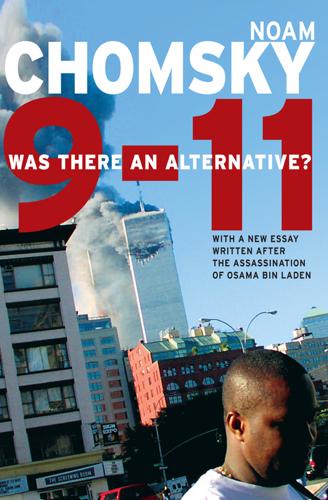
9-11
by
Noam Chomsky
Published 29 Aug 2011
Both of these are legacies of the Reagan administration, which pretended it did not know that Zia ul-Haq, the most vicious of Pakistan’s military dictators and a Washington favorite, was developing nuclear weapons and was also carrying out a program of radical Islamization of Pakistan with Saudi funding. The potential catastrophe lurking in the background is that these two legacies might combine, with fissile materials leaking into the hands of Jihadis, in which case we might see nuclear weapons (most likely “dirty bombs”) exploding in London and New York. Lieven summarizes by remarking that “U.S. and British soldiers are in effect dying in Afghanistan in order to make the world more dangerous for American and British peoples.”5 The threat that U.S. operations in what has been christened “Afpak”—Afghanistan-Pakistan—might destabilize and radicalize Pakistan is surely understood in Washington.
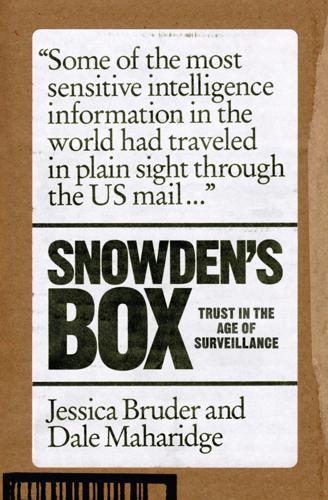
Snowden's Box: Trust in the Age of Surveillance
by
Jessica Bruder
and
Dale Maharidge
Published 29 Mar 2020
It urged the courts to exercise “suspicion” over any practices that “might deter” citizens from exercising their First Amendment rights freely. After the Snowden revelations, there was a sudden drop in online traffic to terrorism-related Wikipedia articles, according to research published by the Berkeley Technology Law Journal. The articles included entries titled “dirty bomb,” “Al Qaeda,” “improvised explosive device,” “nuclear enrichment,” “extremism,” and “suicide attack.” It’s possible that terrorists decided to stop using Wikipedia — but more likely that the public was afraid. Other researchers noticed “chilling effects” when studying Google search traffic for privacy-sensitive search terms around the same period.
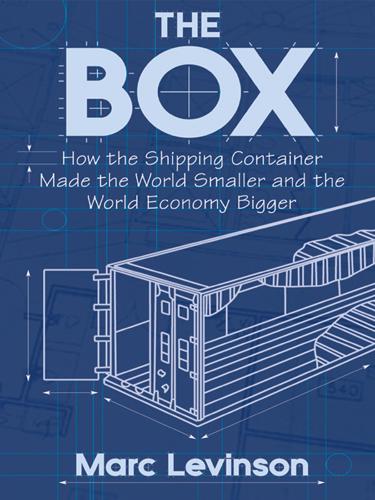
The Box: How the Shipping Container Made the World Smaller and the World Economy Bigger
by
Marc Levinson
Published 1 Jan 2006
The seriousness of that threat was impossible to evaluate, although experience has made clear that terrorists bent on wreaking large-scale devastation can do so with readily available materials—ammonium nitrate fertilizer, propane, explosives embedded with nails—without going to the trouble of building a “dirty bomb.” Nonetheless, containers suddenly came into public consciousness as an urgent threat, one that no government anywhere was equipped to confront. A large-scale spending program inevitably followed, with radiation detectors appearing at port gates and port workers mandated to wear supposedly tamper-proof identity cards.
…
The exhaust of containerships and the trucks and trains serving them had become a massive environmental problem, and the endless growth of traffic in and out of expanding ports was subjecting nearby communities to congestion, noise, and high rates of cancer attributed to diesel emissions; the price tag for a cleanup in Los Angeles and Long Beach alone was estimated to be $11 billion. The flood of containers had become a major headache for security officials concerned that a single box, loaded with a radioactive “dirty” bomb timed to explode upon arrival in a major port, could contaminate an entire city and throw international commerce into chaos; radiation detectors went up at the gates to many terminals in an effort to keep terrorist containers from being loaded aboard ships. The use of containers outfitted with mattresses and toilets to smuggle immigrants had become routine, with immigration inspectors unable to detect more than a tiny share of containers with human cargo among the hundreds of thousands of boxes filled with legitimate goods.20 None of these problems, serious as they were, posed the most remote threat to the growth of container shipping.
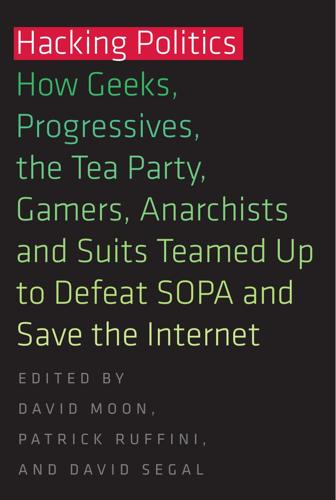
Hacking Politics: How Geeks, Progressives, the Tea Party, Gamers, Anarchists and Suits Teamed Up to Defeat SOPA and Save the Internet
by
David Moon
,
Patrick Ruffini
,
David Segal
,
Aaron Swartz
,
Lawrence Lessig
,
Cory Doctorow
,
Zoe Lofgren
,
Jamie Laurie
,
Ron Paul
,
Mike Masnick
,
Kim Dotcom
,
Tiffiniy Cheng
,
Alexis Ohanian
,
Nicole Powers
and
Josh Levy
Published 30 Apr 2013
David Segal [Lamar] Smith thought he was being savvy. He’d introduce legislation that was more extreme than PIPA, making PIPA look reasonable, thereby helping ensure its passage: it would be the new “compromise” between the extremes of “leave well enough alone” and “that runaway train loaded up with dirty bombs that Lamar Smith introduced last week.” Maybe, just maybe, he’d even get lucky and pass SOPA outright: Hollywood had its talons in the bulk of the Democratic caucus; the Chamber of Commerce could force enough Republicans to the table and offer them nose-plugs that they could use to avoid the stench of those pansy Los Angeles effetes whose bidding they were being compelled to do … Dave Dayen The timing also struck me.
…
It’s impossible to know exactly what Lamar Smith was thinking, but if I may pull my stuffy old legislator’s garb out of the closet it’s been in for a couple of years and speculate: Smith thought he was being savvy. He’d introduce legislation that was more extreme than PIPA, making PIPA look reasonable, thereby helping ensure its passage: it would be the new “compromise” between the extremes of “leave well enough alone” and “that runaway train loaded up with dirty bombs that Lamar Smith introduced last week.” Maybe, just maybe, he’d even get lucky and pass SOPA outright: Hollywood had its talons in the bulk of the Democratic caucus; the Chamber of Commerce could force enough Republicans to the table and offer them nose-plugs that they could use to avoid the stench of those pansy Los Angeles effetes whose bidding they were being compelled to do.
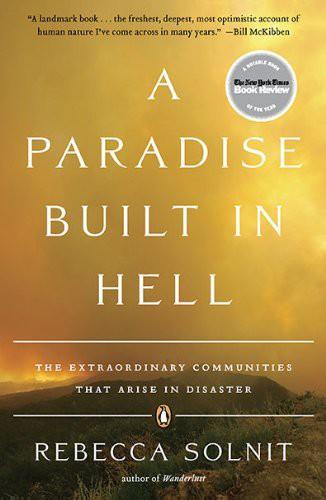
A Paradise Built in Hell: Extraordinary Communities That Arise in Disaster
by
Rebecca Solnit
Published 31 Aug 2010
It’s how you might treat a child. If you’re the mayor of a city and you get bad news about something that might be coming your way and you’re worried that people might behave like little children, you don’t tell them. You presume instead that the police are going to maintain order, if the thing actually comes: a dirty bomb, a tornado, a hurricane into lower Manhattan. As we define it, elite panic, as does general panic, involves the breaking of social bonds. In the case of elite panic it involves the breaking of social bonds between people in positions that are higher than we are. . . . So there is some breaking of the social bond, and the person in the elite position does something that creates greater danger.
…
And despite the extraordinary atmosphere of those first weeks, they largely succeeded in destroying the disaster atmosphere of courage, improvisation, flexibility, and connectedness. Government officials and newly minted terrorism experts began to air endless scenarios for destruction by sophisticated means, from dirty bombs to airborne biological warfare, despite the lack of evidence of intention or ability by Al-Qaeda to use such means. The attacks had been carried out with box cutters, after all (and the largely forgotten anthrax attacks that soon followed turned out to be committed by someone with privileged access to the United States’ own bioweapons labs).

Doppelganger: A Trip Into the Mirror World
by
Naomi Klein
Published 11 Sep 2023
Vladimir Putin, too, is a master at mirroring, and has been since the early days of his career in politics. Throughout Russia’s illegal invasion and occupation of Ukraine, Putin would accuse the Ukrainian government of the precise crimes he was busily committing, or considering committing, himself. When, in October 2022, Russia accused Ukraine of being about to set off a dirty bomb in its own territory and then pin the blame on Russia, Ned Price, a State Department spokesman, said it was part of a pattern of “mirror imaging,” adding, “The Russians have accused the Ukrainians, the Russians have accused other countries, of what it itself was planning.” And yet, if Putin was able to sell these upside-down claims to many, it’s partly because the U.S. government consistently does this kind of mirror imaging itself, feigning outrage over Russian interference in U.S. elections with no concern for the irony that its intelligence operatives have meddled in elections and helped overthrow democratically elected governments the world over since the 1950s, from Iran to Chile to Honduras—and let’s not forget the gloves-off U.S. interference in post-Soviet Russia to back Boris Yeltsin, who passed the baton on to none other than Putin.
…
MAGA’s Plus-One Trump fomented … Democrats enabled: Patricia Zengerle, Richard Cowan, and Doina Chiacu, “Trump Incited Jan. 6 Attack After ‘Unhinged’ White House Meeting, Panel Told,” Reuters, July 12, 2022; Dan Friedman and Abigail Weinberg, “Here’s the Whole Transcript of That Leaked Steve Bannon Tape, Annotated,” Mother Jones, August 17, 2022. Russia accused Ukraine … “mirror imaging”: “Putin Accuses Ukraine of ‘Dirty Bomb’ Plans, Says Risks of World Conflict High,” Reuters, October 26, 2022; “Ukraine Says Russian Troops Will Fight for Key City as Proxy Government Flees,” New York Times, October 24, 2022. feigning outrage … gloves-off U.S. interference: Julian Barnes, “Russian Interference in 2020 Included Influencing Trump Associates, Report Says,” March 16, 2021; Elaine Sciolino, “U.S. to Back Yeltsin If He Suspends Congress,” New York Times, March 13, 1993.
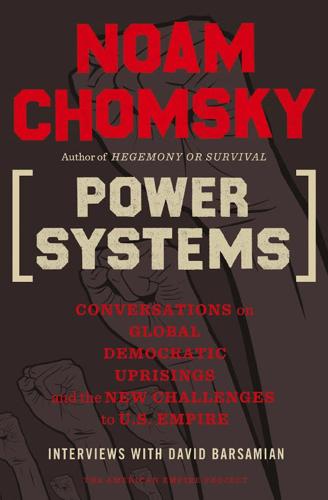
Power Systems: Conversations on Global Democratic Uprisings and the New Challenges to U.S. Empire
by
Noam Chomsky
and
David Barsamian
Published 1 Nov 2012
One of his primary goals was to bring about a radical Islamization of the country, establishing madrassas all over the place. That’s where the Taliban come from. So yes, there is a radical Islamic element in Pakistan, and it’s almost certainly engaged in some fashion in the vast nuclear industry. It’s conceivable that under pressure you might find leakage of nuclear materials to jihadi hands, which could lead to a dirty bomb in London or New York. It’s likely. 6 Mental Slavery CAMBRIDGE, MASSACHUSETTS (JANUARY 20, 2012) Bob Marley, the famous reggae singer from Jamaica, sang a popular lyric: “Emancipate yourself from mental slavery.”1 That’s a theme that you’ve returned to quite a bit in your work. I should know that song.
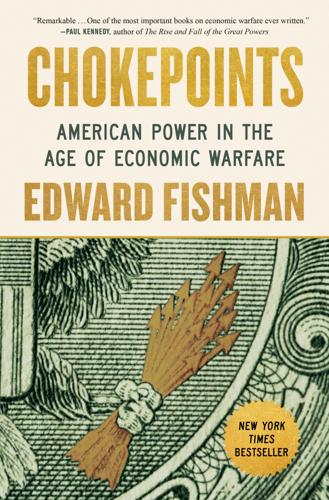
Chokepoints: American Power in the Age of Economic Warfare
by
Edward Fishman
Published 25 Feb 2025
That Iran would plan such a brazen attack in the heart of America’s capital was bone-chilling. It also lent credence to the view that the Iranian regime was untethered to reality and might well use a nuclear weapon—or perhaps transfer the radioactive ingredients for a “dirty bomb” to Hezbollah or another militant proxy—if its capabilities were allowed to grow. The “dirty bomb” scenario, in which Tehran might secretly help terrorists stage a catastrophic attack using a makeshift nuclear device, kept Adam Szubin up at night. Concepts like mutual assured destruction that deterred nation-states from using nuclear weapons might fail against Hezbollah, Szubin feared, because an attack by such a group would leave “no return address.”
…
Treasury Department, xviii, 91–92, 95, 96, 103, 172–74 IAEA (International Atomic Energy Agency), 73–74, 76, 94, 129 IBM, 234 IEEPA (International Emergency Economic Powers Act), xviii, 38, 54, 300, 314 Ilovaisk, 188–89 ILSA (Iran and Libya Sanctions Act), xviii, 56, 57, 61, 69, 71, 80, 85, 87, 90, 133 Ilves, Toomas Hendrik, 286, 288 IMF (International Monetary Fund), 25, 30, 152, 153, 171, 173, 209, 210, 218 India, 90, 95, 99–102, 104–5, 117–18, 126, 274, 323, 359, 406–7, 413 in BRICS, 398–401, 399 China and, 404–5 Russia and, 361–62, 364–66, 370, 371, 376, 377, 386, 387, 406, 412 Indian Oil, 101 Indonesia, 376–77 Industrial Bank of Korea, 111 Inflation Reduction Act, 395, 408 Inpex, 86, 87 INSTEX (Instrument in Support of Trade Exchanges), 305 Intel, 257, 268 intellectual property, 6, 282 China’s theft of, 232, 234, 236, 237, 244, 252, 253, 254, 263–64, 270, 272, 299, 418 International Criminal Court, 314 International Energy Agency, 387 International Group of P&I Clubs, 372, 376, 386–87 Iran, 42, 45, 49–52, 53–57, 58–63, 125, 131, 159, 214, 246, 260, 310, 411, 413 airplanes in, 121 Bush administration and, 72 Cafe Milano plot and, 93, 94 chicken in, 107–9 China and, 78, 79, 87, 90, 95, 126 economy of, 52, 56, 68, 71, 77–79, 89, 90, 107–10, 112, 116–18, 122, 131, 314 energy sector in, 56, 57, 60–61, 68–69, 78–80, 86, 87, 89–92, 396, 413 Green Revolution in, 73, 76, 113 Hamas and, 413 Hezbollah and, 49, 55, 65, 93–94, 105, 119, 124 Huawei and, 266–67 hostage crisis in, 50, 54–55 Iraq’s war with, 76, 108, 109 Israel and, 49–50, 59, 60, 71, 89, 92, 94, 98, 102, 116, 121–22, 131 Obama and, 69, 70–76 presidential elections in, 52, 59, 73, 112–14, 114, 115, 116 Republican senators’ letter to leaders of, 125 1979 revolution in, 54, 82, 109, 118, 120 rial currency of, 107–10 Russia and, 74, 76, 77, 396 Saudi Arabia and, 102, 103, 325, 396 shah in, 54 Tajikistan and, 85 Tehran Grand Bazaar protests in, 109–10 terrorism and, 55, 56, 62 Trump and, 248–49 UAE and, 82–84 UN and, 67, 113 U.S. back channel with, 115–18 U.S. military hardware purchased by, 54 Iran, nuclear program of, 4, 7, 42, 49–50, 52, 53–57, 58–63, 64–69, 71–76, 77–79, 88–92, 93–95, 102, 103, 105, 110, 113, 114, 130, 131, 134, 135, 146, 158, 216, 220, 238, 314, 320–21, 410, 413, 417, 418 dirty bomb scenario and, 93–94 Fordow facility in, 74–76, 77, 78, 88, 120 freezing of, 121–22, 123, 124 IAEA and, 73–74, 76, 94, 129 Joint Comprehensive Plan of Action agreement on, xviii, 127–29, 133–34, 141, 154, 248–49, 260, 282, 305, 313, 314, 344, 383, 410, 416, 417–19 map of sites in, 75 negotiations and Joint Plan of Action on, 115–17, 119–27 Obama administration and, 89, 116, 119, 125, 129, 303 power plant bidding ads, 65, 66 Rouhani and, 117 Russia fuel swap proposal and, 74, 76, 77 sanctions and, see Iran sanctions Tehran Research Reactor, 74 zone of immunity and, 98 Iran sanctions, 7, 49–52, 55–57, 59–63, 71, 73, 76, 77–81, 83–87, 88–92, 93–97, 98–106, 107–14, 118, 123, 125, 130–35, 141–43, 150, 158, 159, 169–70, 177, 180, 216–19, 231, 259, 290, 293, 303, 320–21, 353, 380, 417, 419, 420 attempts to circumvent, 112 on auto industry, 118, 121 banks and, 62–63, 64–69, 72, 78, 80, 82–85, 89, 104, 105, 110–11, 120, 124, 132, 134–35, 134, 159, 172, 175, 195, 282, 288, 302, 343, 344 blocking, 62–63, 67, 69, 95, 175, 204, 343 Bush administration and, 59, 61, 63, 67–69, 79 Central Bank and, 89–92, 94–95, 98, 99, 105, 107, 111, 124, 132, 172, 302 China and, 78, 79, 87, 90, 95, 99–102, 104–5, 111, 117–18, 132, 133 CISADA (Comprehensive Iran Sanctions, Accountability, and Divestment Act), xvii, 79–81, 82–87, 89, 90, 97, 132 Cohen and, 53, 70–71, 89, 91, 95–97, 97, 99, 105–6, 107, 118, 131, 132, 143, 162, 163, 164, 172, 303 costs of violating, 85–86, 89, 99, 133, 288 dollar access and, 86, 133, 219, 293 effects on Iranian citizens, 108 escrowed oil funds in, 105–6, 111–12, 117, 118, 120, 124, 132, 417 EU and, 56, 57, 78–80, 94, 95, 98–100, 104, 107, 127 INSTEX and, 305 Iran and Libya Sanctions Act (ILSA), xviii, 56, 57, 61, 69, 71, 80, 85, 87, 90, 133 Iran Threat Reduction and Syria Human Rights Act, 105–6 ISA (Iran Sanctions Act), see Iran and Libya Sanctions Act Joint Plan of Action and, 121–22, 123–24 Levey and, 59–63, 64–69, 72, 78, 80, 83–85, 88, 89, 100, 131, 132, 134, 135, 172, 219, 278, 288, 303, 420 maximum leverage point in, 118 Menendez-Kirk oil reduction strategy, xviii, 95–97, 98–102, 104–6, 107, 117 Obama administration and, 71–73, 77–81, 82, 85, 91, 92, 93–97, 97, 98–106, 108, 118, 119, 124–26, 130, 133, 260, 314, 364, 365 oil companies’ exit from Iran, 80, 86–87 sanctions on Iranian oil sales, 89–92, 94, 95, 98–106, 103, 109, 117–18, 176, 219, 282, 344, 364–65, 368–70, 375, 406, 419 relief negotiations, 116–22, 123–27, 132, 134 Rouhani and, 113–14, 116, 117 Saudi oil and, 102, 103, 325 secondary, 56, 57, 80, 83, 86, 90, 100, 101, 127, 133, 282, 305 State Department and, 63, 67, 72–73, 76, 77, 80, 92, 94–96, 101, 115, 118–20, 134, 364 SWIFT and, 104 Szubin and, 49–52, 60, 61, 67, 77, 80, 89, 93–95, 105–6, 107, 118, 120–22, 124, 128, 129, 131, 133, 219, 303 Trump’s reintroduction of, 260, 282, 314, 418, 420 UAE and, 83–85, 119 UN and, 63, 77–81, 85, 120, 127, 132 U.S. economy and, 91–92, 95, 96, 99 violations of, 67, 124, 133–35 ZTE and, 22, 256, 264, 303 Iraq, 16–17, 42, 213 Gulf War in, 17, 18, 37, 235, 359 humanitarian crisis in, 18, 130, 314 Iran’s war with, 76, 108, 109, 130 Kuwait invaded by, 16–18, 353 oil of, 16–18, 99, 102 UN and, 16–18, 35, 43, 147, 314 U.S. invasion of, 7, 17, 38, 42, 49, 58, 73, 146, 147, 229, 338, 353, 410, 416 weapons of mass destruction in, 17, 18, 49, 58, 73 Iraq Survey Group, 58 IRGC (Islamic Revolutionary Guard Corps), 49, 55, 64, 67, 73, 93, 94, 109, 112 ISA (Iran Sanctions Act), see Iran and Libya Sanctions Act (ILSA) ISIS, 213–15 Israel, 69 AIPAC (American Israel Public Affairs Committee), 71, 90, 104, 105 in Arab-Israeli War, 50 Hamas attack on, 413 Iran and, 49–50, 59, 60, 71, 89, 92, 94, 98, 102, 116, 121–22, 131 Mossad in, 88, 131 in Yom Kippur War, 28 Istanbul, 1, 386 Italy, 14–16, 176, 179, 211, 243, 271, 287, 345–46, 366 J Jafarzadeh, Alireza, 58 Jalili, Saeed, 76, 113 James, LeBron, 424 January 6 U.S.
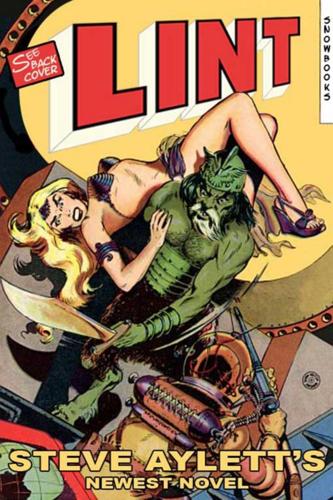
Lint
by
Steve Aylett
Published 2 May 2005
Some commentators have suggested that this was the terrified shrieking of the Smile Group themselves. 17. After adjustments the toy was released as Hungry Hungry Hippos. 18. Some fans have made a connection between the Arkwitch movie and Buckaroo Banzai, but the latter is actually far more inventive. 19. I disagree. 20. The coffin supposedly contains a “dirty bomb.” 03.ch21-bm.lint 3/18/05 4:05 PM Page 206 03.ch21-bm.lint 3/18/05 4:05 PM Page 207 BIBLIOGRAPHY Algren, Nelson. Nonconformity. Seven Stories Press, 1996. “Asimov, Isaac.” Sadly Disappointed. Pyramid Publications, 1974. Aylett, Steve. Shamanspace. Codex, 2001. Baldensperger, Philip J.
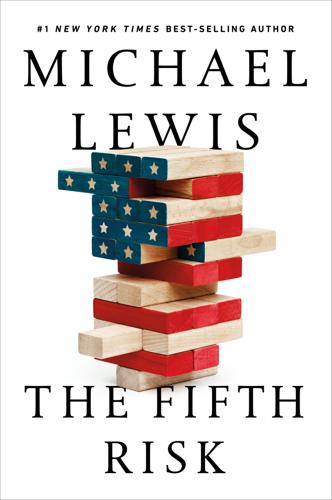
The Fifth Risk
by
Michael Lewis
Published 1 Oct 2018
It contained a collection of programs and offices without a clear organizing principle. About half its budget in 2016 went to maintaining the nuclear arsenal and protecting Americans from nuclear threats. It sent teams with equipment to big public events—the Super Bowl, for instance—to measure the radiation levels, in hopes of detecting a dirty bomb before it exploded. “They really were doing things to, like, keep New York safe,” said MacWilliams. “These are not hypothetical things. These are actual risks.” A quarter of the budget went to cleaning up all the unholy world-historic mess left behind by the manufacture of nuclear weapons. The last quarter of the budget went into a rattlebag of programs aimed at shaping Americans’ access to, and use of, energy.
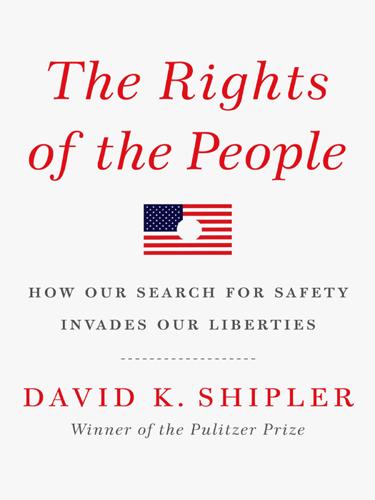
The Rights of the People
by
David K. Shipler
Published 18 Apr 2011
The other American, Jose Padilla, was arrested at Chicago’s O’Hare Airport on May 8, 2002, after flying in from Zurich. His name had been mentioned during the interrogation of Abu Zubaydah, a training camp personnel clerk originally thought to be third or fourth in the al-Qaeda hierarchy,30 who described Padilla as part of a plot to detonate a “dirty bomb” that would spread radioactivity somewhere inside the United States.31 Padilla had been convicted for murder as a juvenile and then for gun possession in Florida. He converted to Islam in prison, moved to Egypt after his release, and traveled to Saudi Arabia, Pakistan, and Afghanistan, where in 2000 he allegedly enrolled in an al-Qaeda camp.
…
Rather than argue essentially the same case again, the government delayed, then finally transferred Padilla to the criminal justice system, though not until shortly before his appeal was to be heard by the Supreme Court.33 He claimed that he was tortured in the brig. But his statements, evidently coerced, were touted by officials as evidence of al-Qaeda plots foiled. These included the “dirty bomb” scheme, training by al-Qaeda in explosives, and a plan to “undertake a mission to blow up apartment buildings in the United States using natural gas,” a Senate committee was told by Deputy Attorney General James Comey. During interrogations, he allegedly admitted to laying plans with Khalid Sheikh Mohammed and other prominent al-Qaeda figures.34 This may have been true, but it was impossible to know, since the information was given under duress, a process the military didn’t want disrupted.
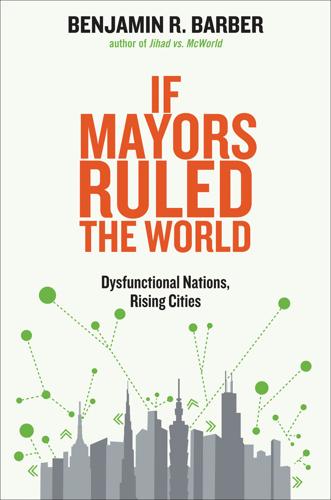
If Mayors Ruled the World: Dysfunctional Nations, Rising Cities
by
Benjamin R. Barber
Published 5 Nov 2013
What we require are ways to act informally and piecemeal across borders that give substance to declarations of human rights, to realize the noble goals about which the Disunited Nations have mostly rhapsodized. States still set the terms, but cities bear the consequences. To take a poignant example, if terrorists manage to detonate a dirty bomb imported on a container ship, it may be nation-states like the “great Satan” United States of America they mean to punish, but it will be cities like Los Angeles and New York that suffer the carnage. Boston is only the latest American city to have experienced the consequences of a terrorist’s global rage.
…
With or without Interpol, the greatest nightmare cities like Tokyo, Mumbai, New York, São Paulo, and London face in securing themselves against terrorism—with consequences no nation qua nation will directly face—is a downtown bomb strike by a terrorist group. It is too easy to imagine a cell securing a loose nuke or dirty bomb (clad in fissionable radioactive material) and importing it on one of those ubiquitous container ships that enter ports around the world, mostly uninspected. The second half of the twentieth century was marked by the unthinkable peril of nuclear winter, a thermonuclear exchange among state superpowers devoted to “mutual assured destruction”—the so-called MAD strategy of threatening reciprocal annihilation in order to deter conflict altogether.
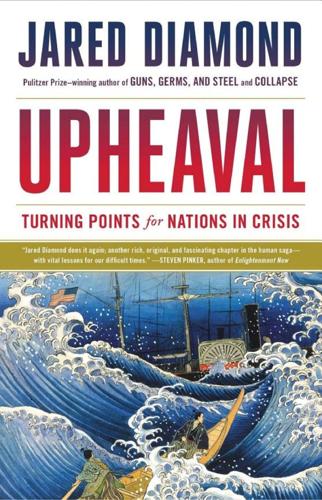
Upheaval: Turning Points for Nations in Crisis
by
Jared Diamond
Published 6 May 2019
But more likely, terrorists might obtain bomb material by an “inside job,” i.e., with the help of bomb storage personnel or leaders of Pakistan, North Korea, or Iran. A related risk often confused with that danger of terrorists acquiring a nuclear bomb is the risk of their acquiring a so-called “dirty bomb”: a conventional non-nuclear explosive bomb whose package includes non-explosive but long-lived radioactive material, such as the isotope cesium-137 with a half-life of 30 years. Detonation of the bomb in an American or other city would spread the cesium over an area of many blocks that would become permanently uninhabitable, as well as having a big psychological impact.
…
Terrorists have already demonstrated their capacity to explode bombs in cities of numerous countries, and cesium-137 is readily available in hospitals because of its medical uses. Hence it’s surprising that terrorists haven’t already added cesium-137 to their non-nuclear bombs. Of these four sets of scenarios, the most likely is the one involving terrorists using a dirty bomb (easy to make) or a nuclear bomb. The former would kill just a few people, the latter “just” a Hiroshima-like death toll of a hundred thousand people—but both would have consequences far eclipsing those death tolls. Less likely, but still possible, are the first three scenarios that could kill hundreds of millions of people directly, and ultimately most people on Earth.

London Review of Books
by
London Review of Books
Published 14 Dec 2017
As well as using chemicals and explosives, oil companies deploy radioactive materials in their quest for oil. Nuclear probes are inserted into potential wells in order to determine whether they are suitable candidates for further exploration. These probes also happen to be the perfect size to use as the core of a dirty bomb. As a consequence, in all jurisdictions in which they are used they are heavily regulated. But in Libya there was no longer any regulation. My company’s store of nuclear materials was kept in a bunker designed to withstand the force of a massive explosion and was normally heavily protected by specially trained troops.
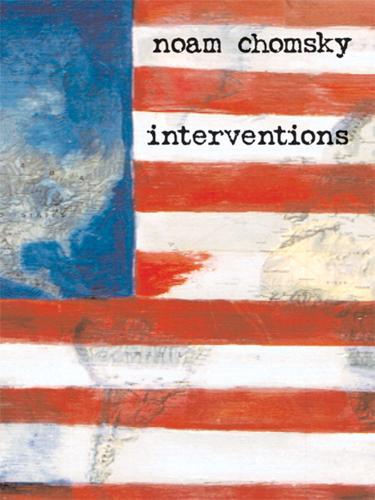
Interventions
by
Noam Chomsky
McNamara endorses the judgment of William Perry, President Bill Clinton’s defense secretary, that “there is a greater than 50 percent probability of a nuclear strike on U.S. targets within a decade.” Similar judgments are commonly expressed by prominent strategic analysts. In his book Nuclear Terrorism (2004), Harvard international relations specialist Graham Allison reports the “consensus in the national security community” (of which he has been a part) that a “dirty bomb” attack is “inevitable,” and an attack with a nuclear weapon highly likely, if fissionable materials—the essential ingredient—are not retrieved and secured. Allison reviews the partial success of efforts to do so since the early 1990s, under the initiatives of Senator Sam Nunn and Senator Richard Lugar, and the setback to these programs from the first days of the Bush administration, paralyzed by what Senator Joseph Biden called “ideological idiocy.”

The 9/11 Wars
by
Jason Burke
Published 1 Sep 2011
This did not stop the non-existent ricin being cited in Powell’s United Nations speech as a potential link between al-Qaeda, Iraq and Europe.29 The alleged plot to attack Old Trafford ran across front pages and led bulletins in Britain for two days but turned out to have been entirely based on the discovery by investigating policemen of a couple of ticket stubs and a scarf in the homes of one of the accused, who, ironically, were Iraqi Kurdish refugees who had fled Saddam Hussein’s regime.30 When in August 2002 a man was arrested in Stockholm’s Västerås airport with a gun in his toilet bag the mere fact that he had been travelling on a plane with a group of Muslims who were on their way to a conference on the Salafi strand of Islam in the British city of Birmingham was enough for UK newspapers to splash a ‘bin Laden link’ on their front pages. Prosecutors found no such connection or indeed any terrorist intent at all.31 In America, there was much talk of ‘dirty bombs’, devices laced with sub-explosive radioactive material, largely based on the interrogation under torture of Abu Zubaydah and of an American Hispanic former gang member and convert detained in 2002.32 One major scare, which led to flights to the USA from Britain and France being cancelled and warnings from officials of a looming ‘spectacular attack’ to rival 9/11, was based on an elaborate confidence trick by a compulsive gambler who claimed to have developed software that allowed him to decrypt messages to al-Qaeda sleeper cells buried deep in America hidden in al-Jazeera broadcasts.33 Official statements, such as the leaked intelligence estimates that there were as many as 5,000 ‘al-Qaeda terrorists and supporters’ and warnings by FBI director Robert Mueller of a ‘support infrastructure’ in America ‘which would allow the network to mount another attack on US soil’, stoked further fears.34 The strand of extremist ideology that bin Laden had propagated over previous years had indeed penetrated some American communities – a group of young men of Yemeni origin from the nondescript New York state town of Lackawanna who had travelled to an Afghan training camp before 9/11 were arrested amid massive publicity – but its purchase was extremely limited.
…
See the excellent investigation by Peter Oborne, ‘The Use and Abuse of Terror’, in Playing Politics with Terrorism, ed. George Kassimeris, Hurst, 2007, pp. 124–5. 31. Hala Jaber, ‘Ryanair gunman: I was not going to crash plane’, Sunday Times, October 13, 2002. 32. José Padilla was eventually convicted of terrorism charges, but the allegation of planning a dirty bomb – leaked to the press and covered extensively – was dropped. For more on the interrogation of Abu Zubaydah see Rose, ‘Tortured reasoning’. 33. Chris McGreal, ‘The Nevada gambler, al-Qaida, the CIA and the mother of all cons’, Guardian, December 23, 2009. 34. John Mueller, ‘Is There Still a Terrorist Threat?
…
Home Office Statistical Bulletin, quarterly update to December 2009, June 2010, p. 5. 20. Alan Travis, ‘Two-thirds of UK terror suspects released without charge’, Guardian, May 13, 2009. 21. One good indication of when the conventional threat was considered to be less worrying was a renewed emphasis on unconventional attacks involving radioactive ‘dirty’ bombs, makeshift chemical weapons or similar. Briefings of journalists by politicians and security officials about the terrorist threat to the UK in early 2009 frequently stressed the potential consequences of such an attack. 22. Four British men in their early twenties, known as the Nairobi Four, were arrested in Kenya in January 2007, after allegedly fighting in the Somali civil war, and an unnamed twenty-one-year-old university student from Ealing, west London, was reported to have blown himself up at a checkpoint in Somalia in February 2009. 23.
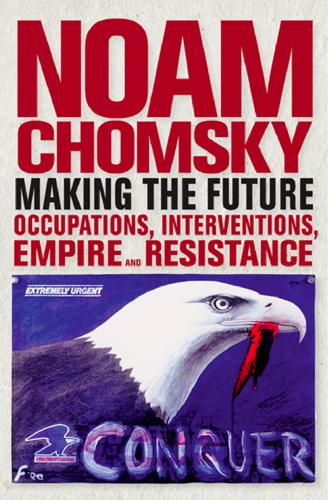
Making the Future: The Unipolar Imperial Moment
by
Noam Chomsky
Published 15 Mar 2010
Reagan officials pretended they did not know that Zia ul-Haq, the most vicious of Pakistan’s military dictators and a Washington favorite, was developing nuclear weapons and carrying out a program of radical Islamization of Pakistan with Saudi funding. The catastrophe lurking in the background is that these two legacies might combine, with fissile materials leaking into the hands of jihadis. Thus we might see nuclear weapons, most likely “dirty bombs,” exploding in London and New York. Lieven summarizes: “U.S. and British soldiers are in effect dying in Afghanistan in order to make the world more dangerous for American and British peoples.” Surely Washington understands that U.S. operations in what has been christened “Afpak”—Afghanistan-Pakistan—might destabilize and radicalize Pakistan.
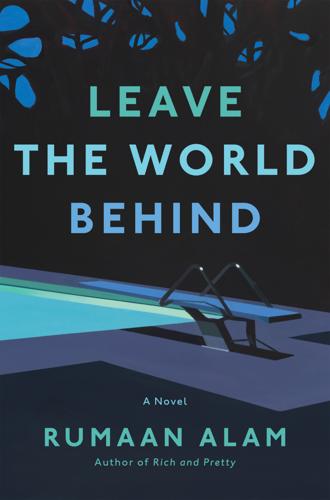
Leave the World Behind
by
Rumaan Alam
Published 15 Dec 2020
He was suddenly aware how messy the room was, how thoroughly they’d made themselves sloppily at home. “Let’s eat something.” He said it like it was his idea. Professors learned that, taking the occasional insightful classroom comment and transforming it into fact. Ruth noticed that the sink was full of dirty dishes. She pretended not to be disgusted. “A dirty bomb in Times Square? Or some coordinated effort at the power plants?” She had never thought of herself as imaginative, but now she was discovering a flair for it. It only sounded like paranoia if you were wrong. Think of what had been done and forgotten in their lifetimes—in the past decade alone. “We shouldn’t speculate.”

Extreme Money: Masters of the Universe and the Cult of Risk
by
Satyajit Das
Published 14 Oct 2011
In the film, Dorothy’s slippers are red rather than silver, a concession to Hollywood cinematography.10 In Ian Fleming’s 1959 novel Goldfinger, James Bond, Agent 007, is sent to investigate Auric Goldfinger, the mysterious Swiss financier who is smuggling gold. Goldfinger’s plot is to boost the value of his gold through an audacious attack on the Fort Knox gold depositary. Goldfinger plans to contaminate the gold by exploding a nuclear device—a dirty bomb. Goldfinger’s own stock of uncontaminated gold would increase in value astronomically. Bond discerns the plot through dazzling mental arithmetic—Fort Knox’s $15 billion dollars of gold equated to more than 400 million ounces, which would weigh over 12,000 tons, making it difficult to carry off.
…
See also exotic products AIG, 230-234 arbitrage, 242 central banks, 281-282 deconstruction, 235-236 first-to-default (FtD) swaps, 220-221 Harvard case studies, 214-215 hedging, 216-217 Italy, 215-216 Jerome Kerviel, 226-230 managing risk, 124 markets, 235, 334 municipal bonds, 211-214 price movements, 210-211 risk, 218-219 design of, 225 Fiat, 222-223 Greece, 223, 225 sale of to ordinary investors, 332-333 sovereign debt, 236-238 TARDIS trades, 217-218 TOBs (tender option bonds), 222 Derman, Emanuel, 309 Derrida, Jacques, 236 Descartes, René, 228 Detroit, 42 Deutsche Bank, 79, 195, 272, 312 Devaney, John, 255 di Lampedusa, Giuseppe, 353 digitals, 211 Dillion Read, 201 Dimon, Jamie, 283, 290 dinars, 21 Diners Club, 71 Dirac, Paul, 104 dirty bombs, 26 disaster capitalism, 342 discrete time intervals, 121 dismal science, 102-104 dispersion swaps, 255 distressed debt trading, 242 distributions, normal, 126 diversification, 122-124 dividends, 119 Dixon, Geoff, 156 documentation requirements, 181 DOG (debt overburdened group), 161 dollars American, 21-22, 28, 87 aussies, 21 kiwis, 21 Zimbabwe, 23 domain knowledge, 64 domestic corporate profits, United States, 276 Dominion Bond Rating Service, 283 doomsday clock, 34 Dorgan, Bryan, 67 Douglas, Michael, 167, 310 Dow 36,000, 99 Dow 40,000: Strategies for Profiting from the Greatest Bull Market in History, 97 Dow 100,000, 97 Dow Jones Industrial Average (DJIA), 89, 97, 126 Dr.

The Looming Tower: Al-Qaeda and the Road to 9/11
by
Lawrence Wright
Published 26 Sep 2006
By placing the bomb in the southern corner of the garage, Yousef intended to topple one tower onto the other, bringing the entire complex down and killing what he hoped would be 250,000 people—a toll he thought equaled the pain the Palestinians had experienced because of America’s support of Israel. He had hoped to maximize the casualties by packing the device, made of ammonium nitrate and fuel oil, with sodium cyanide, or by making a dirty bomb with radioactive material smuggled out of the former Soviet Union, which would contaminate much of lower Manhattan. The explosion blew through six stories of structural steel and cement, all the way down to the PATH train station below the garage and up to the Marriott ballroom above it. The shock was so great that tourists felt the ground shudder a mile away on Ellis Island.
…
bin Laden was financially backing: interview with Tom Corrigan. World Trade Center bombing: interviews with Frank Pellegrino, David Kelley, Lewis Schiliro, James Kallstrom, Joe Cantemessa, Richard A. Clarke, Thomas Pickard, Pascual “Pat” D’Amuro, Mark Rossini, Mary Galligan, and Tom Corrigan. 178 sodium cyanide: Reeve, The New Jackals, 43. dirty bomb: ibid., 147. tourists felt: ibid., 12. hospital casualties: ibid., 15. 179 Zawahiri appeared on the speaker circuit: There is considerable dispute about the exact date of Zawahiri’s trip to the United States, or whether there was more than one. Ali Mohammed, the FBI’s main source on this matter, told investigators that Zawahiri traveled to Brooklyn in 1988 in the company of Abu Khaled al-Masri, which is an alias for Mohammed Shawki Islambouli, the brother of the assassin of Anwar al-Sadat, and who was on the shura council of al-Jihad.
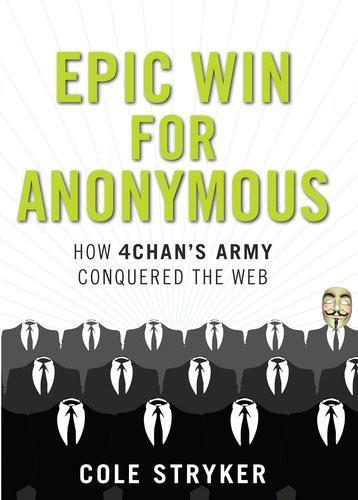
Epic Win for Anonymous: How 4chan's Army Conquered the Web
by
Cole Stryker
Published 14 Jun 2011
Last modified December 28, 2010. http://rendit.tumblr.com/post/2498287662/summerofmegadeth-scenes-from-a-meatup-relative. Reisinger, Don. “Assange: Facebook is an ‘appalling spy machine.’” CNET. Last modified May 3, 2011. http://news.cnet.com/8301-13506_3-20059247-17.html#ixzz1LNaW3qw2. Rheingold, Howard. Interview with the author. May 5, 2011. Ross, Bryan. “Guilty Plea in NFL Dirty Bomb Hoax.” ABC News. Last modified February 28, 2008. http://blogs.abcnews.com/theblotter/2008/02/guilty-plea-in.html. Rotten. “Censorship @ Rotten Dot Com.” Last modified May 1997. http://www.rotten.com/about/obscene.html. Rutkoff, Aaron. “Sean Connery Delivers A Line That Eventually Sparks an Internet Fad.”
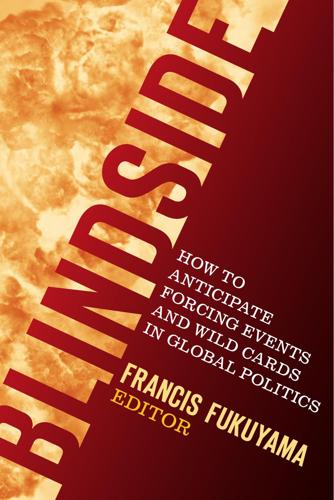
Blindside: How to Anticipate Forcing Events and Wild Cards in Global Politics
by
Francis Fukuyama
Published 27 Aug 2007
If not for three factors—the terrorists’ incompetence, responsible behavior by Iraq’s Shi‘a clerics who calmed things down, and the Nigerian military—February 2006 could have ended with a far larger loss. For the U.S. economy and the world economy at large, the danger of simultaneous multiple failures in the global oil industry could be more economically damaging than an outbreak of a pandemic or a dirty bomb set off in New York City. The supply disruptions of the 1970s cost the U.S. economy between $2.3 trillion and $2.5 trillion. 1 According to the National Defense Council Foundation, a disruption of similar proportions today could carry a price tag as high as $8 trillion—a figure equal to more than 60 percent of U.S. annual gross domestic product, or nearly $27,000 for every man, woman, and child living in America.2 This is more money than the United States has spent in all of its wars combined since 1776.
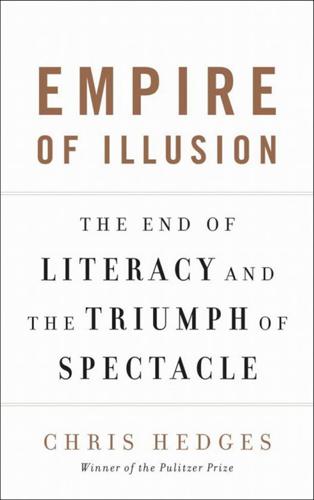
Empire of Illusion: The End of Literacy and the Triumph of Spectacle
by
Chris Hedges
Published 12 Jul 2009
And so we build Cold War relics such as the $14 billion Virginia-class submarines as well as the stealth fighters we engineered to evade radar systems the Soviets never built. We spend $8.9 billion on ICBM missile defense systems that would be useless in stopping a shipping container concealing a dirty bomb. The defense industry is able to monopolize the best scientific and research talent and squander the nation’s resources and investment capital. These defense industries produce nothing that is useful for society or the national trade account. They offer little more than a psychological security blanket for fearful Americans who want to feel protected and safe.

Four Battlegrounds
by
Paul Scharre
Published 18 Jan 2023
Air Force, February 17, 2014), 54, http://www.globalsecurity.org/military/library/policy/usaf/usaf-rpa-vector_vision-enabling-concepts_2013-2038.pdf; and Hope Hodge Seck, “Air Force Wants to Keep ‘Man in the Loop’ with B-21 Raider,” Defencetech.org, September 19, 2016, https://www.military.com/defensetech/2016/09/19/air-force-wants-to-keep-man-in-the-loop-with-b-21-raider. 289different risk calculus: “Russia Could Deploy Unmanned Bomber After 2040—Air Force,” RIA Novosti, GlobalSecurity.org, February 8, 2012, http://www.globalsecurity.org/wmd/library/news/russia/2012/russia-120802-rianovosti01.htm; Kyle Mizokami, “Experts: North Korea May Be Developing a Dirty Bomb Drone,” Popular Mechanics, December 28, 2016, http://www.popularmechanics.com/military/weapons/a24525/north-korea-dirty-bomb-drone/; H.I. Sutton, “Poseidon Torpedo,” Covert Shores, February 22, 2019, http://www.hisutton.com/Poseidon_Torpedo.html; Horowitz, Scharre, and Velez-Green, A Stable Nuclear Future? 289semiautomated “dead hand” device called “Perimeter”: Nicholas Thompson, “Inside the Apocalyptic Soviet Doomsday Machine,” Wired, September 21, 2009, https://www.wired.com/2009/09/mf-deadhand/; Vitalii Leonidovich Kataev, interview by Ellis Mishulovich, May 1993, http://nsarchive.gwu.edu/nukevault/ebb285/vol%20II%20Kataev.PDF; Varfolomei Vladimirovich Korobushin, interviewed by John G.
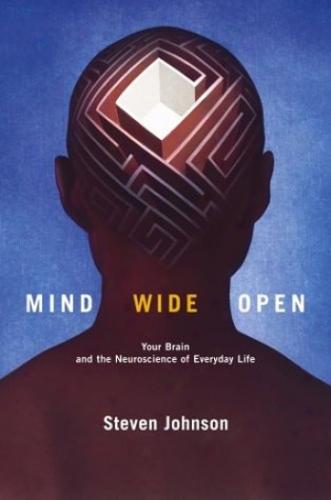
Mind Wide Open: Your Brain and the Neuroscience of Everyday Life
by
Steven Johnson
Published 2 Jan 1999
But then one day, while walking along the same path I had followed on the morning of the attacks, I had a small epiphany. I realized that my amygdala had stumbled across a clue that hadn’t occurred to my rational brain. Forget about all the other threats that arose in the public imagination after 9/11-anthrax and dirty bombs and smallpox-and think exclusively of the specific assaults that took place on that horrible day. If the threat that your brain is trying to protect you from is hijacked airplanes flying into skyscrapers by visual flight rules, then cloudy days are probably less dangerous than clear ones. If it’s hard enough to hit a building without a flight plan in perfect weather, then it’s almost impossible to do it when half the building is concealed by fog.
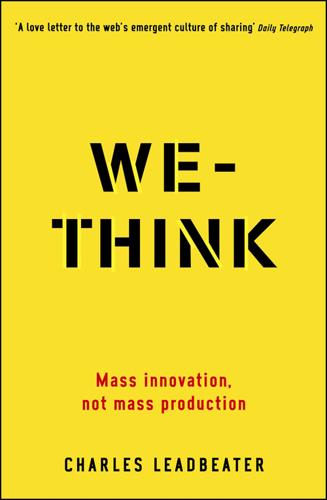
We-Think: Mass Innovation, Not Mass Production
by
Charles Leadbeater
Published 9 Dec 2010
The web enables small, dispersed groups to collaborate in ways that were previously impossible. That might be great for the small community that trades car parts for old Citröens, or for those who want to play poker against one another. It could be dreadful if it empowers a small group of fanatics to explode a dirty bomb in a major city. The more connected we are the more opportunities for collaboration there should be, but also the more vulnerable we become. The web’s critics argue that it will corrode much of what is valuable in our culture, which rests on learning and expertise, professionalism and specialism.
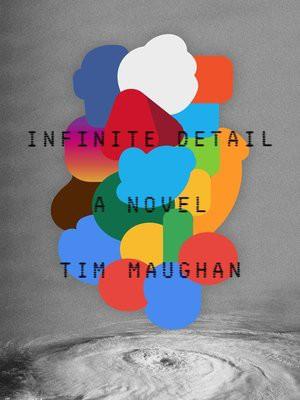
Infinite Detail
by
Tim Maughan
Published 1 Apr 2019
It was a weapon designed to take advantage of cities’ overhyped, unthinking, unquestioning desire to be “smart,” to be “always on,” to be “connected.” It was designed to be the consequence of untamed, badly planned, free-market-fueled, oversaturated urban networking, and to rip through it like a dirty bomb. Rush had seen claims that it had been connected to a steady increase in technological failures over the last few months: a video games industry conference in Los Angeles that had to be abandoned and had quickly dissolved into spoiled man-children rioting; an automated container terminal in Shanghai that shut itself down for nearly a week and caused the collapse of at least two shipping companies; and countless other blackouts and disruptive infrastructure failures.

New Dark Age: Technology and the End of the Future
by
James Bridle
Published 18 Jun 2018
Tickers had been used in breaking news situations before, as producers struggled to communicate the maximum amount of information and allow new viewers to quickly get up to speed. But after 9/11, the tickers never went away. The crisis became a daily, ongoing event, merging seamlessly into the war on terror, fears of dirty bombs, stock market collapses and occupations. In the news tickers, the discrete, empirical approach of bulletins was swept away in a constant stream of information: a precursor to the flowing walls of Facebook and Twitter feeds. The endless circulation of undated, unattributed information in news tickers and digital streams shredded our ability to tell coherent stories about the world. 9/11 – not the specific event itself, but the media environment it occurred in and accelerated – heralded the arrival of a new age of paranoia, best exemplified in the conspiracies of government complicity in the event, but mirrored at every level of society.
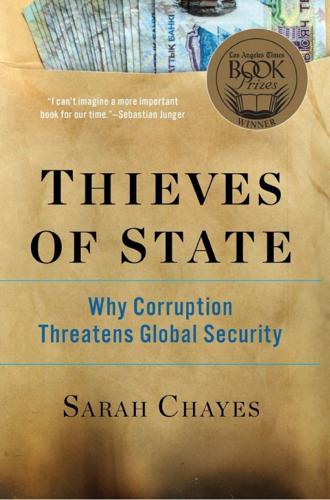
Thieves of State: Why Corruption Threatens Global Security
by
Sarah Chayes
Published 19 Jan 2015
Nairobi residents joke about the “Shebab bribe”—double the normal rate—that allowed attackers to infiltrate the Westgate Mall in September 2013, in a siege that claimed more than sixty lives. Trafficking rings that have secured safe passage past corrupt officials for migrants or sex slaves may also provide transit for mules carrying a dirty bomb. Some corrupt governments, like Algeria’s or Pakistan’s or Yemen’s, may deliberately cultivate terrorist groups—even while simultaneously projecting themselves as counterterrorism allies, to tap into a continuing flow of military assistance dollars. Trafficking rings, whether they deal in illicit drugs or substandard medicine, restricted resources such as protected wildlife, or weapons, or conflict minerals, can obtain their product of choice or move it without leaving tracks through highly corrupt environments.

I, Partridge: We Need to Talk About Alan
by
Steve Coogan
Published 1 Sep 2011
I was forever bringing a wry smile to my listener’s ears, but there was only so far I could go. As one of the most trusted voices in Norfolk,263 I had a responsibility to be taken seriously. It wouldn’t do to have spent the entire show speaking like a quacking duck (which admittedly would be very funny) if I then had to read out an urgent newsflash about a dirty bomb going off in Wisbech. So that was where Denton would come in. Not specifically for the quacking (in fact, least of all for the quacking – animal noises were a glaring weakness of his), but just to be the person whose sole job it was to bring the laughter. But my thinking was even bolder than that.
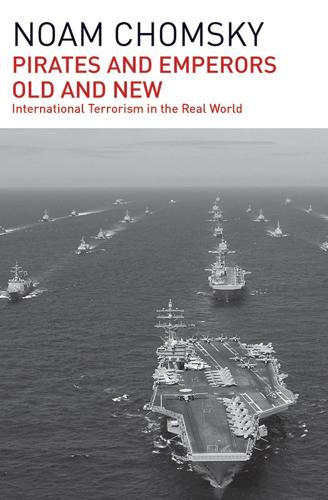
Pirates and Emperors, Old and New
by
Noam Chomsky
Published 7 Apr 2015
As for 1), though no one could have predicted the specific atrocities of 9/11, it had been understood for some time that with contemporary technology, the industrial world was likely to lose its virtual monopoly of violence. Well before 9/11, it was recognized that “a well-planned operation to smuggle [weapons of mass destruction] into the United States would have at least a 90 percent probability of success.”1 Among the contemplated threats are “small nukes,” “dirty bombs,” and a variety of biological weapons. Execution might not require unusual technical proficiency or organization. Furthermore, the source of terror might be hard to identify, hence to confront. Nine months after 9/11 and the anthrax scare that many analysts found even more terrifying,2 the FBI reported that it still had only suspicions about the origins and planning of the 9/11 attacks—basically, those assumed at once, prior to what must be the most extraordinary international investigations in history, which yielded very little, they acknowledge; and the FBI reported no progress on identifying the perpetrators of the anthrax terror, though the source had been localized to Federal laboratories within the United States, and huge resources had been devoted to the investigation.

JPod
by
Douglas Coupland
Published 30 Apr 2007
"Bummer." "Yes. It is." "Why Lot 49?" Bruce looked around the room and lowered his voice. "Because I don't believe in the future. I think we're all doomed. A survivalist organization I belong to singled out the Whistler/Pemberton Valley region as the most hospitable given a multiple global warming, dirty bomb, crop failure and SARS Classic scenario. Especially properties like Lot 49, which has a year-round stream capable of generating twenty thousand kilowatts of electricity using only a minimal rotary conversion system." I see. During the pause that followed, I felt adult—me being in on a secret and being powerful enough to pull strings.
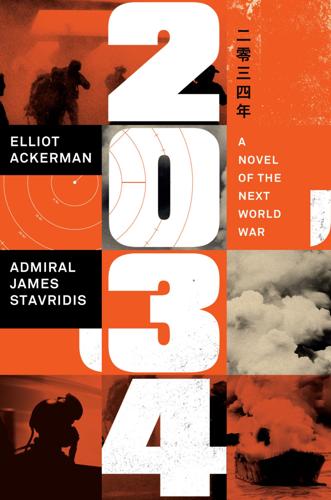
2034: A Novel of the Next World War
by
Elliot Ackerman
and
James Admiral Stavridis
Published 15 Mar 2021
After the strike on Zhanjiang, Wisecarver had cleaned house within the national security staff. The country, unlike in generations past, had failed to come together when confronted by the specter of a world war, even a nuclear one. A strike against the American homeland seemed inevitable, though no one could know where or in what shape it would manifest—a dirty bomb planted by a sleeper cell, a warhead on the tip of a ballistic missile, or perhaps both? Decades of partisan division had taken their toll, and the administration was under fire from all sides, from the hawks who believed the tactical nuclear strike hadn’t gone far enough to the doves who believed America had abdicated its moral authority by employing such weapons.
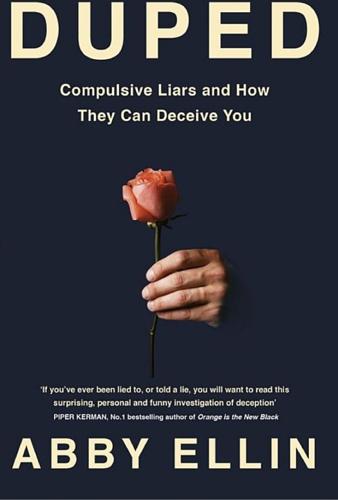
Duped: Double Lives, False Identities, and the Con Man I Almost Married
by
Abby Ellin
Published 15 Jan 2019
He couldn’t get together on New Year’s Day, because his expertise was needed to deter a “bioterrorism attack” in New York. The water supply was in danger of contamination, and only he could save the day. While thousands of people were tossing confetti in Times Square, the Commander was on a secret mission around the corner, protecting the city from dirty bombs. I went out to dinner with friends at an Upper East Side bistro. It was no different from being single. The next day I called him up and told him I was done. “I can’t do this anymore,” I said. No tears, no anger. I was too exhausted for that. “I agree,” he said, equally calmly. And just like that, I was no longer engaged.
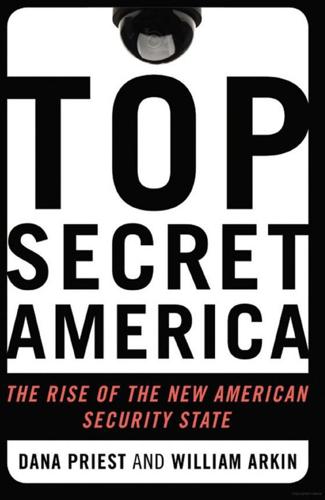
Top Secret America: The Rise of the New American Security State
by
Dana Priest
and
William M. Arkin
Published 5 Sep 2011
Never mind that the Department of Homeland Security, which was responsible for setting airport security policy, was ridiculed by people at every other intelligence agency because it hadn’t learned to hone its focus and still saw threats everywhere.1 The scene of Joy Whiteman holding herself up with the walls of the body scanner while a crew of security guards, paid by taxpayers, made sure she didn’t fall, seemed a perfect metaphor for what has transpired in the United States over the past ten years. Having been given a steady diet of vague but terrifying information from national security officials about the possibility of dirty bombs, chemical weapons, biotoxins, exploding airliners, and suicide bombers, a nation of men and women like the Whitemans have shelled out hundreds of billions dollars to turn the machine of government over to defeating terrorism without ever really questioning what they were getting for their money.

Everything Is Obvious: *Once You Know the Answer
by
Duncan J. Watts
Published 28 Mar 2011
In November of 1963, how would one have known that it was important to worry about snipers, and not food poisoning, during JFK’s visit to Dallas? How was one to know before 9/11 that the strength of cockpit doors, not the absence of bomb-sniffing dogs, was the key to preventing airplane hijackings? Or that hijacked aircraft, and not dirty bombs or nerve gas in the subway, were the main terrorist threat to the United States? How was one to know that search engines would make money from advertising and not some other business model? Or that one should even be interested in the monetization of search engines rather than content sites or e-commerce sites, or something else entirely?

Future Files: A Brief History of the Next 50 Years
by
Richard Watson
Published 1 Jan 2008
As a result, people were engaged with a battle of ideas. Nowadays there is an increasingly convergent worldview; or at least there is in the West. Am I optimistic about the future? Ultimately, yes. Nuclear war — involving the use of tactical nuclear weapons in a regional conflict, or a terrorist attack on a major city using a dirty bomb — is a serious possibility but still a remote threat. Globally, serious poverty and inequality are starting to be addressed and while there is a growing polarization between the very wealthy and the very poor, most people are becoming better off. The ultimate question to my mind is therefore whether we will continue with a participatory and centrist system based on the individual and free markets, or whether we’ll shift to a new idea, perhaps one based on the supremacy of the collective group where “freedom” is no longer simplistically defined as the right to choose.
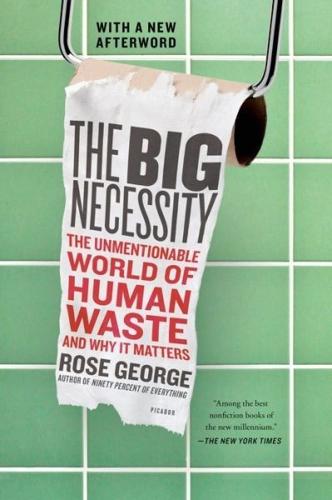
The Big Necessity: The Unmentionable World of Human Waste and Why It Matters
by
Rose George
Published 13 Oct 2008
Williamson, who run the website http://www.measuringworth.com, from which these calculations are taken, set out various criteria for translating expenditure from one period to another. The lower figure of £3 billion comes from a calculation made using the retail price index; the higher figure from GDP. The modern worth dates to 2006. £6 million to remove fat Personal communication with Rob Smith, September 2006. Many sewers will be 250 years old Kirsty Scott, “The Dirty Bomb Beneath Our Feet,” Guardian, September 23, 2003. 6,000 homeowners House of Commons Committee of Public Accounts, “Out of Sight—Not Out of Mind: Ofwat and the Public Sewer Network in England and Wales,” Thirtieth Report of Session 2003–2004 (London: The Stationery Office Ltd., 2004), p. 3. Unintended sewage pond feature Sonia Young was awarded £6,000 in damages from South West Water to compensate her for seven years of cleaning up “the toxic, smelly and very sad stream.”
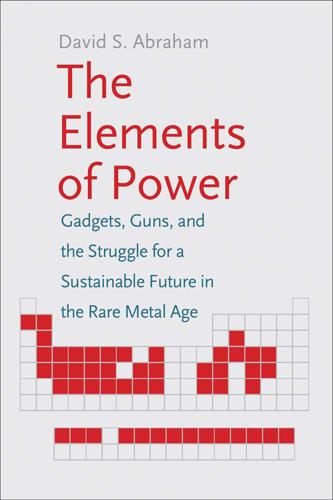
The Elements of Power: Gadgets, Guns, and the Struggle for a Sustainable Future in the Rare Metal Age
by
David S. Abraham
Published 27 Oct 2015
“It is inconceivable we could achieve [what we have as a military] without having the material science capabilities that we do.”33 The strongest militaries of today are the ones that can harvest almost the entirety of the periodic table. A mixture of cadmium and tellurium is at the heart of radiation-detection systems as well as in baggage-scanning and dirty-bomb-detection machines. Missile guidance targeting and control systems contain a slew of rare earth metals, including terbium, yttrium, and europium. And tungsten is crucial for armor-piercing bullets and drones that shoot down GBU-44 Viper Strike missiles.34 Although these new materials have enormous performance benefits, they create a challenge for the U.S. military—a reliance on minor metals not found or produced in the United States.
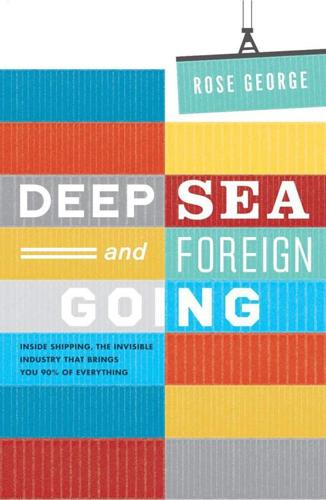
Deep Sea and Foreign Going
by
Rose George
Published 4 Sep 2013
North Korea has its own flag, a fleet of 242 vessels and the ability to make maritime mischief. Lloyd’s List revealed in 2012 that 120 vessels had reported GPS malfunctions in seas near North Korea, in an article entitled ‘Pyongyang Death Jam’ that pointed to the work of a North Korean signals jammer. I wouldn’t bother with shipping a dirty bomb: a GPS jammer can be bought in the UK for £60 (though they are banned in the United States) and can cause mayhem. When the UK’s General Lighthouse Authorities experimented in 2010 with what happens to ships whose signals are jammed, its experiment vessel showed that it was travelling to Belfast, overland.
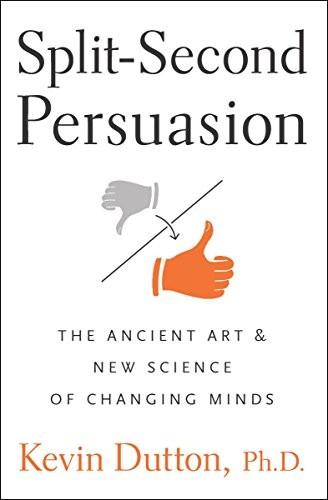
Split-Second Persuasion: The Ancient Art and New Science of Changing Minds
by
Kevin Dutton
Published 3 Feb 2011
Add to these a charismatic leader like Jim Jones, segregation from those with a different worldview (for members of the People’s Temple dissenting opinion was pretty thin on the ground in the jungle of north-west Guyana – as it was for Shehzad Tanweer in the madrasa he visited in Lahore), and an incremental induction procedure incorporating progressively larger gestures of group commitment (distributing leaflets, mentoring new members, getting involved in policy decisions: the foot-in-the-door technique, in other words) and you eventually end up with something very dangerous indeed. The basic, raw materials of brainwashing. The psychological equivalent of a ‘dirty bomb’. Yet even so there seems to be something missing; a vital piece of the jigsaw still unaccounted for. Consider, for a moment, the impact – the sheer existential enormity – of a major terrorist attack or mass suicide. Can the events that unfolded in Jonestown, the atrocities of 7/7, the devastation of 9/11, really be explained by something as simple as peer pressure?
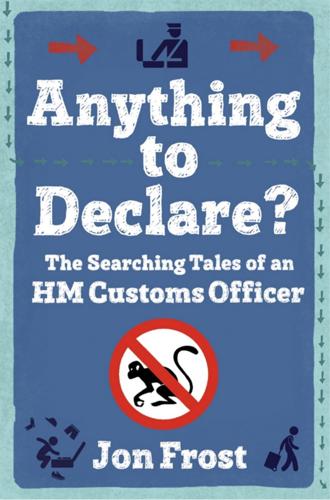
Anything to Declare?: The Searching Tales of an HM Customs Officer
by
Jon Frost
Published 8 Apr 2015
The domestic pipes then took the full pressure, blowing taps off sink basins. Metal junction covers shot into the air and then the whole airport flooded with some pretty disgusting water as the drainage system collapsed. You could say the shit hit the fan . . . and the walls, and the floor, and the ceiling, and just about everything else. The ultimate dirty bomb. It could not have been more of a hugely successful disaster if it had been planned by some evil Marvel super-villain called Doktor Turdfest – we had a brand spanking new £100 million airport covered in crap. Good job Prince Charles wasn’t doing one of his typical hardhat-wearing site visits; I mean, that wouldn’t have been at all funny, would it – the future King of England dripping from head to foot in shit?

Step by Step the Life in My Journeys
by
Simon Reeve
Published 15 Aug 2019
Uranium had been mined in Kyrgyzstan for the Soviet nuclear weapons programme, but there was only a cursory clean-up of the sites after the Union collapsed. There were environmental concerns about the waste dumps, of course, but some experts were also worried people could get access to the sites and be able to steal some of the material and include it in a radiological or so-called ‘dirty’ bomb. It was definitely a darker side to the story of Kyrgyzstan, and something we all felt we should include in the programme. But of course you can’t just mention something like that in a TV show; you actually have to go there, and you have to see and film it. We drove out towards one of the dumps with a local scientist who had been trying to monitor their condition.

Global Catastrophic Risks
by
Nick Bostrom
and
Milan M. Cirkovic
Published 2 Jul 2008
To reduce the risks, Cirincione argues, we must work to resolve regional conflicts, support and strengthen the Nuclear Non-proliferation Treaty - one ofthe most successful security pacts in history - and move towards the abolition of nuclear weapons. Global catastrophic risks 22 William Potter and Gary Ackerman offer a detailed look at the risks of nuclear terrorism in Chapter 19. Such terrorism could take various forms : • Dispersal o f radioactive material b y conventional explosives ('dirty bomb') • Sabotage of nuclear facilities • Acquisition of fissile material leading to the fabrication and detonation of a crude nuclear bomb ('improvised nuclear device') • Acquisition and detonation of an intact nuclear weapon • The use of some means to trick a nuclear state into launching a nuclear strike.
…
The Covenant, the Sword, and the Arm of the Lord ( 1985). I n Tucker, J. (ed.) , Toxic Terror: Assessing Terrorist Use ofChemical and Biological Weapons, pp. 1 39-1 5 7 (Cambridge, MA: M IT Press) . Sterngold, J . (18 April 2004). Assessing the risk on nuclear terrorism; experts differ on likelihood of ' dirty bomb' attack. San Francisco Chronicle. Stober, D. ( March/April 2003). No experience necessary. Bulletin ofthe Atomic Scientists, pp. 57-63. Taleb, N.N. (2004). The Black Swan: Why Don't We Learn that We Don't Learn? in United States Department of Defense H ighlands Forum papers. The Frontier Post. (20 November 2001).
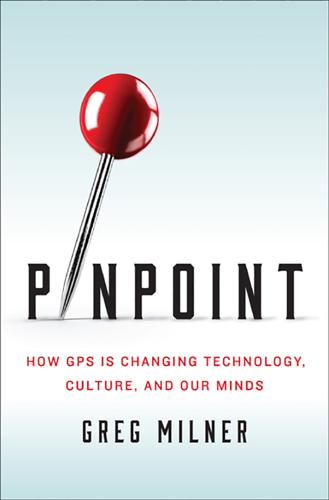
Pinpoint: How GPS Is Changing Our World
by
Greg Milner
Published 4 May 2016
The Waste Isolation Pilot Plant, near Carlsbad, in the far south of the state, is one of the few sites worldwide where nuclear waste is buried deep underground—and is America’s only repository for transuranic waste, much of it from old Cold War nuclear production facilities. Although Johnston did not know the exact security measures in place for transporting radioactive material to WIPP, he knew one level involved using GPS to track the vehicles. If someone wanted to hijack a truck—to obtain material for a dirty bomb, perhaps—how easily could they hack the GPS protection? A potential terrorist could jam the GPS signal so that the trucks disappeared from the monitors: one form of potential sabotage, but not the worst. Johnston was more concerned about hijackers taking control of a truck while simultaneously broadcasting a mock GPS signal that overwhelmed the real one.
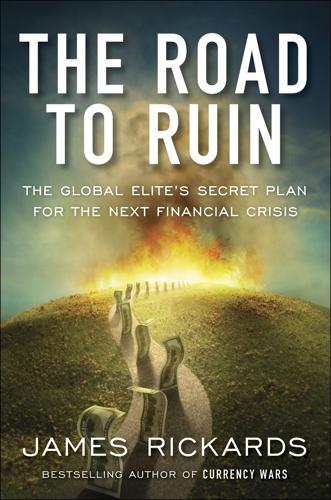
The Road to Ruin: The Global Elites' Secret Plan for the Next Financial Crisis
by
James Rickards
Published 15 Nov 2016
Together, these two facilities, about thirty miles apart and densely connected by secure communications channels, will replace Washington, D.C., as the seat of government power. The Department of Homeland Security conducts classified exercises to practice the use of Mount Weather. The most recent exercise was called Eagle Horizon 2016, conducted on May 16, 2016. Past versions of Eagle Horizon have included dirty bomb attacks, cyberattacks, and other forms of terrorism. The exact scenario for Eagle Horizon is classified, but could have included a global bank collapse with resulting money riots around the world. Both Mount Weather and Raven Rock Mountain are operated pursuant to a highly classified plan called the Continuity of Operations Plan.
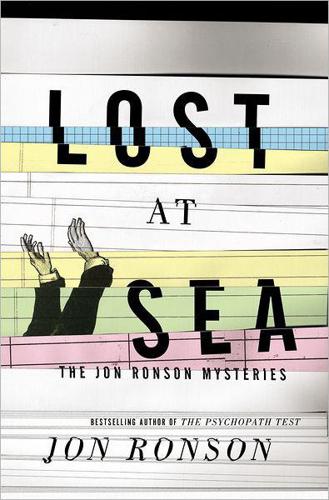
Lost at Sea
by
Jon Ronson
Published 1 Oct 2012
The short answer to your question is that if you build a nuclear reactor without permission, you are violating strict laws. It is a criminal offense and can lead to fines or imprisonment for up to two years.” Richard was surprised. “The amount I had was very small,” he says, “so far away from the amount needed to make a dirty bomb or something like that. To get it to explode, you must have something called a critical mass, which is fifty kilograms of radium or six kilograms of plutonium. I had five grams. The worst that could have happened was I might have got radiation in me.” “And got cancer years later?” I ask. He shrugs.
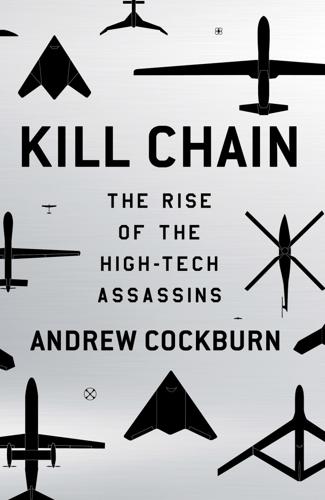
Kill Chain: The Rise of the High-Tech Assassins
by
Andrew Cockburn
Published 10 Mar 2015
Thus the CIA targeters were less interested in the Mehsud, until, that is, a routine NSA phone intercept in May 2009 picked up someone discussing the fact that Baitullah Mehsud, the vicious, semiliterate, but capable thug who had created and led the TTP, had a nuclear weapon. When another conversation on the topic of Islamic doctrine regarding the use of such weapons surfaced, Washington went into (secret) convulsions. Even when it was concluded that the device was merely a “dirty bomb”—radioactive nuclear waste wrapped around explosives—the level of hysteria remained high. “We got played all the time,” a former CIA operations officer told me. “All the other side had to do was to have a conversation on the phone talking in some kind of mysterious code about an upcoming ‘wedding party’ and we’d go on red alert.”
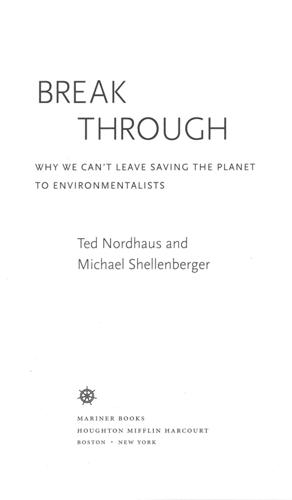
Break Through: Why We Can't Leave Saving the Planet to Environmentalists
by
Michael Shellenberger
and
Ted Nordhaus
Published 10 Mar 2009
Between 2004 and 2006 there was a 59 percent increase in one-year adjustable-rate mortgages.47 The novelist Walter Kirn captures the high anxiety associated with this kind of debt. I find myself reading the papers nowadays with an especially anxious eye for looming short- to midterm problems that might somehow boost my payments to the moon. Unfortunately, like many in my position, I lack the sophistication to discern what sort of problems I need to be afraid of. A dirty bomb? Global warming? The bird flu? Will they help or harm me? Not as a human being, I mean, or as a citizen, but as a guy on a budget whose old frame house could, frankly, use a second bathroom, if he could only get the financing . . . Isn’t the idea of a home to give a person a sanctuary from history?
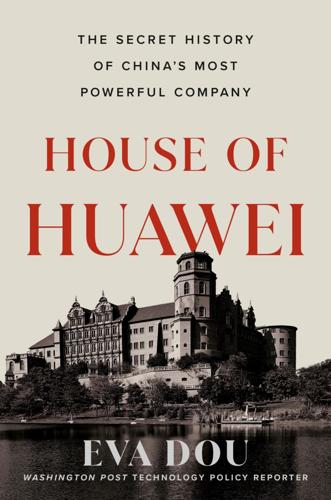
House of Huawei: The Secret History of China's Most Powerful Company
by
Eva Dou
Published 14 Jan 2025
“We look forward to the court’s verdict and trust that it will benefit both Huawei and the American people.” Trump’s deputies flooded the zone to declare Huawei a threat. “To say that they don’t work with the Chinese government is a false statement,” Mike Pompeo said on CNBC’s Squawk Box. “It is required to by Chinese law.”[8] Steve Bannon called Huawei a “dirty bomb inside industrial democracies.”[9] * * * — As Huawei’s legal team scrambled to build its defense, the fallout began. A number of prominent universities announced they were distancing themselves from the company. First, the University of Oxford said it was suspending all new research grants and donations from Huawei.[10] “This decision will be revisited by the committee in 3–6 months and does not impact existing donations or research projects,” the university told its computer science doctoral students in an email.

Lunar Park
by
Bret Easton Ellis
Published 15 Mar 2005
I didn’t want explanations, because in those, my failure would take shape (your love was a mask, the scale of your lies, the irresponsible adult at loose, all the things you hid, the mindless pull of sex, the father who never paid attention). The case received, at first, substantial media coverage, but because Jayne refused to participate in the parade of grief that was demanded of her, the press slowly lost interest. Plus there were so many fresh horrors—the dirty bomb in Florida, the hijackers who killed the air marshals—that the disappearance of a movie star’s son took a back seat to what was becoming this country’s future. Jayne hired a private investigator to stay on the case. (But what case? Boys leave. He was gone. He had orchestrated this absence himself, as had all the others.)

Whole Earth Discipline: An Ecopragmatist Manifesto
by
Stewart Brand
Published 15 Mar 2009
The result of a nuclear explosion in Moscow or New York would very probably be the annihilation of the country that manufactured the bomb, once its identity was determined—as it surely would be, since no plot of that size can remain secret for long. Even in the very unlikely case that a nuclear weapon did end up in terrorist hands, it would be a single horrible incident, rather than an ongoing threat. The same is true of dirty bombs, which disperse radioactive material through conventional explosives. No, the real long-term danger from small groups is the use of biotechnology to build weapons of mass destruction. In contrast with nuclear technology, biotech’s knowledge and tools are already widely dispersed—and their power is increasing exponentially.
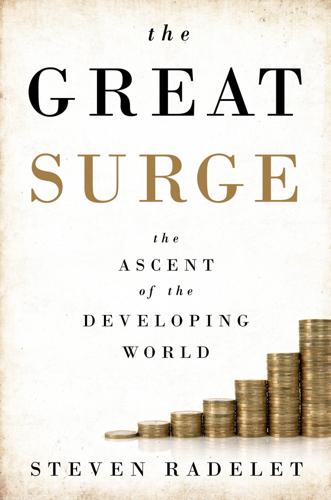
The Great Surge: The Ascent of the Developing World
by
Steven Radelet
Published 10 Nov 2015
Globalization allows the rapid spread of ideas and the means for enormous violence, such as the ability to find recipes for chemical weapons on the internet. At least since the invention of the atomic bomb, many have feared that technological advances could destroy us, and that small fringe groups could inflict great damage. Extremist groups could detonate dirty bombs in Islamabad, Lagos, London, or New York; place weapons of mass destruction in shipping containers; or disperse biological agents via drones. Such actions could change everything: trade and investment would falter, the West would pull up a drawbridge, and democracy would be in retreat. Francis Fukuyama has observed that “what is different today is the democratization of the means of violence, whereby very small, stateless groups have the possibility of acquiring weapons of vast destructive power.”13 TENSIONS AROUND THE RISE OF CHINA On November 23, 2013, Beijing announced it was establishing an air defense identification zone (ADIZ) in the East China Sea, and that any aircraft flying through it would have to notify Chinese authorities in advance.

Habeas Data: Privacy vs. The Rise of Surveillance Tech
by
Cyrus Farivar
Published 7 May 2018
* * * After Rigmaiden and Soghoian began corresponding, the doctoral student was introduced to Stephanie Pell, a former veteran federal prosecutor, who was then serving as counsel to the House Judiciary Committee. Notably, Pell had been one of four Miami-based lead prosecutors on the José Padilla case, who was implicated in the so-called dirty bomb plot. That case dominated her professional life from 2002 until 2007—the case didn’t end until 2014, when Padilla was sentenced to 21 years on appeal. Starting with her work on Capitol Hill, Pell was tasked with working on the reauthorization of the PATRIOT Act, and then worked on Electronic Communications Privacy Act (ECPA) reform, which came before the House Judiciary Committee in the spring of 2011 (see Chapter 6).

The Secret World: A History of Intelligence
by
Christopher Andrew
Published 27 Jun 2018
He wrote gleefully about a plan to explode a bomb on a tube train travelling in a tunnel beneath the Thames: ‘Imagine the chaos that would be caused if a powerful explosion were to rip through here and actually rupture the river itself. This would cause pandemonium, what with the explosions, flooding, drowning, etc that would occur/ result.’ Barot’s ultimate ambition was to explode the first radioactive ‘dirty bomb’, probably in the heart of London, though he complained that ‘for the time being’ he had failed to acquire ‘the necessary contacts’.* He would have found it much easier today. In 2015 Chatham House produced a report entitled ‘Growing Threat as Organized Crime Funnels Radioactive Materials to Terrorists’.
…
Criminal groups in Moldova are believed to have already smuggled radioactive materials to ISIS, the so-called Islamic State in Iraq and Syria. ‘Making a radiological weapon’, the Chatham House report concluded, ‘requires little technical and scientific expertise, and radioactive materials can be used with conventional weaponry (such as dynamite) to make a successful dirty bomb.’118 Looming on the UK horizon, perhaps as early as the next decade, is for the first time the terrorism of the nuclear age and of chemical and biological warfare. ISIS has already used chemical weapons in Iraq. Given the opportunity, it would not hesitate to do so in Europe, probably with the help of returning jihadis.119 At the 2016 Nuclear Security Summit in Washington, attended by over fifty world leaders, the British Prime Minister, David Cameron, warned that the even greater danger of ISIS obtaining nuclear material is now ‘only too real’.
…
An MI5 surveillance photograph of Moinul Abedin, convicted in 2000, over a year before 9/11, of setting up the first Islamist bomb factory in Britain. 81. An MI5 surveillance photograph of Dhiren Barot, the first Islamist terrorist whose ultimate (unrealized) ambition was to explode a radioactive ‘dirty bomb’, probably in the heart of London. 82. 1 May 2011: the first photo of a policymaker and advisers watching an intelligence-led operation – President Obama and his national security team in the White House situation room during Operation NEPTUNE SPEAR to capture Osama bin Laden. In a TV address that evening, Obama announced that Bin Laden had been killed. 83.
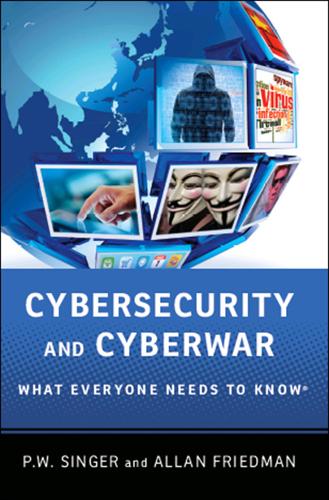
Cybersecurity: What Everyone Needs to Know
by
P. W. Singer
and
Allan Friedman
Published 3 Jan 2014
Indeed, even when you move into the “what if” side of the largest-scale potential terror attacks, a successful cyberterror event still pales compared to other types of attacks. The disruption of the electric power grid for a few days or even months would most definitely be catastrophic. But the explosion of just one nuclear bomb, even a jury-rigged radiological “dirty bomb,” would irradiate a city for centuries and set off an earthquake in global politics. Similarly, while a computer virus could wreak havoc in the economy, a biological weapon could change our very patterns of life forever. As Mike McConnell, former Director of National Intelligence, put it when talking about cyberterrorism, we need to weigh the balance of what is real and what is potential.

Merchants' War
by
Stross, Charles
Published 30 Sep 2007
Where do you want me to go?" "Blue Line, Government Center. It's the station itself. Go there and head for the Scollay Square exit. Rich will meet you there. He and Rand are organizing the site search. The cover story we're going with is that it's an exercise, training our guys for how to deal with a terrorist dirty bomb-so you can anticipate some press presence. You'll be wearing your old organization hat and you can tell them the truth, you're an agent liaising with the anti-terror guys." Herz felt like wineing. Wheels within wheels-how better to disguise a bunch of guys in orange isolation suits trampling around a metro station in search of a terrorist nuke than by announcing to the public that a bunch of guys in isolation suits would be tramping around the station in search of a pretend-nuke?
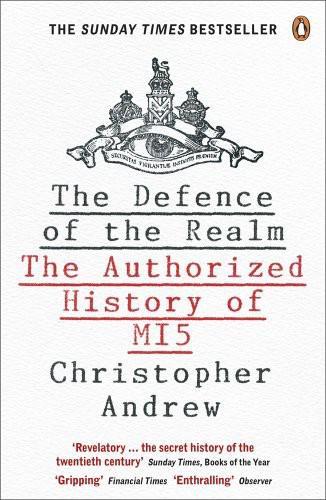
The Defence of the Realm
by
Christopher Andrew
Published 2 Aug 2010
He wrote gleefully about another of his projects: to explode a bomb on a tube train travelling in a tunnel beneath the Thames: ‘Imagine the chaos that would be caused if a powerful explosion were to rip through here and actually rupture the river itself. This would cause pandemonium, what with the explosions, flooding, drowning, etc that would occur/result.’46 It was also Barot’s ambition to explode a radioactive ‘dirty bomb’, though he acknowledged that ‘for the time being we do not have the contacts that would allow us to purchase such items.’47 In the summer of 2004 Operation RHYME faced the Security Service and the police with an acute form of a familiar counter-terrorist dilemma. Further surveillance and investigation seemed to be required in order to gather the material for a successful prosecution.
…
A year before 9/11, without realizing it at the time, Security Service counter-proliferation operations disrupted a first attempt by Al Qaida to obtain material in Britain to develop biological weapons. The ambition of Dhiren Barot, the chief Islamist plotter arrested as a result of Operation RHYME in 2004, was to explode a radioactive ‘dirty bomb’. Though, as Barot acknowledged, he failed to make the contacts necessary to achieve his ambition, other terrorists will try to succeed where Barot failed. In the twenty-first century, as in the twentieth, some of the challenges faced by the Security Service will be difficult, if not impossible, to predict.
…
The Life and Wartime Cartoons of Philip Zec (London: Political Cartoon Society, 2005) Ziegler, Philip, Wilson: The Authorised Life of Lord Wilson of Rievaulx (London: Weidenfeld & Nicolson, 1993) Index A Branch/Division 84, 127, 134, 236, 325, 335–6, 551; AI 335, 738–9; A2 335–6; A2A 334–5, 527; A4 333–4, 337–8, 394, 425, 571–2, 741; A5 336; see also Appendix 3 Abbu Nafa, Mahmoud 689, 690 Abedin, Moinul 806–8 Abu Nidal Organization (ANO) 648, 691, 734–6 Abwehr (German intelligence agency): foundation 186; pre-war espionage 186, 209–11, 212–13; British pre-war view of 209, 210; despatches agents to Britain to prepare for invasion 235, 248, 250, 259; double agents’ penetration of SIS and MI5 244–7, 256–7; Abwehr agents converted to double agents 248–55, 259; GC&CS’s decrypts of ciphers 248, 249–50, 253, 254–5, 262, 278, 281; disinformation supplied to 285, 287, 288, 292, 294, 297, 299, 300–301, 304, 305, 308, 311, 314–16 Aden 473–7, 605, 801; DSOs/SLOs 138, 220, 480, 612 Afghanistan 92, 799, 802, 804, 808, 811, 817, 825, 827 AIRLINES, Operation 795–7, 855 Ali, Abdullah Ahmed 828–33 Al Megrahi, Abdelbaset Ali Mohmed 747, 748 Al Qaida 607, 799, 802–4, 806–11, 816–17, 823, 828, 829, 836, 856, 860–51 al Zawahiri, Ayman 799, 802, 804, 808 Alca´zar de Velasco, Angel 260–62 alcoholism 331, 415, 421–2, 433, 439, 592, 599, 714, 723 Allen, Albert 156–9 Allen, John 445, 446, 519, 629, 761 Allen, Sir Philip 492, 517–18, 531, 535, 536, 547, 574, 588, 590, 596, 597, 602, 603–4, 620, 629 Allison, George 137, 164, 402 Alverstone, Richard Webster, 1st Viscount 38–9, 40 Ames, Aldrich 713, 726 Anderson, Sir John 129, 226, 235, 236 Andropov, Yuri 565–6, 585, 605, 606, 709, 722, 723 Angleton, James ‘Jim’ 511, 512–15, 520 Angry Brigade 610–12 anti-Semitism 7, 125, 189–90, 193–4, 224–5, 362, 364 appeasement 195, 198, 202, 203, 205–6, 853 Arafat, Yasir 608, 648, 736 Archer, Kathleen ‘Jane’ (née Sissmore): background and character 122, 131; recruitment of 122, 128; head of Registry 122; interrogation skills 128, 220; MBE 128; responsibility for Soviet intelligence 128, 220, 341; and Invergordon Mutiny 164; and Krivitsky case 220, 264, 265, 267–8, 341; marriage 220; sacked 220, 235; moves to SIS 220, 341; and Philby 341–2 ARCOS (All-Russian Cooperative Society) 153, 154–6, 157–8, 167 Arden-Clarke, Sir Charles 451, 453 Argov, Shlomo 690–91, 734 Arkell, John 396 Armed Forces Security Agency (United States; AFSA) 372, 373, 375–6 Armstrong, Sir Robert: and appointment of Smith as DG 553; and appointment of Duff as DG 557; and ‘Oberon Singers’ 558; and industrial subversion and unrest 594, 671, 672; and Wilson’s business friends 630, 631; and Wilson’s suspicions of Security Service 634; chairs Interdepartmental Working Group on Subversion in Public Life 658; and Bettaney case 720; and expulsion of Guk 724; and Gordievsky case 726–7; and review of vetting procedures 751; and Spycatcher affair 761, 762, 763–4; and Security Service Act 766 Armstrong, Sir William 533, 537 Army Security Agency (United States; ASA) 366, 372–3, 374 Arnold, Henry 385, 389, 390 Asquith, Herbert 3, 9, 20, 66, 81, 86 Astor, Hugh 249, 299, 316 atom spies 340–41, 345–6, 349, 375, 377, 383–8, 389–91, 420, 858 Atomic Energy Authority 323, 491 Atomic Energy Cabinet Committee (GEN 163) 392 atomic and nuclear weapons: British atomic bomb project (TUBE ALLOYS) 183, 279, 313, 384, 392, 579–80, 584–5, 847; bombing of Hiroshima 340, 341, 858; Los Alamos 346, 366, 377, 384, 385, 550, 858; Soviet atomic weapons 366, 383–4, 386, 388, 405, 858; thermonuclear warfare threat 405, 722–3, 781, 858–9; anti-nuclear movement 559, 673–6; KGB/GRU Operation RYAN 709, 722–3, 861; and Islamist terrorism 807; ‘dirty bombs’ 820, 861; see also atom spies Attlee, Clement: appointment of Sillitoe as DG 319, 321, 847; relations with Sillitoe 321–2, 682, 847; character 322; and Zionist extremism 352, 353, 355, 360, 361–2; and appointment of Jews 364; and VENONA project 367; vetting procedures 380–81, 382, 383, 387, 391, 392, 393, 858; and atom spies 384, 387, 390, 391; and CPGB 401, 402, 853; Communist influence in trade unions 406, 407; and pro-Soviet Labour MPs 411, 412; on operations in Commonwealth countries 443; and British Guiana 461 Auslands Organisation 197 Australia 106, 366, 367–73, 430, 517, 520, 762–5, 768–9 B Branch/Division 126, 127–8, 130, 134, 150, 197, 229–30, 254, 255, 268; reorganization of 236, 325, 388, 549; BIa 248–50, 252–3, 256, 258, 284, 285–6, 287–8, 293–4, 297–300, 310, 855; BIb 249–50, 286; BIc 219; BId 250; BIE 382, 388; BIF 134; BIG 261; B2 322; B2b 369; B3a 350–51, 353, 360, 362; B4 128, 152, 184, 385, 394, 427; see also Appendix 3 Bacon, George Vaux 73–4, 75 Bagot, Milicent 131, 217, 232, 330, 550 Baldwin, Stanley 146, 151, 154, 155–6, 178, 199 Balfour, Arthur 75, 108 Ball, Sir Joseph 126, 150 Baltic Exchange bombing (1992) 782, 784, 855 Baring, Sir Evelyn 454, 456, 467 ‘barium meal’ operations 507, 508 Barot, Dhiren 819–21, 861 BBC: Burgess at 173, 270; coverage of Cuban Missile Crisis 327; programmes on union ballot-rigging 409, 410, 529, 530; news presentation 663; Dimbleby Lecture 777, 801 ‘Beavers’ (BIb decrypt analysers) 249–50 Beckett, Francis 411, 592 Bedell Smith, Walter 426, 428 Begin, Menachem 351, 352–3, 354, 363 Belfast: SLO 602, 604, 618; British troops posted to 604–5, 618–19; terrorist attacks in 620, 646; unpopular posting 621, 646–7, 852; IJS station 684, 692, 693, 696, 700, 852; Long Kesh 692–3 Belgium: First World War 66; Second World War 205, 222, 223, 230, 241; Zionist extremists operating in 355; reaction to FOOT 574; PIRA terrorist attacks in 651, 652, 696; PIRA bases in 699, 748, 772; Sûreté 772 Bell, Eddie 82, 109 Bell, Walter 444–5, 468 Bella, Leo 357–8, 359 Benn, Tony 522, 525–6, 638, 660 Berger, Roland 400–401, 404, 417 Berlin Wall 419, 771, 853 Bernstorff, Count Johann Heinrich von 86, 87, 105 Bethell, Sir Alexander Edward 25, 26, 27, 32 Bethmann-Hollweg, Theobald von 86, 91 Bettaney, Michael 557, 558, 564, 714–22, 723–4, 732, 754, 756 Bevan, J.
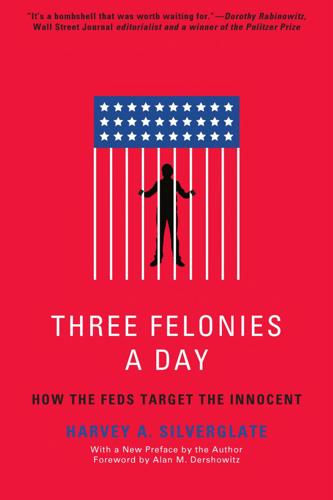
Three Felonies a Day: How the Feds Target the Innocent
by
Harvey Silverglate
Published 6 Jun 2011
His courses included computer security. He moved his campus office from the computer science building to another building that previously contained the science department’s nuclear reactor. According to one report, this led the FBI to believe that he might have been looking for radioactive material to make a “dirty bomb.”42 The feds got a national security wiretap of the student’s phone, since there was not adequate “probable cause” to get a regular wiretap, and managed to snag about 20,000 emails and 9,000 phone calls during a year-long period. A team of 20 law enforcement officials followed him. Providing “material support” to terrorism was not a new crime.

Who Owns England?: How We Lost Our Green and Pleasant Land, and How to Take It Back
by
Guy Shrubsole
Published 1 May 2019
I’ve found various instances of old Cold War-era nuclear bunkers being bought up by private individuals, whose interest in them, shall we say, may not be purely historical. One London-based private security firm has been quietly advertising a service for installing private nuclear fallout shelters beneath homes, which it markets as protection against a terrorist attack involving a radioactive ‘dirty bomb’, guaranteeing to keep purchases on the hush-hush by having its staff pretend to be merely installing a septic tank. The recent craze among London’s super-rich for massive basements, though spurred on mainly by space and planning constraints, may also be driven by a bunker mentality: one 2018 study found 4,650 basement developments had been granted planning permission in central London in the past decade.
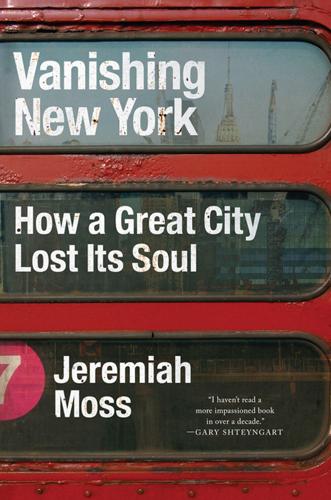
Vanishing New York
by
Jeremiah Moss
Published 19 May 2017
She speaks to the national impact of 9/11 when she says, “What happened in the period of mass disorientation after the attacks was, in retrospect, a domestic form of economic shock therapy.” I would add that nowhere was that mass disorientation more profound than in New York City. For months we wandered in a haze of smoke and trauma, waiting for another explosion, anthrax in the mailbox, sarin gas in the subway, a dirty bomb. How disoriented were we? I had spent the 1990s protesting Giuliani, but that fall I thought he wasn’t so bad. I was momentarily delusional. I was not so far gone, however, as to vote for Bloomberg. With the metallic taste of dust still in the air, in a city distracted and dissociated, Bloomberg was elected mayor on November 6, 2001, narrowly surpassing Green, 49 percent to 47 percent.
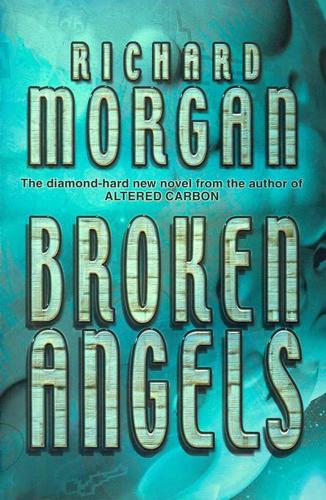
Broken Angels
by
Richard Morgan
Published 31 Aug 2008
“I figure you sold out to Carrera rather than go into virtual interrogation,” I said, still scanning peripherally for reactions among the crowd. “Don’t blame you really. And if they offered you a fresh combat sleeve, full rad/chem resist specs and custom trimmed, well there aren’t many deals like that kicking about Sanction IV these days. And no telling how much dirty bombing both sides are going to do from now on in. Yeah, I’d have taken a deal like that.” “Do you have any evidence of this?” asked Hand. “Apart from the fact he’s the only one of us still not going grey, you mean? Look at him, Hand. He’s held up better than the Maori sleeves, and they’re built for this shit.”
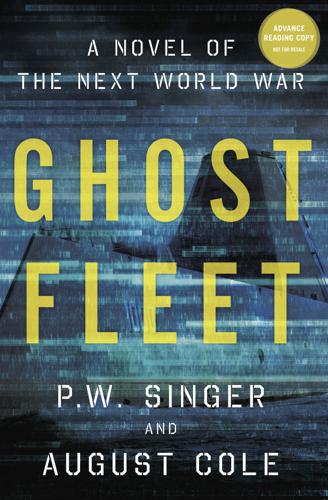
Ghost Fleet: A Novel of the Next World War
by
P. W. Singer
and
August Cole
Published 28 Jun 2015
They want us to see that in addition to having the world’s biggest economy, they’re buying their naval forces the range to operate anywhere on the planet. “To understand why having a ship like an oiler is a big deal, you need to take a step back. Let’s start with Dhahran three years ago. When the nuke — well, more technically, the radiological dirty bomb — went off, it made the Saudi house of cards fall down. Between Dhahran glowing and the fights over who comes in after the Al Saud family, the world economy’s still reeling from the hub of the global oil industry effectively going offline,” he said. His next slide showed a graph of energy prices spiking.
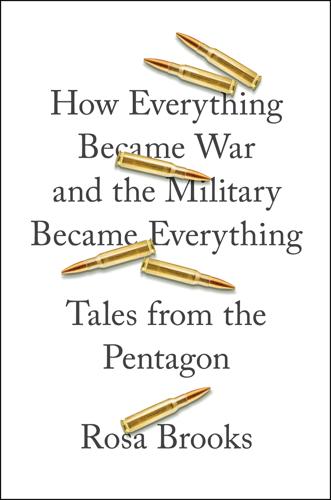
How Everything Became War and the Military Became Everything: Tales From the Pentagon
by
Rosa Brooks
Published 8 Aug 2016
Why wait passively for the next terrorist attack—or a nuclear missile launched by a rogue state, or a cyberattack emanating from China or from a group of disaffected Estonian teens—when we could be eliminating the root causes of conflict by fostering economic development and good governance, building relationships, creating networks of agents and allies, collecting data, promoting “new narratives,” or striking potential future enemies before they can develop the ability to harm us? To the military, it’s all about staying “left of boom.” Imagine a timeline running from left to right, with potential calamity looming off to the right, somewhere in the hazy future. “Boom” might be the improvised explosive device buried under the road, a radioactive “dirty bomb,” an aerosol canister filled with a bioengineered virus, or a computer worm that shuts down the New York Stock Exchange. You always, always want to stay left of boom—and as the varieties of “boom” expand, the military has expanded correspondingly. The Surface of the Moon Even as the military’s purpose and role has blurred and its activities have expanded, the U.S. military itself—as a human institution—has grown more and more sharply delineated from the broader society it is charged with protecting.

America Right or Wrong: An Anatomy of American Nationalism
by
Anatol Lieven
Published 3 May 2010
The memo on security challenges which Rumsfeld drew up for the Bush administration as it took office dwelt on the threat to the United States from Iraq, China, Russia, Iran and North Korea, and from weapons of mass destruction— but not from al Qaeda.47 Former antiterrorism coordinator Richard Clarke has complained bitterly of the indifference of the Bush administration to the terrorist threat both before and after 9/11, compared to their obsessions with missile de160 THE LEGACY OF THE COLD WAR fense and with war against Iraq. And in Iraq, the entire obsession was with the defeat of Saddam Hussein, to such an extent that the planners seemingly neglected even to secure that state's civilian nuclear facilities and prevent terrorists from getting radioactive material for a "dirty bomb." Hence also the concentration on strategy against Russia, to some extent under Clinton, but still more strongly in the first eight months of the Bush administration. In the mid-1990s, the American foreign and security establishment turned the rolling back of Russian influence in the former Soviet Union into an American strategic priority.

Politics on the Edge: The Instant #1 Sunday Times Bestseller From the Host of Hit Podcast the Rest Is Politics
by
Rory Stewart
Published 13 Sep 2023
We are dependent on Taiwan for 90 per cent of our advanced semiconductor chips and 50 per cent of our normal semiconductor chips, and on China for our clothes, our laptops and most of the rare earth metals on which our devices depend. We are in debt and borrowing more. A single misstep could destroy our currency, wipe out the gilt markets, spark inflation, and drive much of our country to the edge of bankruptcy almost overnight. That is before we think about the threat posed by a small dirty bomb in London, or a new pandemic. Nor is it 2005 any more. It is 2019. We have been through the humiliations of Iraq and Afghanistan, the financial crisis and the Arab Spring. Populism is sweeping across Europe, Asia, the United States and Latin America. Three years have passed since Britain voted for Brexit.
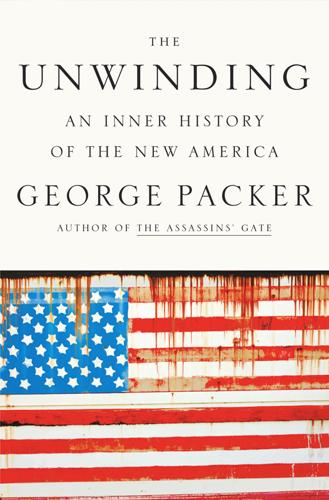
The Unwinding: An Inner History of the New America
by
George Packer
Published 4 Mar 2014
It was good for the environment and improved the fuel mileage of eighteen-wheelers. Dean quoted Jefferson on the cultivators of the earth and talked about reviving the civic values of the country. He appealed to patriotism and American independence. If Iran and Iraq started fighting over an oil field, or America went to war with China, or a Muslim terrorist with a dirty bomb took out the power grid on the East Coast, Red Birch would stay on line, and the trucks on Route 220 would keep rolling. “It’s win-win-win-win-win,” Dean said. One thing Dean never mentioned was global warming. There were too many doubters in his part of the country—as soon as they heard the words, they’d stop listening and start arguing.
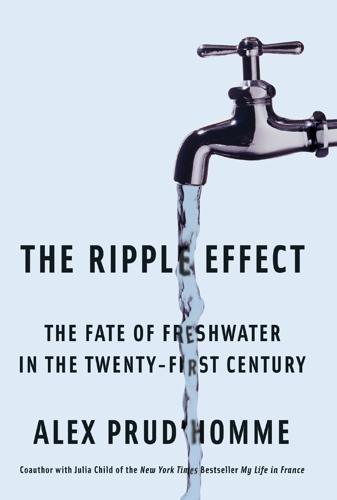
The Ripple Effect: The Fate of Fresh Water in the Twenty-First Century
by
Alex Prud'Homme
Published 6 Jun 2011
Shale is hard and requires intensive blasting, which can create unpredictable cracks in the rock, potentially allowing gas and toxic water to be released into aquifers. In 2010, James Northrup, a former ARCO planning manager, wrote a memo to the Otsego County (NY) Board saying that existing New York State regulations “are grossly inadequate … they are a prescription for disaster.” He compared hydrofracking to a hydrobaric underground bomb, “a very powerful dirty bomb,” in which pressures approach fifteen thousand pounds per square inch—equivalent to thirty times that of an air bomb, or to water pressure six miles deep. When shale is exploded by hydrofracking, powerful jets of fracking fluid break up rock indiscriminately for a considerable distance underground.
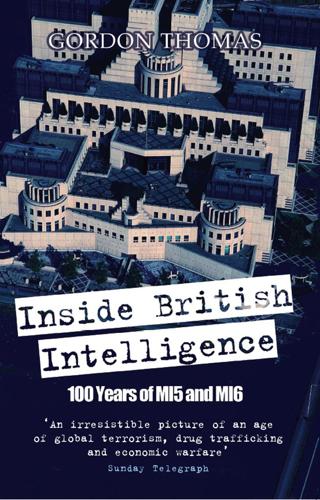
Inside British Intelligence
by
Gordon Thomas
If it refused the command to leave the area, it risked being shot down. Another threat predicted was a suicide bomber driving a truck of high explosives into Britain’s largest nuclear plant, in Cumbria. Guards had a standing order to open fire if such a truck failed to stop. The possibility of a “dirty bomb” created from radioactive rods stolen from a hospital nuclear medical department and wrapped with TNT was another constant concern, which required weekly checks with all those departments. On that April morning, the latest report from the Watchers in Bradford indicated the cyanide gas plot was still at “the chatter stage.”
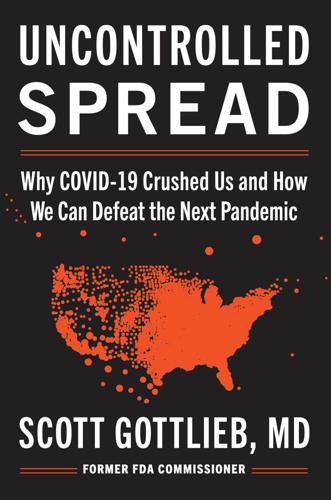
Uncontrolled Spread: Why COVID-19 Crushed Us and How We Can Defeat the Next Pandemic
by
Scott Gottlieb
Published 20 Sep 2021
Neupogen is also vital to national security because it can be used to save the lives of people who have been exposed to radiation by helping the body reconstitute bone marrow.36 It’s for its clinical application in a radiological or nuclear emergency or incident that Neupogen has become a critical part of our national defense, a therapeutic hedge against an act of terrorism.37 If a dirty bomb or other radiological weapon were detonated in a populated city, there would be a surge in demand for Neupogen as a tool to help rescue people harmed by the radiation. For this reason, the US government has added Neupogen to the Strategic National Stockpile, to ensure there will always be an uninterrupted supply of this critical medicine.
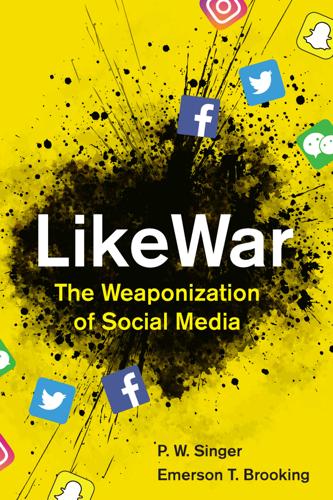
Likewar: The Weaponization of Social Media
by
Peter Warren Singer
and
Emerson T. Brooking
Published 15 Mar 2018
They want us to see that in addition to having the world’s biggest economy, they’re buying their naval forces the range to operate anywhere on the planet. “To understand why having a ship like an oiler is a big deal, you need to take a step back. Let’s start with Dhahran three years ago. When the nuke—well, more technically, the radiological dirty bomb—went off, it made the Saudi house of cards fall down. Between Dhahran glowing and the fights over who comes in after the Al Saud family, the world economy’s still reeling from the hub of the global oil industry effectively going offline,” he said. His next slide showed a graph of energy prices spiking.

The Better Angels of Our Nature: Why Violence Has Declined
by
Steven Pinker
Published 24 Sep 2012
The professional reputations of experts have proven to be immune to predictions of disasters that never happen, while almost no one wants to take a chance at giving the all-clear and ending up with radioactive egg on his face.270 A few brave analysts, such as Mueller, John Parachini, and Michael Levi, have taken the chance by examining the disaster scenarios component by component.271 For starters, of the four so-called weapons of mass destruction, three are far less massively destructive than good old-fashioned explosives.272 Radiological or “dirty” bombs, which are conventional explosives wrapped in radioactive material (obtained, for example, from medical waste), would yield only minor and short-lived elevations of radiation, comparable to moving to a city at a higher altitude. Chemical weapons, unless they are released in an enclosed space like a subway (where they would still not do as much damage as conventional explosives), dissipate quickly, drift in the wind, and are broken down by sunlight.
…
social see also aggression; brain; cognitive illusions; emotions; moral sense psychopaths; see also antisocial personality disorder Public Goods game Punch and Judy shows Punic Wars punishment: in autocracies and the brain capital of children and criminal justice system cruel and unusual and deterrence executions vs. incapacitation incarceration and incomplete justice and just deserts legitimate use of and moralization and repentance for sins spanking torture Purcell, Ed Purity, ethic of; see also disgust; Divinity, ethic of Pushkin, Aleksandr Pynchon, Thomas Pyrrhic Victory Pythagoras Qatar, slavery abolished in Quakers Québec Quervain, Dominique de race riots racial pogroms racism in children decline of and gender psychology of as “root cause” of crime use of term see also social dominance radical chic radiological (dirty) bombs Rage circuit raiding Raine, Adrian Rajneeshee cult rampage; see also forward panic randomness rape awareness of as crime definitions of gender differences in conception of and human sexuality marital outside U.S. prevention and response and race rates of underreported rat, brain of rational actor theory rationalization; see also cognitive dissonance Rational-Legal model Rauschenbusch, Walter Ray, James Lee Reading Revolution Reagan, Ronald realism: moral theory in political science reason Age of Reason and community escalator of guided and intelligence introduction of concept and Pacifist’s Dilemma as pacifying force passions vs.

Architects of Intelligence
by
Martin Ford
Published 16 Nov 2018
The ability to kill larger numbers of people using increasingly easier ways has been another aspect of human evolution. In the early days, you needed a knife, and you could kill one person at a time. Then you had guns, and you could kill five or six. Then you had assault rifles, and you could kill 40 or 50. Now you have the ability to create dirty bombs in ways that don’t require a huge amount of technological know-how. If you think about biological weapons and the ability to edit and print genomes to the point where people can now create their own viruses, that’s another way of killing a lot of people with an accessible modern technology. So yes, the risks of misusing technology are there, but we need to think about them more broadly than just AI.

Atomic Accidents: A History of Nuclear Meltdowns and Disasters: From the Ozark Mountains to Fukushima
by
James Mahaffey
Published 15 Feb 2015
Residents of Chelyabinsk rushed outside and looked at the lighted display to the northwest, as 20 million curies of radioactive dust spread out over everything sticking above ground. The high-level wind that night was blowing northeast, and a radioactive plume dusted the Earth in a tight line, about 300 kilometers long. This accident had not been a runaway explosion in an overworked Soviet production reactor. It was the world’s first “dirty bomb,” a powerful chemical explosive spreading radioactive nuclides having unusually high body burdens and guaranteed to cause havoc in the biosphere. The accidentally derived explosive in the tank was the equivalent of up to 100 tons of TNT, and there were probably 70 to 80 tons of radioactive waste thrown skyward.
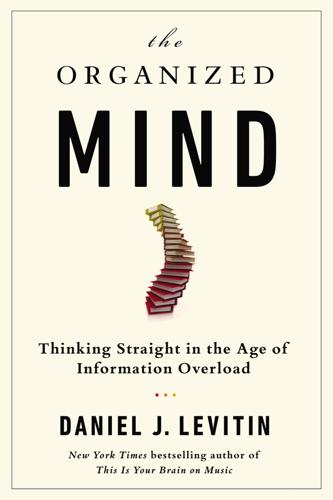
The Organized Mind: Thinking Straight in the Age of Information Overload
by
Daniel J. Levitin
Published 18 Aug 2014
DARPA created the Internet (more precisely, they designed and built the first computer network, ARPANET, on which the current World Wide Web is modeled). At issue was how the United States might solve large-scale problems of national security and defense, and to test the country’s capacity for mobilization during times of urgent crisis. Replace “balloons” with “dirty bombs” or other explosives, and the relevance of the problem is clear. On a predesignated day, DARPA hid ten large, red weather balloons, eight feet in diameter, in various places around the country. The $40,000 prize would be awarded to the first person or team anywhere in the world who could correctly identify the precise location of all ten balloons.
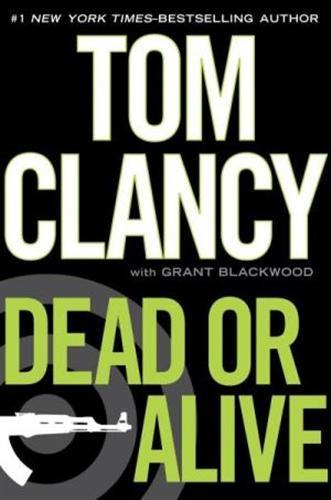
Dead or Alive
by
Tom Clancy
and
Grant (CON) Blackwood
Published 7 Dec 2010
Spread along Russia’s northern shipping routes were some 380 RTG—radioisotope thermoelectric generator—lighthouses, the vast majority of which were powered by strontium 90 cores, a low-level, heat-producing radioisotope with a half-life of twenty-nine years and an output capacity ranging from a few watts to eighty watts. Distributed among the four RTG models— Beta-M, Efir-MA, Gorn, and Gong—were a handful designed to use a core of a wholly different sort: plutonium-238, a material that, unlike strontium, which could at worst be used in the construction of a dirty bomb, was of fissionable quality. However, the amount of salvageable core material alone would not be sufficient for their purposes. A second source was required. This had been Adnan’s task. One for which he and his men had given their lives. The prize they’d recovered from the abandoned icebreaking ship on that godforsaken island had been the final piece of the puzzle: an OK-900A pressurized water reactor core containing 150 kilograms, or some 330 pounds, of enriched uranium-235.
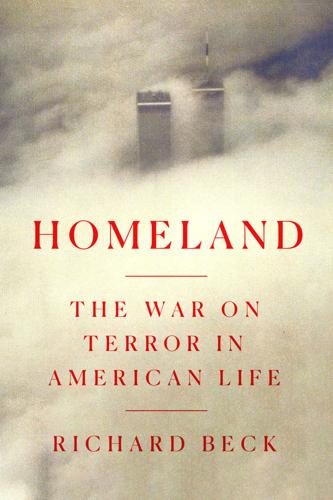
Homeland: The War on Terror in American Life
by
Richard Beck
Published 2 Sep 2024
It meant zero successful major terrorist attacks, ever again. Given how few al-Qaeda operatives were involved in the operation and how simple their tools were (knives, box cutters, a few months of flight school), you weren’t going to be able to prevent future attacks just by keeping track of who was shopping for the components of a dirty bomb. To really do the job right, you would have to surveil almost everyone to some extent; at a bare minimum, you needed to have the ability to surveil anyone at a moment’s notice. It was nearly an article of faith among the national security establishment that September 11 would have been prevented if only they had been able to “connect the dots,” as though everyone in Washington had simultaneously forgotten the truth behind the old saying about how hindsight is twenty-twenty, which is that the future is inherently unknowable.
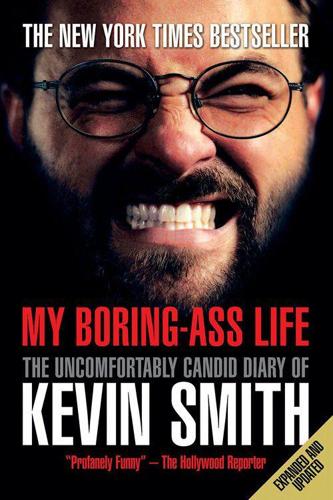
My Boring-Ass Life: The Uncomfortably Candid Diary of Kevin Smith
by
Kevin Smith
Published 24 Sep 2007
On the way home, I call Jenno and tell her I’m in, but that I think she’s crazy for thinking I could pull this off, when this town’s lousy with real actors. She tells me I’ll be meeting with the director on Monday. I get home, dump the booty on the respective booty-getters, and settle in in front of the TiVo to eat my low-carb Steakhouse Beef Dip wrap and dig into a little low-carb ice cream. We opt for Dirty War, an HBO movie on DVD about a dirty bomb going off in London that I picked up the other day. Before we know it, it’s three, and Harley’s home. Jen and Harley bomb around for a while, and I try to get through the now-300 emails that’re sitting in my inbox. Suddenly, Harley decides it’s present time. We head to the kitchen, where Byron, Gail, and Harley’s gifts are all spread out.

Gnomon
by
Nick Harkaway
Published 18 Oct 2017
No, really, there’s nothing. Imagine: Hi, it’s Constantine Kyriakos. I was on the cover of GQ last month. Well, okay, it was German GQ. It doesn’t matter. I’m a finance genius, okay? And something bad is happening to the market, something so bad I think there may be a national security threat to your country, like a dirty bomb or something—Hello? Hello? Hello? … Guten tag, hier Constantine Kyriakos. Ich möchte etwas ganz wichtiges erzählen. Eine Katastrophe kommt. Gerade jetzt. Ja. Jetzt. Ich weiß nicht genau. Eine Katastrophe. Vielleicht finanziell. Es wird finanzielle Folgen haben. Ich—Hallo? Hallo? … Ni hao … Buenos días … Hi, look, I’ve called a couple of your colleagues, the State Department and Homeland Security, they hung up on me but you’ve got to listen: there’s a serious problem and I think you should put some planes in the air, I think maybe you’re being attacked … Well, because the markets are crashing … Well, no, but they’re about to … Well, I know because I have a magic shark in my head and I can see her fin in the stock ticker when things are going to hell—Are you still there?
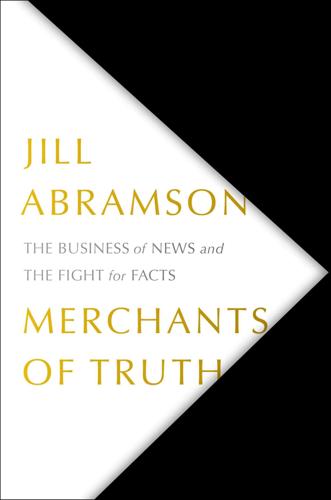
Merchants of Truth: The Business of News and the Fight for Facts
by
Jill Abramson
Published 5 Feb 2019
An early recruit, Eddy Moretti, answered the call, and soon he, Smith, and Jonze were lunching together at a Williamsburg diner nearby. Impressed by Smith’s vividly told stories of exotic locales, Jonze offered some advice. “You guys are going around the world doing these insane stories, buying dirty bombs in Bulgaria or wherever,” he said. “I hope you’re bringing a video camera.” Of course they were, Smith bullshitted, then got the check, ran back to his office, and ordered a bunch of equipment. At 36, Jonze already boasted a dazzling curriculum vitae as a filmmaker, directing critically acclaimed movies such as Being John Malkovich and Adaptation.

Total Recall: My Unbelievably True Life Story
by
Arnold Schwarzenegger
and
Peter Petre
Published 30 Sep 2012
It was a massive preparedness test for every possible disaster and terrorist attack. We tested everything: planning, procedures, communications, evacuation routes, hospital readiness, and federal, state, and local cooperation. Each year we planned for a different type of emergency. The first year, it was a terrorist attack using “dirty” bombs designed to contaminate multiple ports and airports up and down the state with radioactivity. Other years, we tested for massive earthquakes, floods, and more terrorist attacks. These were the largest, most comprehensive emergency response exercises in the country, involving literally thousands of participants statewide.

Wanderers: A Novel
by
Chuck Wendig
Published 1 Jul 2019
“You manipulative prick, you have no idea what you’ve done, do you?” “I kept these people out of military control. I ensured that the shepherds could remain with their friends and their families. It’s a shame you don’t see it that way.” “I’ll tell you what I see, Doctor Ray: I see a weapon walking free. Like a dirty bomb in a wheeled suitcase rolling down a hill toward a busy intersection, and here I am, the only sonofabitch waving his hands and trying to warn everybody. But then people like you come along and ask everybody to remain calm, stay where you are, don’t make any sudden moves. And I just see that bomb rolling closer and closer and closer.”
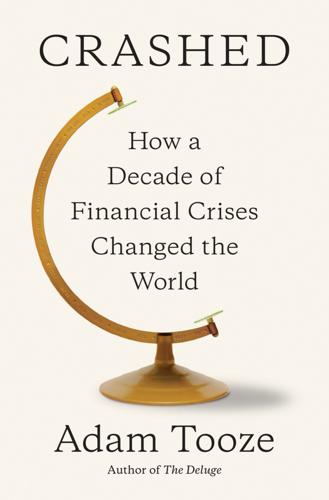
Crashed: How a Decade of Financial Crises Changed the World
by
Adam Tooze
Published 31 Jul 2018
The entire eurozone periphery would be in peril once more and the Eurogroup would have to take Greece’s demands seriously for fear of panic spreading through the markets. Given Greece’s weakness, it is melodramatic to describe this as the nuclear option. But what Varoufakis was preparing was certainly a dirty bomb. To force the Eurogroup to negotiate in earnest, Greece would threaten to unhinge the fragile political balance on which Draghi’s stabilization of the entire eurozone depended. It would deliberately unleash civil war in the eurozone. Due to legal technicalities, it was in fact unclear whether a Greek default would hit the ECB directly or simply Greece’s own central bank.

A History of Modern Britain
by
Andrew Marr
Published 2 Jul 2009
Into the Furnace Blair’s biographer Anthony Seldon rightly emphasizes how worried Blair was about Saddam Hussein and weapons of mass destruction long before Bush became President, or decided to launch his war. This was not simply something Blair worried about privately. He spoke of it again and again. He was particularly worried about a nuclear-enhanced ‘dirty bomb’ being used by Iraqi-supported terrorists. By now his earlier experiences of Saddam, and Milosevic, and to a lesser extent Mullah Omar of the Taliban, as well as his personal contact with leaders he liked, such as Bush and Russia’s Vladimir Putin, meant that for Blair foreign affairs was personal.

Behave: The Biology of Humans at Our Best and Worst
by
Robert M. Sapolsky
Published 1 May 2017
To be facetious, this would be like not including Quakers in one’s analysis of violence because no one studying them had published something along the lines of “Estimated per-capita rates of death in Quaker communities due to gangland-style executions in nightclubs: zero; due to targeted drone missile strikes: zero; due to dirty bombs made with stolen plutonium: zero . . .” * When Chagnon was a guest lecturer in an anthro class of mine when I was an undergrad, students dressed up as Yanomamö in a salute to him (hell no, I didn’t—I’m too inhibited); apparently it was standard fare for anthro students to crash his road-trip lectures that way, which was probably totally irksome after a while, as he’d have to act all surprised and then pose for pictures with them.
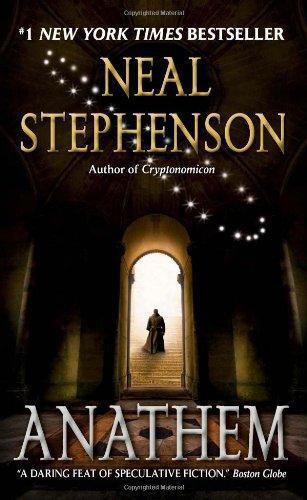
Anathem
by
Neal Stephenson
Published 25 Aug 2009
It works, but it’s dirty and it destroys a lot of stuff that doesn’t need destroying. Better to nuke the people only.” “How do you manage that?” “The amount of fissile material you need to kill a person is microscopic. That’s the easy part. The problem is delivering it to the right people.” “So, is this a dirty bomb type of scenario?” “Much more elegant. They designed a reactor the size of a pinhead. It’s a little mechanism, with moving parts, and a few different kinds of nuclear material in it. When it’s turned off, it’s almost totally inert. You could eat these reactors by the spoonful and it would be no worse than eating one of Suur Efemula’s bran muffins.
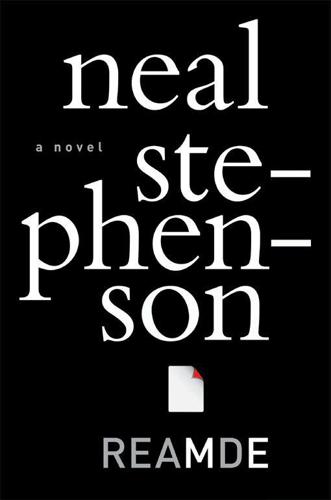
Reamde
by
Neal Stephenson
Published 19 Sep 2011
Jones spoke in a tired, even dispirited tone of voice, which seemed to match the overall mood of the jihadists. Returning to her cabin, Zula considered it. A few hours ago, back in Xiamen, Jones had been convinced that they would be able to fly the jet to some friendly location in Pakistan, pick up a cargo of Bad (perhaps a dirty bomb?), then turn the jet around and fly it straight to some kind of Armageddon in Las Vegas. Instead, because of the intricacies of the international rules around flight plans and restricted airspace, and because of the way Pavel and Sergei had shown some backbone at a critical moment, he had been forced to settle for a hastily patched-together plan that had gotten them safely out of China but that would apparently lead to their running out of fuel many hundreds of miles short of the U.S. border.
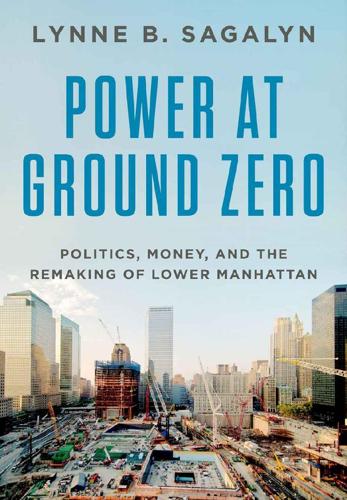
Power at Ground Zero: Politics, Money, and the Remaking of Lower Manhattan
by
Lynne B. Sagalyn
Published 8 Sep 2016
Bagli of the Times, “illustrates the tension inherent in the entire [then] $3.2 billion project: how to create a skyscraper that is at once iconic and defended against terrorism, while also containing costs.” Will the tower withstand an attack? “Who knows what terrorists will do?” remarked Childs. “Do you design for a small bomb, dirty bomb, small aircraft? Yes, if a plane flew into the new building the building would respond differently [than] the twin towers. … But the place to solve these problems is at airports, not in buildings, or all we’d have would be concrete towers.”39 Downtown had regained its “polestar.” The tapering tower, Childs told Dunlap, played “a necessary civic role of being the ‘answering spire’ to the skyscrapers of Midtown.”
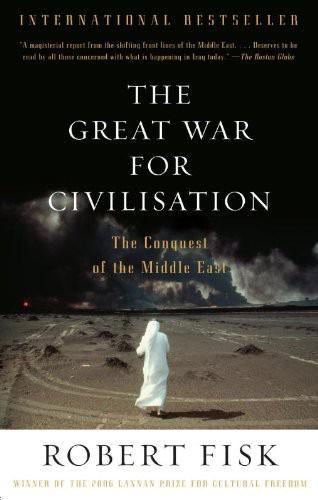
The Great War for Civilisation: The Conquest of the Middle East
by
Robert Fisk
Published 2 Jan 2005
Needless to say, there was no mention of former UN weapons inspector and ex-Marine Major Scott Ritter, whose own tiny volume opposing the war—War on Iraq: What Team Bush Doesn’t Want You to Know—was a mere ninety-six-page flea-bite on the back of the pro-war literature churned out in Washington. As this material came off the presses, the latest fantasies were seeping out of Washington and London. Stories of further attacks—on the Lincoln Tunnel and the Golden Gate bridge in the States—were mixed with all the scare stories Britons had been fed over previous weeks: smallpox, dirty bombs, attacks on hotels and shopping malls, a chemical attack on the Tube, the poisoning of water supplies, “postcard target” attacks on Big Ben and Canary Wharf, the procurement of 5,000 body bags, 120,000 decontamination suits, survival classes for seven-year-old schoolchildren, new laws to quarantine Britons in the event of a biological attack.